CHANIE
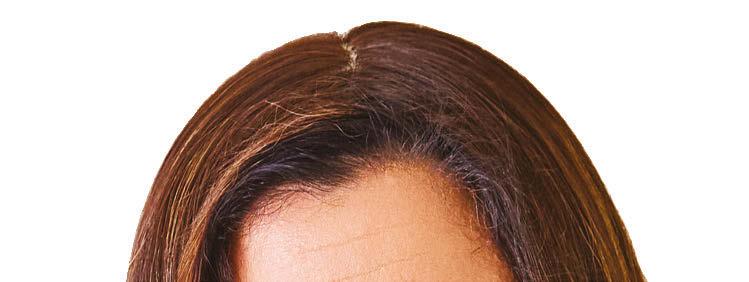



CHANIE



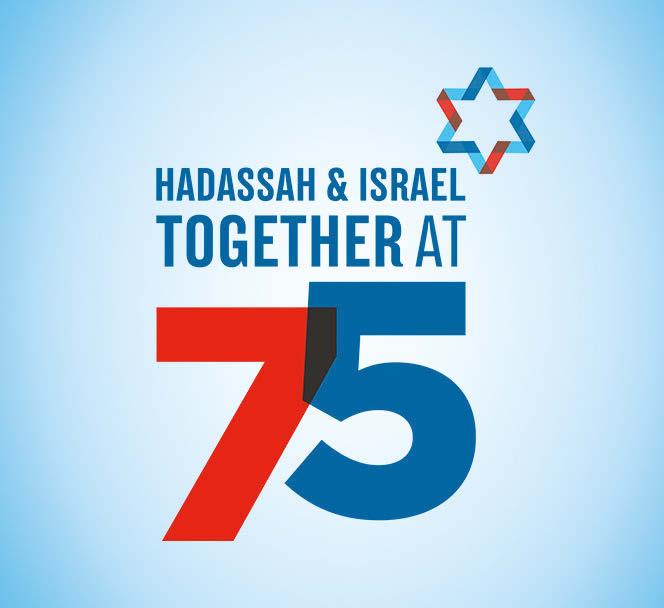

Israel is the place to be this year and Hadassah is the perfect travel partner. From families, mothers, daughters and friends to first timers, attorneys, cultural aficionados and more, we have unforgettable journeys through ancient and modern Israel for everyone. Whichever you select, you’ll get to witness Hadassah’s impact in action. And connect with friends old and new.
Early bird discounts of $600 are available. Space is limited. Register today!
Hadassah Summer Family Tour to Israel
Led by Carol Rosenthal | June 21–July 1, 2023
Hadassah Israel Tour Through a Legal Lens
With Attorneys and Judges
Led by Randa Maher | July 5–16, 2023
Hadassah Tour of Israel for First Timers
October 11–22, 2023
Hadassah Israel Together: Mothers, Daughters & Friends
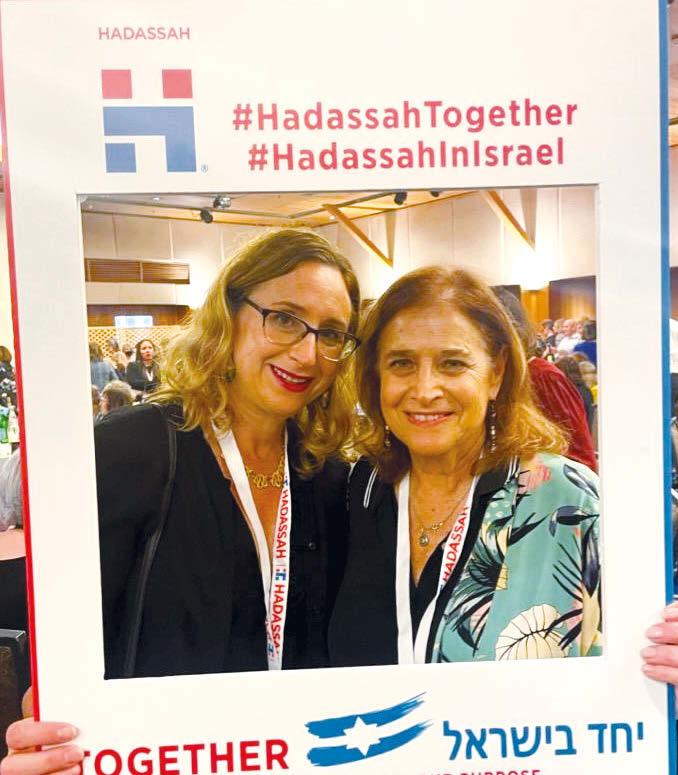
Led by Ellen Hershkin & Lisa Hershkin Roth | October 24–November 3, 2023
Hadassah Israeli Cultural Curiosity Music, Art & Cuisine
Led by Peg Elefant & Valerie Lowenstein | November 5–15, 2023
Hadassah Keepers of the Gate Tour to Israel
Led by Linda Freedman Block & Roz Kantor | December 10–19, 2023
Hadassah Winter Family Tour
December 21–31, 2023
Find out more by visiting events.hadassah.org/travel-march23 or calling Ayelet Tours at 1-800-237-1517.
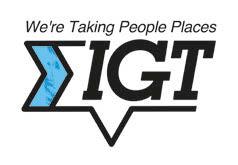
 HADASSAH, THE WOMEN’S ZIONIST ORGANIZATION OF AMERICA, INC.
HADASSAH, THE WOMEN’S ZIONIST ORGANIZATION OF AMERICA, INC.


Like many Holocaust survivors, Sheryl Abbey’s mother buried her early traumas. Like many children of survivors, Abbey has had an insistent need to uncover the past. After a trip to the Dutch village of Westbroek, where her mother’s family survived part of World War II in hiding, she has been able to fill in some details and personally thank those whose families helped protect her mother and grandparents.
“Mizrahim don’t need a history book. We don’t need a memoir. We need a manifesto,” Mazzig, an author, activist and influencer, writes in an adapted excerpt from his new book. “This is the story of a significant and influential ethnic group that has gone virtually unrecognized in the West.”

The Busy in Brooklyn blogger and author of the newly released cookbook Totally Kosher wants to bring love back into the kitchens of Jewish women— and push back against their faces being erased from Orthodox publications.
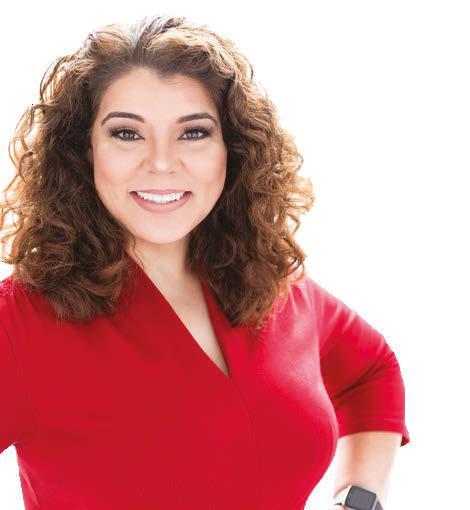
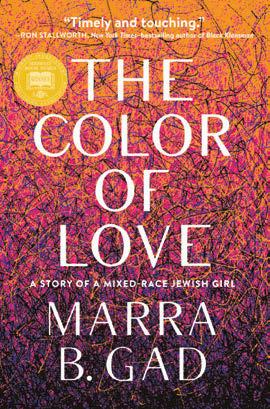
 By Diane Cole
By Diane Cole
At a time when a growing number of American Jews identify as Black, Hispanic, Asian, multiracial or other ethnicities, several women of color with Jewish heritage are writing moving accounts of their experiences.
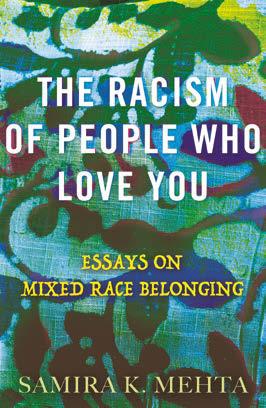


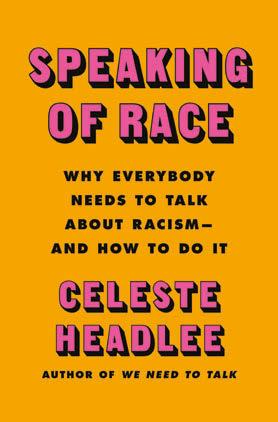

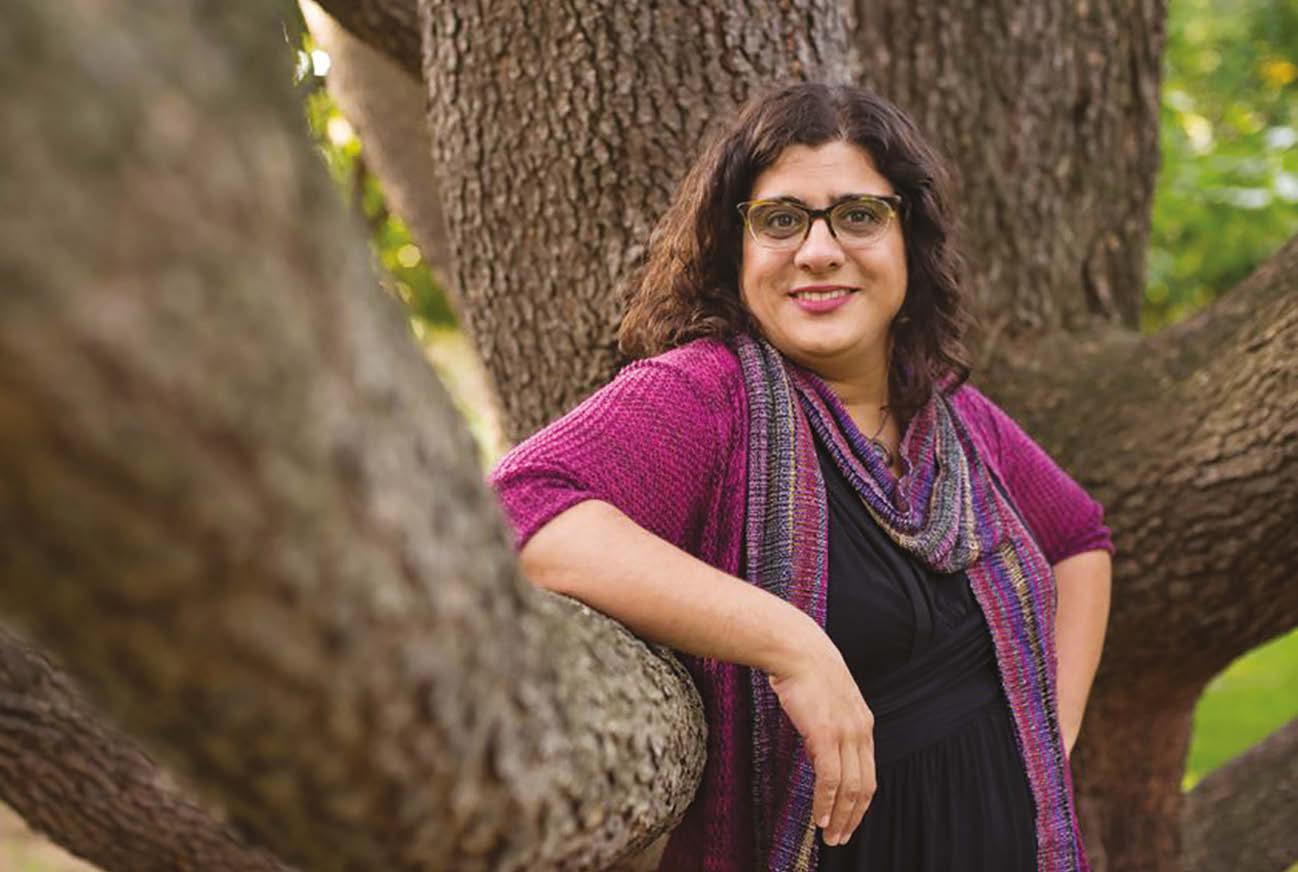
12 COMMENTARY On Passover, the Torah’s message of freedom
14 ESSAY Fostering Baby T
26 HEALTH
Rethinking egg donation and freezing
34 TRAVEL Turkey’s Jewish delights
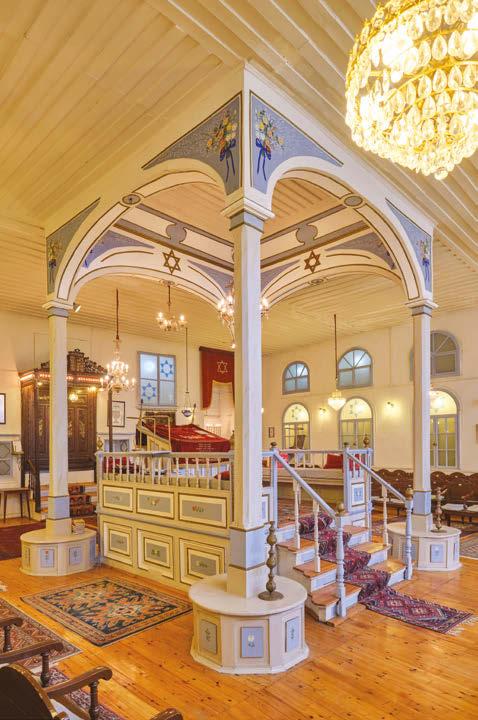
42 ARTS
• ‘ The Sassoons’, on view in Ne w York City

• Playing RBG on stage
48 BOOKS
• Pam Jenoff’s latest World War II saga

• Kantika , a Sephardi

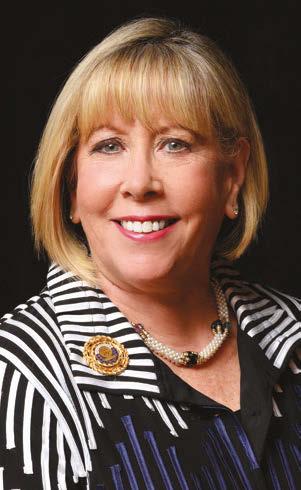
For generations, jewish organizations and individuals have been at the forefront of fighting discrimination against minor‑ ities. Our teachings about how to treat the stranger in our midst, not to mention our own experiences of marginalization and oppression in countless eras and lands, have rein forced that commitment.
As we approach Passover, it is comforting to imagine that Jewish institutions and people are natu rally immune to intolerance, fortified against the impulses that have been at the root of our own hard history. But reality often trails imagination.
We live in an era of diversity awareness. The ingathering of exiles is Israel’s crowning achievement, but there have been hurdles in integrat ing Ashkenazi, Sephardi and Mizrahi Jews since the state’s early days. And in more recent decades, the challenge has applied to those from Ethiopia and the former Soviet Union as well.
And while America may be plu ralistic, most of our immigrant forebears came from monolithic Jew ish environments. To this day, the vast majority of American Jews have Ashkenazi backgrounds, and some are susceptible to seeing this family heritage as the Jewish norm.
But the Book of Exodus makes clear that our forebears leaving Egypt were “a mixed multitude,” not only descendants of Jacob’s sons but also intermarried couples and Egyptians who at the hour of our liberation threw in their lot with the Jewish people. Later in the Bible, Ruth cre ated the template for conversion when
By Rhoda Smolowshe told Naomi, “Your people will be my people, and your God my God.” Diversity itself comes in many forms. “When I converted to Juda ism,” said Michele Norris, president of Hadassah’s Tampa Ameet Chap ter in Florida, “one of the questions was, ‘You are a woman, you are Black, and now you want to be a Jew?’ I answered with a resounding ‘Yes!’, but there was a segmentation in terms of who I was....
“I was very well accepted in my synagogue,” she continued, “but when I went to places where people didn’t know me, there were always questions on people’s faces: ‘Is she Jewish? She doesn’t look Jewish.’ And I would like people to understand these dynamics, that as a woman of color I stand at a vulnerable juncture of potential sexism, racism, antisemi tism and religious intolerance.”
Norris made her observation in a virtual Hadassah event entitled “American Zionist Women of Color,” in which four Jewish women dis cussed their struggles and resilience. Another participant, Sabrina Kerbel of Hadassah Southern California, recalled that growing up, teachers in her Jewish school in Toronto told her that her family’s customs from India were not only different, but wrong. (The fascinating panel dis
cussion, recorded in October 2020, is on the Hadassah website. Hadassah Magazine will be hosting a new conversation with Jewish women of color on March 16, see details on page 49.)
Hadassah was founded to address Jewish vulnerabilities, and that includes the friction that often comes with diversity. The modern era of mass Jewish migrations, reconnection and new blood has offered us the opportunity to fully embrace who we were and who we are.
As a relatively new nation on the cusp of celebrating its 75th anniver sary, surrounded by hostile neighbors who are kin to many of its non Jew ish citizens, multicultural Israel faces both the necessity and challenge of fostering equality among Jews as well as between Jews and Arabs liv ing in the state. We can be proud that Hadassah has long been a leader not only in equal access, service and employment in our institutions but also in creating environments where Arabs and Jews can meet in mutual respect and shared humanity.
There is no question that shared space in Israel is expanding—from employment and business settings to political cooperation and friendships. Hadassah encourages this growth by highlighting Arab Jewish coexistence in Israeli society, as we did in “The Branch,” a podcast series we spon sored for several years.
During Passover, let us remember the mixed multitude from which we come, as we fully celebrate the diver sity within and around us. A joyous Pesach to all!
We are thrilled to share our new Tree of Healing Gift Program featured on a beautiful glass wall, within the Round Building’s Promenade entrance.
Tree of Healing is visible to all who enter — and on each of its 360 glass leaves will be etched the name of a donor who has made a new gift* of $10,000. Take part in this exciting Tree of Healing opportunity commemorating the rebirth of Hadassah Ein Kerem’s Round Building. Please contact Miki Schulman, chair, 360° of Healing, The Full Circle Campaign, mschulman@hadassah.org or your Major Gifts Officer.

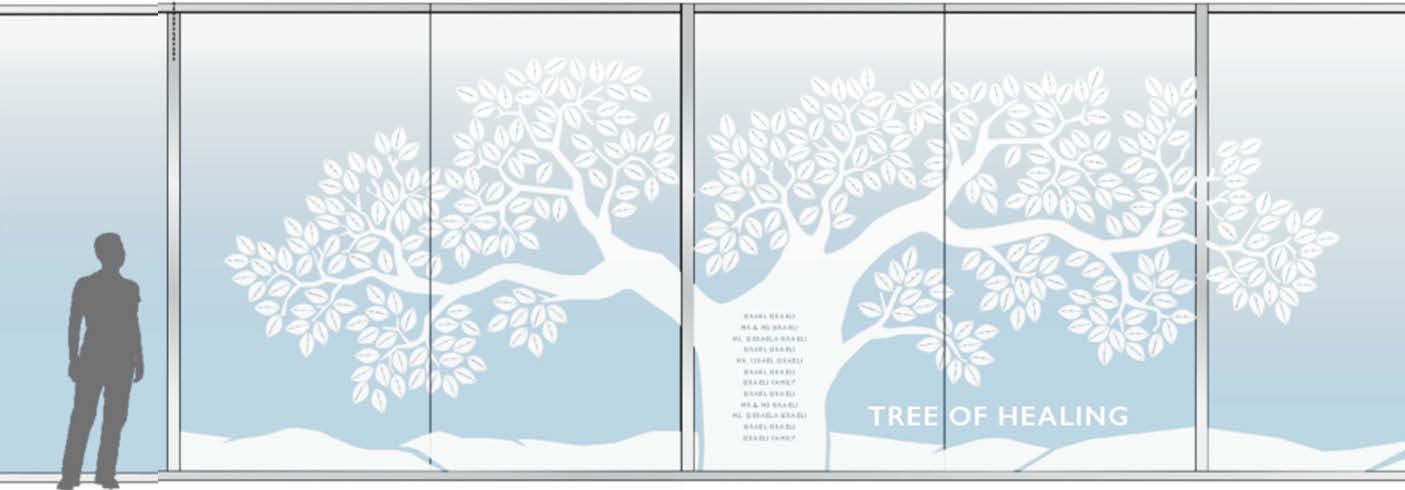
*Gifts may be paid over two years. Available to individuals only.


CHAIR Marlene Post
EXECUTIVE EDITOR Lisa Hostein
DEPUTY EDITOR Libby Barnea
SENIOR EDITOR Leah Finkelshteyn
DIGITAL EDITOR Arielle Kaplan
EDITOR EMERITUS Alan M. Tigay
DESIGN/PRODUCTION Regina and Samantha Marsh
Roselyn Bell
Ruth G. Cole
Nancy Falchuk
Gloria Goldreich
Blu Greenberg
Dara Horn
EDITORIAL BOARD
Ruth B Hurwitz
Carmela Kalmanson
Francine Klagsbrun
Anne Lapidus Lerner
Curt Leviant
Joy Levitt
Bonnie Lipton
Marcie Natan
Nessa Rapoport
Sima Schuster
Susan S. Smirnoff
Barbara Topol
HADASSAH NATIONAL PRESIDENT Rhoda Smolow
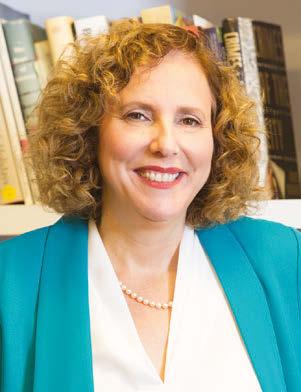
ADVERTISING
Celia Weintrob, Advertising and Marketing Manager
Phone: (212) 451-6283
Email: cweintrob@hadassah.org
Randi O’Connor, Advertising Sales Associate Phone: (212) 451-6221
Email: roconnor@hadassah.org
Sara Ruderman, Ad Sales Representative
Phone: (585) 233-2050
Email: adsales.hadassah@gmail.com
CHANGE OF ADDRESS/MEMBERSHIP INQUIRIES
800-664-5646 • membership@hadassah.org
TO SUBSCRIBE DIRECTLY hadassahmagazine.org/subscribe • (212) 451-6283
LETTERS TO THE EDITOR letters@hadassah.org
EDITORIAL INQUIRIES
(212) 451-6289 • magazine@hadassah.org
GENERAL HADASSAH INQUIRIES (212) 355-7900
Hadassah Magazine is published in print bimonthly. © Copyright 2023, Hadassah, The Women’s Zionist Organization of America, Inc. issn 0017-6516. Periodicals postage paid at New York, NY, and addi tional mailing offic es. Postmaster: Send address changes to Hadassah Magazine, 40 Wall Street, New York, NY 10005-1387. Subscription: $36.00.
Member American Jewish Press Association Magazine Publishers of America


Hadassah does not endorse any products or services advertised in Hadassah Magazine unless specifically noted. The acceptance of advertising in Hadassah Magazine does not constitute recommendation, approval or other representation of the quality of products or services, or the credibility of any claims made by advertisers including, but not limited to, the kashrut of advertised food products. Use of any products or services advertised in Hadassah Magazine is solely at the user’s risk and Hadassah accepts no responsibility or liability in connection therewith.
Irecently read hell of a book, a powerful novel by Jason Mott in which the parents of a central character try to teach him to be‑ come invisible to protect himself against the racism they are certain he will encounter as a Black male in America.
The winner of the 2021 National Book Award for Fiction, ripped right from today’s headlines, the book ends with a poignant plea to speak out against racial injustice.
Invisibility and the basic human need to be seen are woven into many of the stories in this issue.
Jews of color often experience a double dose of discrimination. In addition to the prejudice that they may confront in everyday life, they often find it in Jewish spaces. In “A Diverse Jewish Story” (page 48), Diane Cole reviews several new books written by Jewish women of color that shed light on these experi ences and, in some cases, also suggest ways Jewish communities can be more welcoming. (After reading the piece, register for the Hadassah Mag azine Discussion on March 16 that will feature some of these authors. Details on page 49.)
For Hen Mazzig, a Mizrahi Jew ish author and influencer, bias comes from both within the Jewish com munity and outside it. As he explains in an adapted excerpt from his new book, The Wrong Kind of Jew, those who hail from the Middle East and North Africa are invisible to most American Jews and are still perceived by some as inferior citizens in Israel (page 20).
Other segments of the Jewish community also worry about being erased. The subject of our cover story, Chanie Apfelbaum, the Orthodox food blogger behind Busy in Brook lyn, switched publishers for her second cookbook to circumvent the ban on showing images of women that has become prevalent in parts of the Orthodox world (page 38). Apfelbaum also offers some delicious recipes for Passover, which begins with the first seder on April 5.
Other Passover fare includes a commentary by Rabbi Michael Strassfeld linking the holiday’s central theme of freedom to his latest ideas on disrupting Judaism (page 12) as well as a crossword puzzle with clues to the Ten Plagues (page 47).
Soon after Pesach, we begin the series of “Yom” holidays, starting with Yom Hashoah, Holocaust me‑ morial day, on April 18; Yom Ha‑ zikaron, Israel’s memorial day for fallen soldiers and victims of terror‑ ism, on April 25; and Yom Ha’atz‑ maut, Israel’s Independence Day the following day.
To commemorate Yom Hashoah, read Sheryl Abbey’s account of “How a Farming Village Saved My Family” in the Netherlands during World War II (page 16). Also, Ambassador Deb orah Lipstadt talks about her role as special envoy to monitor and com bat antisemitism (page 64). For Yom Ha’atzmaut, look for our upcoming special May/June issue celebrating 75 years of the modern State of Israel.
Meanwhile, I wish all our readers a joyous spring—and Chag Pesach Sameach!
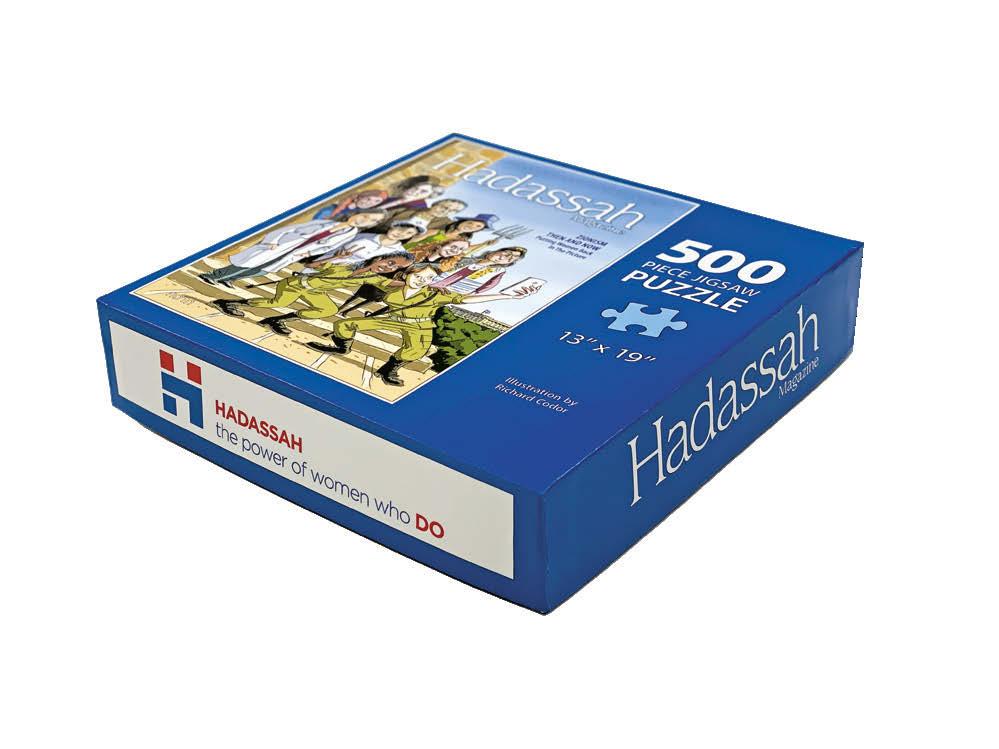


Your Name(s) Address City State Zip Daytime Phone Email Yes, I would like to receive periodic email communications from Hadassah.
With my donation of $250 or more, I would like:
Choose one: Jigsaw Puzzle Cookbook
Send to me at the address above OR— Send as a gift(s) to: 1. Recipient Name Address City State Zip 2. Recipient Name Address City State Zip

I do not wish to receive the jigsaw puzzle or cookbook in exchange for my donation in which event my entire donation will be tax deductible. Check here if you do not want your donation to be acknowledged in the
© 2023 Hadassah, The Women’s Zionist Organization of America, Inc. Hadassah is a registered trademark of Hadassah, The Women’s Zionist Organization of America, Inc. The solicitation disclosure on page 56 is incorporated in this solicitation. Contributions are tax deductible to the extent permitted by law. In accordance with IRS tax laws, only the amount of your gift that exceeds the fair market value of goods and services received in consideration for your gift is tax deductible as a charitable contribution. The fair market value of the puzzle offered in connection with your contribution is $36. This value represents the portion of your gift that is not tax deductible. If you want the entire amount of your contribution to be tax deductible, you may decline the puzzle by checking the appropriate box on the form.
I read “Battling a Silent Killer,” the excellent January/February 2023 article about the threats posed by ovarian cancer. I’d like to reiterate that the two BRCA genetic variants are also associated with breast cancer—and that while men, of course, do not get ovarian cancer, they can get breast cancer as well as pass along either variant to a child.
My husband died of breast cancer and related metastases. His diagnosis revealed the cause as BRCA 2 and alerted us to the possibility of our children inheriting a copy. When we discovered that one of our daughters had the variant, she took preventative surgical action to avoid both breast and ovarian cancers.
Lucy Lehman San Diego, Calif.We owe a debt of thanks to Hadassah National President Rhoda Smolow for her column, “A Medical New Wave,” in the January/February issue. Smolow reminds us that scientific breakthroughs come in seemingly sudden waves. Such is the case with
the mRNA vaccines. Genetic engineering allowed for the discovery and quick development of Covid vaccines. That Hadassah was in part behind this is a point of great pride. Rather than being put off by the vaccines’ rapid development, we should stand ready to embrace them.
Just as the American Zionist Medical Unit rushed to Palestine during World War I with fighting still raging, so should we look to the future to seek out new vaccines to ward off diseases.
Abbott Gorin Springfield, N.J.The November/December 2022 story “Sight for Sore, Cloudy Eyes” couldn’t have come at a more opportune time. A month before reading the article, I underwent routine cataract surgery at a Tel Aviv hospital. When, at my one-week follow-up visit, my visual acuity had not adequately improved, I was diagnosed with Fuchs Dystrophy, a corneal genetic disorder. Apparently, this should have been a relatively “easy” disorder to diagnose—prior to cataract surgery.
It was fortuitous that my Hadassah Magazine arrived that same day. I read about Dr. Itay Lavy and the cutting-edge care being provided by Hadassah’s cornea clinic. I immediately scheduled an appointment with Dr. Lavy. He put me at ease and scheduled a course of action that includes eye drops that have been shown to promote endothelial cell proliferation and to prevent apoptosis, which are the causes of problems associated with Fuchs Dystrophy.

I am fully confident that Dr. Lavy and the Hadassah corneal team will continue to be at the forefront of cutting-edge discoveries to treat this and many other corneal disorders.
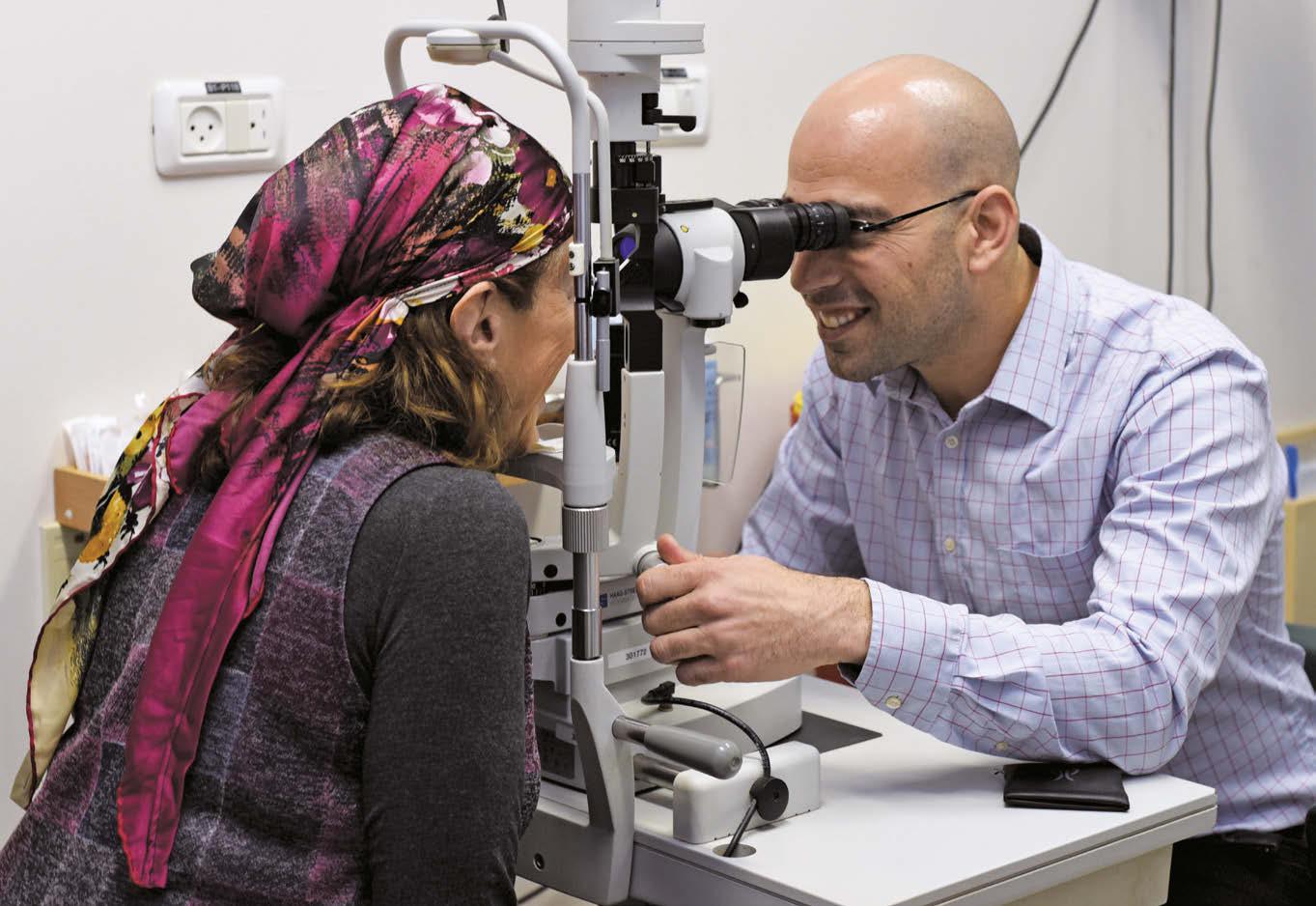 Karen Katzman-Hanan Even Yehuda, Israel
Karen Katzman-Hanan Even Yehuda, Israel
I read the second paragraph of the Baltimore travel story in the January/ February issue in disbelief. Referring to the Inner Harbor, the author wrote that “All of Baltimore gathers here.” That was maybe true 10 years ago, but not today.
I have lived in Baltimore for over 40 years and watched Harborplace being built. It was fun and exciting to spend a Sunday afternoon there, eating at a restaurant, watching the street performers, marveling at the beautiful National Aquarium. But today, many storefronts in the Light Street and Pratt Street pavilions are vacant. There is also a growing incidence of crime.
I hate that this has happened to a place I loved.
Toni Greenberg Reisterstown, Md.I was thrilled to see the article about my hometown of Baltimore. I am a certified nurse-midwife. In 1981, nurse Ann Sober and I opened the Baltimore Birth Center, the first out-of-hospital birth center in the state of Maryland, on Park Heights Avenue. We did so to provide individualized care in a friendly homelike setting with the benefit of nurse-midwifery care. Many of our patients were from the Orthodox community. Women could walk to the center, and we were able to honor their customs and practices surrounding birth.
I have wonderful memories of
We value your interest in Hadassah Magazine and welcome hearing from you. Please email letters to the editor to letters@ hadassah.org . To read more letters, visit us online at hadassahmagazine.org
those times—it truly was an honor to provide care for Orthodox women.
Eileen Ehudin Beard Naples, Fla.I enjoyed the roundup of independent book sellers featured in “People of the Bookstore” in the January/February issue and would like to suggest an addition: Writer’s Block Bookstore, with locations in Winter Park and Winter Garden, Fla. Owner Lauren Zimmerman supports the Central Florida Jewish Book Festival in partnership with local JCCs and brings in many well-known authors (both Jewish and not) for talks and signings.
Emily Raij Winter Park, Fla.I wanted to add something left out of the mention of The Bookstore, the independent book shop in Lenox, Mass., that was among those featured in the magazine’s roundup. The filmmaker of the documentary Hello, Bookstore—which follows the outpouring of support for the store during the pandemic and which was also mentioned in the article—is A.B. Zax, who just happens to be my son!
Susan Zax North Falmouth, Mass.Kudos to Rona Kobell for her poignant essay, “Preserving History,” in the January/February issue that explored how rising sea levels are threatening a Black church congregation on Maryland’s Eastern Shore. That same threat inspired my song “Rowboat”—available on major online music platforms—that extends a Jew-
ish parable (Midrash Rabbah Vayikra 4:6) of interdependence to this environmental crisis.
Larry Lesser El Paso, TexasWith so many books about Jewish heroines, I question the choice to include Ethel’s Song, about avowed communist Ethel Rosenberg, in the November/December 2022 roundup of new children’s books. Rosenberg’s culpability has been minimized to make her a feminist heroine, but Russia would never have gotten the atomic bomb without American spies like her.
Zee Abrams San Diego, Calif.After my mother, Shirley Freedman, a Hadassah life member, passed away in 2021 at the age of 100, I had her mail forwarded to me. And for the first time, I began reading Hadassah Magazine
What a blessing she has left to me. The magazine is educational and inspirational and has impressed me with how modern and advanced Hadassah has become. Many women like me have the impression that Hadassah is an organization for “old ladies.” But at 66, I am neither an “old lady” nor do I continue to hold that impression of Hadassah, thanks to the magazine.
Now, I will become a Hadassah member in my mother’s honor and to join the generations of women who support the people, places and resources that Israel offers to the world.
Michelle Freedman Brill East Brunswick, N.J.While outsized in Jewish memory, Borscht Belt-era resorts and bungalows have largely vanished from New York’s Catskills landscape—a loss documented by artist Marisa Scheinfeld in her popular 2016 photo book, The Borscht Belt: Revisiting the Remains of America’s Jewish Vacationland . The book featured Scheinfeld’s images of the ghostly ruins of hotels and resorts that she had explored during her Catskills childhood in the 1980’s.

Now Scheinfeld aims to further honor that history with the Borscht Belt Historical Marker Project. Beginning this summer and continuing over several years, Scheinfeld and her project colleague, Borscht Belt historian Louis Inghilterra, plan to install roughly a dozen signs documenting bygone Jewish landmarks. Financial support is coming from local municipalities
Engineering student Abel
Hernàndez Eskenazi is committed to using his technological knowhow to promote the rich Jewish
heritage of his native Cuba. A fourth-year student at the Universidad Tecnológica de La Habana, the 22-year-old Eskenazi has developed an app that traces the 500-year history of the island’s Jews, a community that peaked in the 1920s at around 24,000 and now numbers between 500 and 1,000.

“I believe I am very fortunate to belong to a community that has never allowed the flame of Judaism” to be extinguished, he said. “Since the Covid-19 pandemic, the economic crisis has worsened, which has also affected the Jewish institutions of Cuban Jews.
“My hope now,” he added, referring to his app, Judíos en la Historia de Cuba, “is that the Cuban Jewish community will be more connected to its history.”

The app—in English, History of the Jews in Cuba—is the culmi -

and the Jewish American Society for Historic Preservation, a volunteer group that has installed dozens of similar markers across the United States, from small towns like Wild Horse Butte, Utah, to cities such as Memphis, Tenn.
“We want the markers to be in town hubs, where there’s foot traffic,” explained Scheinfeld. “While we want to pay tribute to history, we
nation of Eskenazi’s participation in the 2021-2022 Lauder Fellowship, which is an international student network sponsored by the World Jewish Congress. As part of the program, fellows must create and implement an initiative that uniquely benefits their home communities.
With the help of several university friends, Eskenazi developed the free Spanish-language app, available through Google Play, that traces Cuban Jewish history as well as Jewish contributions to the island’s culture, science, politics and economy. Cuban Jewish history scholar Fidel Babani León helped source content for the app, which features interactive games and a quiz to test your knowledge.
For instance, did you know that Luis De Torres, a crypto-Jew born Yosef ben HaLevi HaIvri, is thought to have been one of the first Europeans to explore Cuba, in 1492?
De Torres arrived with Christopher Columbus, whom he served as Arabic and Hebrew translator for the voyage Columbus thought would be a shortcut to Asia.
The app has been downloaded more than 500 times—or, as Eskenazi joked, “five times more than the enrollment of students [in] the Jewish Sunday school in Havana.” That is encouraging proof, he believes, that non-Jewish Cubans are downloading the app in an attempt to learn about their Jewish neighbors.
Eskenazi hopes his app will inspire pride among Jewish Cubans in their heritage and prompt those who are not affiliated to engage with Jewish institutions—including Cuba’s
also want people to engage with the renaissance of creative life in the Catskills.”
A stone’s throw from the vintage stores, wine shops and eateries, the new generation of Catskills leisure-goers can learn about their vacationing predecessors from the markers. Each one will have information about specific local landmarks on the front, Borscht Belt background on the reverse and a QR code that links visitors’ phones to the website of the Catskills Institute, an academic initiative at Northeastern University that promotes research and education on the importance of the upstate New York region to Jewish American life.

In Monticello, for instance, visitors to the Crawford Public Library courtyard will learn about Kutsher’s, Laurels and other hotels once
Maya Shaposhnik Cadena has always been an animal lover, but it was the premature death of her sister Natalie Shaposhnik’s dog from cancer that inspired her to co-found Vetted, thought to be the only veterinarian-affiliated preventative care app and service.

The sisters, who grew up in Los Angeles with Israeli parents, both made aliyah after high school. They pursued degrees at IDC Herzliya as well as service in the Israel Defense Forces— Cadena as an infantry officer and Shaposhnik in a canine unit, which primarily trains dogs for military situations.
While in the army in 2010, Shaposhnik was matched with Fedor, a Belgian Malinois shepherd dog. While she was pursuing a terrorist in Gaza, Shaposhnik fell into
located nearby. In Swan Lake, a lakeside setting will pay tribute to the erstwhile Stevensville Lake Hotel.

Scheinfeld and Inghilterra plan to inaugurate each installation with Catskills-related film screenings, photography exhibits, concerts and book talks. There is no shortage of such material, as the area’s renaissance has inspired new
interest in its Jewish cultural heritage.
“Timing is everything,” Scheinfeld noted. “We’re trying to create something with longevity—celebrating an era that’s important not only to Jews, but also to American culture.”
—Hilary Danailovaa ditch and sprained her ankle. Fedor chased the terrorist, circled back to the ditch, then ran to the IDF base to get help. Shaposhnik was rescued and taken to a nearby hospital. When her service ended, she was allowed to bring Fedor home with her. In March 2020, Fedor died from cancer at age 9.
Just months later, Cadena, who had returned to the United States, decided that she wanted to work on preventative care for pets. By April 2021, Vetted was born.

CEO Cadena and Ashley Brooks, Vetted co-founder and chief technology officer, had plenty of experience taking their own pets to emergency vet visits, Cadena with her French bulldog, Shor (Hebrew for bull), and Brooks with her black cat, Neko. The two first met at the University of Chicago Booth School of Business Entrepreneurship program.
“We wanted to build a company that could empower pet parents through the medical community,” said Cadena, who recently moved
from Chicago to Miami. “Pets need preventative care like humans, more so because they have a shorter life span. One vet visit a year is like humans going to the doctor once every 10 years,” said Cadena, who researched her idea at the Veterinary Emergency Group in Lincoln Park in 2020. The attending veterinarians told her that most emergencies, from oral disease to digestive ailments, anxiety and arthritis, were preventable with proactive home care.
Vetted, which already has thousands of subscribers who pay $24 a month, is staffed by a team of veterinary professionals 24/7. It guides pet owners through ongoing home care: dental, skin and grooming issues, digestive care, mental health and hip and joint care.
Most recently, Vetted opened two in-person wellness clinics in Chicago, and plans to expand further.
Vets call prevention “compliance,” said Cadena, “because that’s how crucial it is to our pets’ health.” —Rahel
Musleah Vetted co-founders Maya Shaposhnik Cadena (far right) with her French bulldog, Shor, and Ashley Brooks with Neko the catFifty years ago, the first Jewish Catalog began a revolu‑ tion in Jewish life. With this do it yourself kit, people for the first time could own their own Judaism and experience the richness and joy that I and the other editors of the Catalog believed would make a stronger Jewish community. The first Catalog, which we summarized as “a compendium of tools and re‑ sources for use in Jewish education and Jewish living,” taught hundreds of thousands of people how to make challah and even matzah, how to tie fringes on a tallit and how to build a sukkah.
The Catalog’s enormous success suggested we were right, and yet, a half century later, I and others have new questions. We know “how” to do all these rituals—or we can Google whatever we need to know.
What we now need—I believe urgently—is “why.” Or more to
the point, why bother at all?
What is the essence of Judaism and Torah? Many people would answer that it is observing the laws, customs and rituals of the Jewish tra dition. In fact, Judaism is, at its heart, a revolutionary tradition that seeks to change rather than uphold or pre serve the status quo.
Nowhere is this clearer than the holiday of Passover. The centrality of the Exodus in Judaism goes beyond the repeated notion that we must remember that we were slaves and therefore treat other people with compassion, espe cially those on the margins of society. As important as the commitment to social justice is, there is something even more important that we learn from this story.

Having left the bondage of Egypt, the people of Israel appear to be free, but they quickly discover the diffi
culties of living in freedom. During their 40 year journey to the Promised Land, the formerly enslaved people constantly express a yearning to return to Egypt, likely because with freedom comes responsibility and the need to make difficult choices.
In a radical text by the 19th cen tury Hasidic master called by the name of his main work, Sefat Emet, the purpose of the revelation of the Torah is actually to help the peo ple be free. In his commentary on the Torah portion Ki Teitze, he writes:
The purpose of all the commandments, both positive and negative, that were given to Israel is so that every person in Israel shall be free. That is why the liberation from Egypt comes first [before the giving of the commandments]. Torah then teaches the soul how to maintain its freedom by not becoming attached to material things. These are its 613 counsels. Every mitzvah/commandment in which the liberation from Egypt is mentioned tells us yet again that by the means of this mitzvah one may cling to freedom…. This is the purpose of the entire Torah.
This teaching suggests that we can be enslaved without ever being in bondage. Most people today are not physically enslaved and yet they are not really free. In the words of the 20th century psychologist Erich Fromm, we often want to “escape from freedom” when we feel bur dened by our fears and insecurities. We can live a life bounded by the lim itations of our expectations, or a life circumscribed by the lack of faith in our abilities.
In the Sefat Emet’s understand ing, Torah is first and foremost about freedom. The Torah is not about 613 commandments but rather 613 coun
sels that teach us how to obtain freedom. For example, he looks at the bibli cal practice of leaving the corners of the field untouched, which the text says is so that the poor can harvest them. For the Sefat Emet, we learn from this practice not to become too attached to material possessions. Our biggest challenge is to take the pre cious gift of life and do as much as we can with it.
The Torah understands the lure of Egypt and how easy it is to become enslaved, how past patterns can keep us chained to unwise or even harmful behavior. Passover reminds us that we were once enslaved and we be‑ came free. This is the real gift of the Exodus—the experience of freedom.
It is with the sefat emet text in mind that I began to write Judaism Disrupted. Too often, Judaism seems disconnected from the issues and challenges in our lives. The traditional liturgy and many of Judaism’s rituals leave us wonder ing what larger purpose they intend to convey. The challenge is to reimag ine those practices as helpful aids to more purposeful lives.
It has become clear to me that we also need new practices that speak to the contemporary moment. In this reframing, each holiday enables us to concentrate on a key aspect of our lives. On Passover, we refrain from eating leavened bread, which is per mitted every other week of the year. This allows us to focus our attention on food itself and the way it often
weighs us down: Do we eat in healthy ways? Do we sometimes binge on snacks, hoping in vain that food will fill an emo tional need? What if, during one meal each day of Passover, we slow down the pace of our eating to help us pay attention to an aspect of daily life that is often challenging?
A “Judaism disrupted” also en‑ visions repurposing traditional prac tices so that we can cultivate inner qualities, such as gratitude, satisfac tion and equanimity. For example, it is traditional to hang a mezuzah on the doorpost of our homes. The mezuzah contains a parchment with selections from the Torah and is intended to remind us to live a holy life. While many Jews have a mezuzah on the front door, it often becomes invisible. A new morn ing ritual would have us pause at the mezuzah as we leave home and acknowledge the blessing of a new day. Remember to take your keys, your cellphone and a moment of awareness as you exit. When you return home, take another moment to leave the distresses of the day out side and enter your home with a sense of peace.
With a mixture of recon structed old practices and ones that are newly cre ated, we can create a Judaism for the 21st century. In so doing, we can replace anger with open heartedness, yelling with listening, judgment with compassion. Freedom from the things that hold us back begins on the indi vidual level but can spread outward into a world that desperately needs redemption.
How does freedom come about
in Egypt? God asserts that redemp tion will come through God’s yad hazakah and zeroa netuyah—a strong hand and an outstretched arm. Usu ally, these words are understood as synonyms—metaphors for God’s power, which brings the plagues and eventually causes Pharaoh to let the Israelites go.
It is true that every struggle for freedom requires a steadfast commit ment to the cause. Even nonviolent causes like the civil rights movement needed people who not only were willing to work for freedom but also were willing to be arrested and even risk their lives by protesting the injus tice of segregation. Struggles for freedom require a yad hazakah—a willingness to stand up and protest and to keep standing up. They also require a zeroa netuyah—an out stretched arm.
An outstretched arm doesn’t have to be another metaphor for a hand of power. It can also be a hand extended to help someone to get up off the ground. It is a hand of welcome, of connection and support. Those hands are just as important as the hand of powerful resistance to injustice. Stand‑ ing together while marching for free dom is how freedom comes about.
Operating both in the wider world and within ourselves, the most important hand to freedom is one’s own—passing over what is and touching what could be.
Rabbi Michael Strassfeld is an editor of the Jewish Catalog series, author of The Jewish Holidays and coauthor with Rabbi Joy Levitt of A Night of Questions: A Passover Haggadah. He is rabbi emeritus of the Society for the Advancement of Judaism in Manhattan and writes a free weekly newsletter on the Torah portion (subscribe@michaelstrassfeld.com). This essay is adapted from his newly published book, Judaism Disrupted: A Spiritual Manifesto for Our Time (Ben Yehuda Press).


Iconsider myself a pretty good mom. My parenting style employs a mix of nurture and benign neglect. I offer advice when asked and no-nonsense truth when needed. I encourage independence and enforce personal responsibility, while being available for snuggles on demand. I try to foster my two sons’ innate creativity and accept them for who they are as individuals.
But I’m no martyr. Once you can pour milk without spilling it, you’re on your own for breakfast. If you run out of clean clothes, you really should have done your laundry sooner. I don’t cook nightly dinners, unless you count boxed macaroni and cheese or chicken nuggets. I value sleep more than anything.
So it may have come as a shock to some who know me when, on the eve of 2023, almost seven years after I had last changed a diaper and five years since I had taught my boys to fold their laundry, my husband, Gabriel, and I welcomed a foster baby into our home.

Though we had a mere 24 hours’ notice of Baby’s T arrival, this was a process nearly two years in the making. It had not been a decision we made lightly. We went through many hours of training, deeply personal interviews and a comprehensive home assessment to obtain licensing through the state of New Jersey, where we live.

There is nothing quite like having children to highlight one’s privileges. When my husband and I needed help to pay for day care when Ezra and
Asher were younger, there were numerous people in our lives we could turn to. When we ached for a weekend away to recharge and refocus, there were trusted family and friends who would happily step in. Between gifts and hand-medowns, it was years before we bought most of the clothing for our kids.
The old adage that “it takes a village to raise a child” really is true. Yet, many people don’t have a village.
In New Jersey alone, there are 6,000 children in the foster care system every year. Children are removed from homes where they experience abuse and neglect, but they are also removed from homes that may be filled with love yet where adults are unable to provide basic needs like heating and running water. All these children deserve to be cared for while they await a fate beyond their control.
Baby t was just under four weeks old when she arrived at our home. And with her came the 3 a.m. feedings I swore I would never do again. I am 10 years older than the last time I did this, and I am exhausted. My brain is foggy, my muscles are sore, my back aches. Yet my heart is bursting.
As I rock Baby T back to sleep in the dark hours of the night, it’s hard to imagine someday saying goodbye to this precious little girl. We don’t know if she will be with us for a few
months or a few years. Essentially, the goal of fostering is reunification with a parent, or if that isn’t possible, adoption, preferably by a family member. Chances are, sooner or later, we will have to say goodbye, and I have fallen in love in a way I didn’t expect.
While I cannot share personal details about Baby T, what I will tell you is that it will break my heart when she leaves. What I will tell you is that she needed us; her village was missing. What I will tell you is that we had the capacity to help. And I will tell you that Baby T is loved by everyone who knows her, even those unable to care for her.
Above all, I know that we will care for her as long as she needs, and then we will continue caring, because whatever happens next, we are now a part of her village.
When a child’s village is missing
|
“With original blessings and readings, gender-inclusive translations, and text-inspired illustrations, Marcia Falk’s Night of Beginnings offers an innovative adaptation of the Passover Haggadah.”
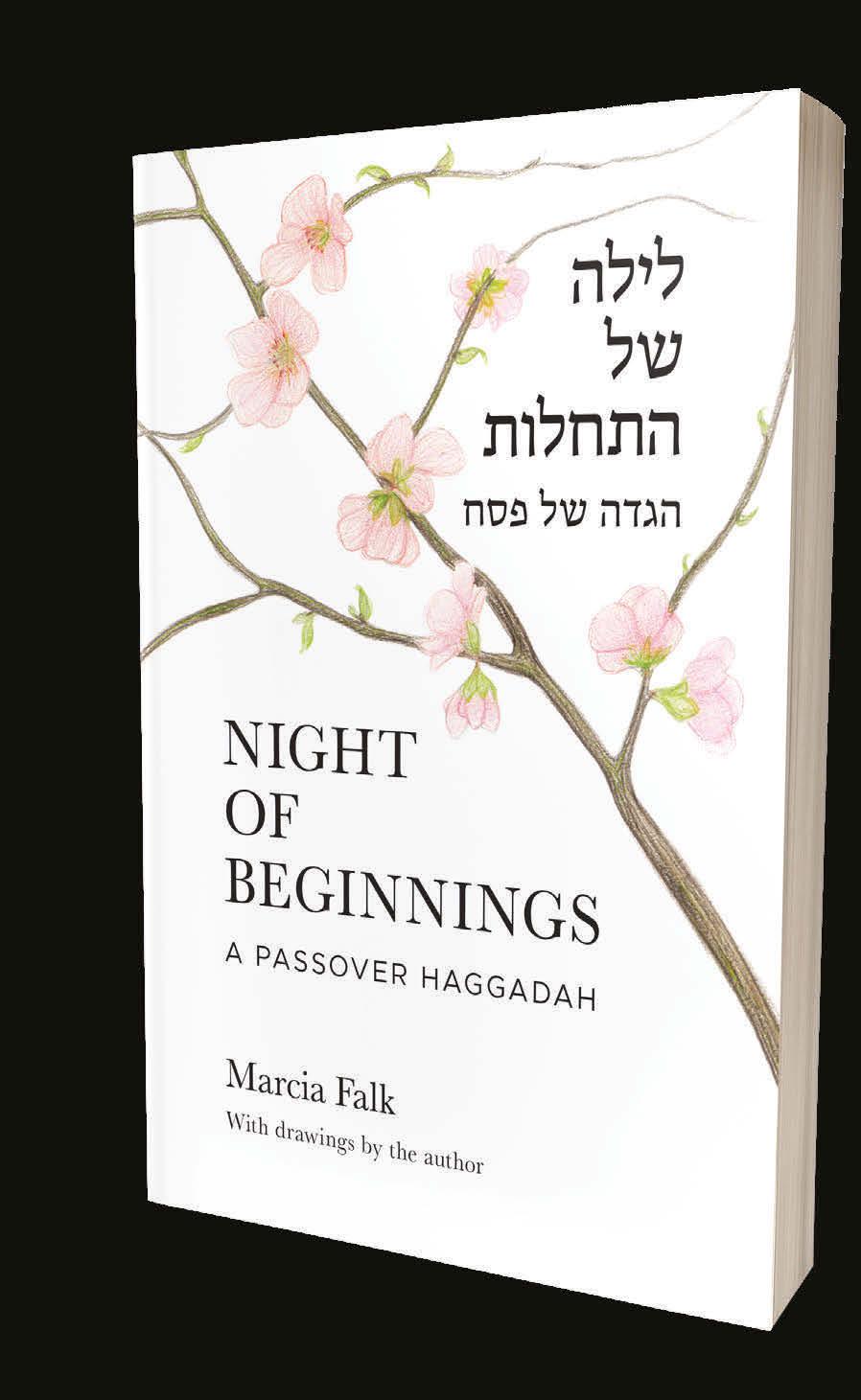
—Jewish Book Council
“The words are delicious read aloud, tactile on my teeth and tongue.”
—Moment
NIGHT OF BEGINNINGS
A Passover Haggadah
MARCIA FALK
$19.95 Paperback
INTIMATE STRANGERS
A History of Jews and Catholics in the City of Rome
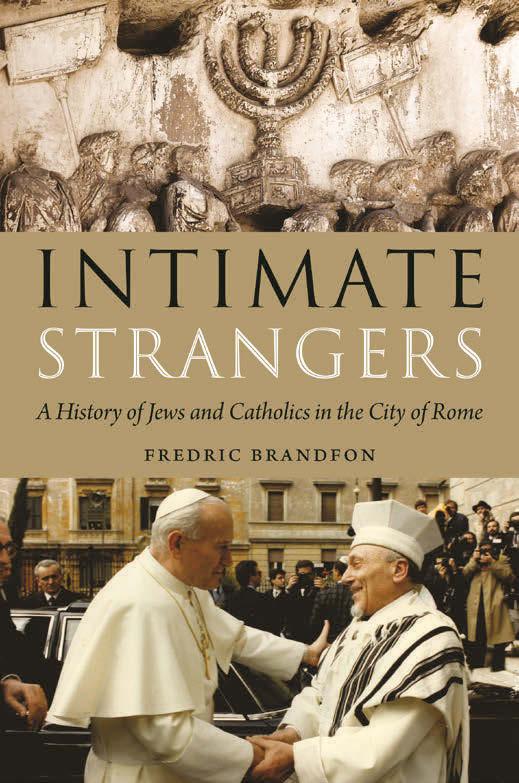
FREDRIC BRANDFON
$36.95 Hardcover
OPEN JUDAISM

A Guide for Believers, Atheists, and Agnostics
RABBI BARRY L. SCHWARTZ
$24.95 Paperback
BIBLICAL WOMEN SPEAK
Hearing Their Voices through New and Ancient Midrash
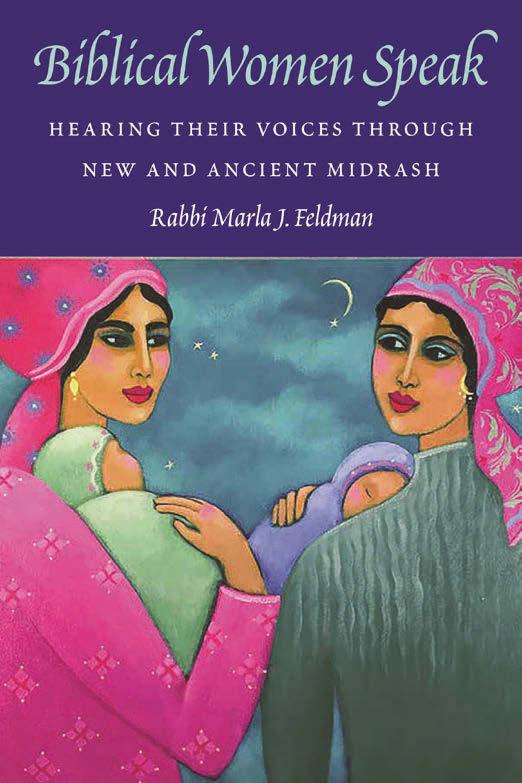
RABBI MARLA J. FELDMAN
$26.95 Paperback
Apetite woman with short gray hair and ruddy cheeks approaches me on the railway platform. This must be Karien, I think to myself, the local history buff who has volunteered to serve as my guide to Westbroek, a Dutch farming village where my mother, Doris Leopold Adler, and her family sought asylum from their native Germany in 1937.
Like many Holocaust survivors, my mother buried her early traumas, in part to focus on the future. Like
many children of survivors, I have had an insistent need to uncover the past. But until now, I have known only the most basic contours of my mother’s childhood.
She was born in Bleichenbach, near Frankfurt, in 1936. Soon after, she, my grandparents, Irma and Willi Leopold, and seven other family members moved to Westbroek, seven miles north of Utrecht.
All were eventually deported to the Westerbork Transit Camp, but my 6-year-old mother and grandpar-
ents managed to escape.
After months on the run, they found a hiding place in the attic of a tiny house on the outskirts of Westbroek, and survived there from 1943 until the war’s end in 1945. The other family members were sent from Westerbork to Auschwitz and Sobibor, where they were murdered. In 1947, the three immigrated to the United States to join my grandmother’s family.
Now, more than 30 years after my mother’s passing, I have come to Westbroek with my husband, Alan,

and three adult children, Alex, Ezra and Ma’ayan, to see if we can fill in the details.
When we arrive, our guide, Karien ScholtenVredenbregt, and several interested villagers lead us to the top of a 15th-century church tower to take in the view. A ribbon of farmhouses stretches along a dike, interrupted only by the slow-turning sails of a windmill. A patchwork of fields and canals extends to the horizon. We descend and walk to a tidy brick house that was once my grandparents’ home and linen shop.
The current owners kindly show us the original building plans and the renovations the house has undergone since the store closed. Karien explains that as shopkeepers, my grandparents had a large network of acquaintances, and they proved crucial to evading the Nazis and their Dutch collaborators.
The next day we delve deeper. Karien has invited those who remember my family to meet at a local history museum. Theo Schouten, a compact, energetic 85-year-old, affec-


tionately describes my mother’s big brown eyes. Jannie Leeflang-van der Vaart, also well into her 80s, tells us that she was my mother’s nextdoor neighbor. They went to school together and slept over at each other’s houses. She remembers the day my mother disappeared.
“None of us knew where Doris went,” Jannie tells us, though given the times, she adds, “we knew better than to ask.”
One memory stands out for Jannie from the time my mother and grandparents were in hiding. “One Sunday, my father insisted we change the usual route of our afternoon stroll” along the Nedereindse Canal, she recalls. “I learned only years later that he knew your family was hiding nearby and rerouted us to spare your mother the heartache of seeing her friends walking outside.”
Jannie hands me photographs of my mother that I have never seen before. Anneke Stekelenburg-van der Vaart, Jannie’s sister and another of my mother’s childhood friends, points to the necklace she is wearing—a gift my mother sent from America. Anita van Mourik, a middle-aged woman looking after her ailing mother, Lies
van Mourik-Herrewijn, tells me through tears that they have made the hour-long trip from their home to Westbroek because her mother has something she wants to give me. Though suffering from dementia, Lies hasn’t forgotten my family.
Lies explains that before my mother and grandparents went into hiding, her parents would sometimes take them in overnight when there were Nazi raids. “After they were liberated,” she says, “your mother showed up with this gift from your grandparents’ store to say thank you.” She hands me a perfectly pressed damask tablecloth.
Emotions swirling, we bike to the most significant stop on our itinerary, the home of Marinus de Graaf, grandson of Marinus de Graaf and Wilhelmina de Graaf-Schouwburg, in whose 150-square-foot attic my mother and grandparents hid for more than two years. Rinus, as he is known, lives in the same remote canal-side location, though he has demolished and rebuilt the original house.
We get acquainted with Rinus and his wife, Fernanda, on their wooden deck, as light-dappled water drifts by.
Then and Now The author’s mother, Doris, as a child with her parents, Irma and Willi Leopold, after they were liberated from hiding in the attic of a home on the outskirts of Westbroek in May 1945. Last year, the author (front) and her family posed by the same bend in the road.Then we slip into a rowboat docked alongside the house, and Rinus rows us past the reeds into what is now a swampy nature reserve, just as his grandfather did for my family when-
ever Nazis scoured the area.

Back at the house, I present the de Graafs with a painting I commissioned from an artist friend in Jerusalem. Beneath an image of a
symbolic family tree, the artist has inscribed the Talmudic saying, “Whoever saves a single life is considered to have saved the whole world,” in Hebrew and Dutch. Rinus and Fernanda are visibly moved.
After reluctant goodbyes, we head back to the village of Westbroek. Along the way, Karien calls to me from her bike.

“This is the spot where your mother and grandparents stopped to have their picture taken on their walk back to the village,” she says.
I recognize the bend in the road from a photograph I cherish, simply captioned “Liberation Day 1945.” I had not known it was taken as my mother and grandparents walked three miles from their hiding place back to town, from captivity to freedom.
As my husband and children huddle with me to replicate the image, I, too, feel a sense of freedom—the kind that comes from knowing. Now I know that my mother had a rich childhood with enduring friendships. I know how, where and because of whom she and her parents survived the war and were able to create a new life in America.
(My grandparents ran a chicken
farm in Vineland, N.J., then operated a boarding house and managed a hotel in Atlantic City. My mother became a dietitian and married my father, Arthur Adler, in 1955. They settled in Bergenfield, N.J., and had three children: my brother, Steven; sister, Brenda; and me.)
I will never know the feeling of being forced to become invisible, or of re-emerging into the world traumatized. But I have closed a circle and, with the help of the kind residents of Westbroek, I have been able to bring together generations of my family at the bend in the road.
Since our visit in april 2022, Karien has continued her search to solve every remaining mystery of my mother’s story. Recently, she discovered that Jo Geurtsen-Boekstal, a friend of my grandparents whose photo hung in their Ventnor, N.J., home, made the lifesaving shidduch with the de Graafs; I hadn’t known how the two families came together.

Other residents of Westbroek have prepared written testimonies to support my request to Yad Vashem to have Marinus de Graaf and Wilhelmina de Graaf-Schouwburg officially recognized as “Righteous Among the Nations.”
And this past November, the village installed Stolpersteine—the brass plaques designed by German artist Gunter Demnig and embedded in front of the last homes in which Holocaust victims lived—to honor the memory of the 21 Jews of Westbroek murdered by the Nazis.
Seven are dedicated to members of my family.
Sheryl Abbey is a writer who made aliyah with her family in 1999. Her new poetry collection is Along the Edge of Absence

When i meet someone new, one of the first things I tell them about myself is that I am Jewish. If the conversation progresses, I mention that I am from Israel and that my mother is Iraqi and my father is Tunisian.
This confuses most people, many Jews included. To be more precise, I am Mizrahi. Mizrahim (plural) is the term for Jews whose heritage comes from the Middle East and North Africa. Yet, few people—Jews and non-Jews alike—know who we are.
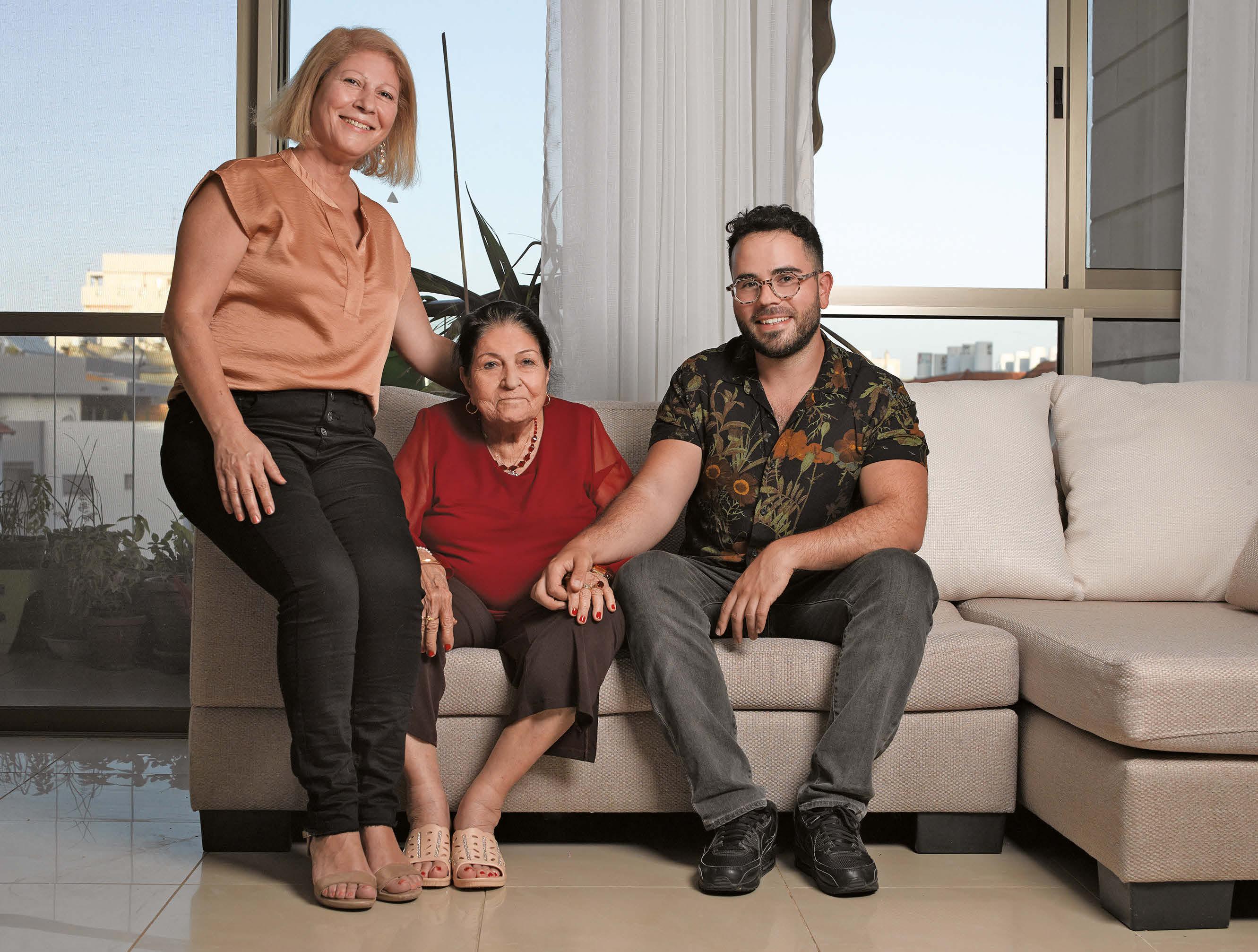
One reason for this is that, for many, Mizrahim are considered “the wrong kind of Jew.” Not only are we unfamiliar even to those with whom we share a long lineage, our culture shatters stereotypes and unspoken rules about what it means to be Jewish. At the same time, our story derails the narrative people want to propagate about Jews, antisemitism and, most controversially, Israel. The prevailing narrative in the West is that Israel is a white European country that oppresses brown people, that Jews don’t belong in the Middle East
and that we came to this land to steal it from others.
I’ve been the wrong kind of Jew my entire life, and not just because of my ethnic background. I don’t keep kosher. My soon-to-be life partner is a non-Jewish man. I rarely go to temple on Friday nights. In fact, I even tweet on Shabbat.
My Mizrahi heritage doesn’t match what most people see as the secular, cultural characteristics of Judaism. For example, while I enjoy bagels, I don’t consider them my cuisine. My meals mostly consist of
some combination of okra, pink beets, pumpkin, hard-boiled eggs, hummus and pita bread. My grandmother doesn’t make matzah ball soup when I’m sick, or even on the holidays. Instead, she cooks an amazing stew and dishes that most of my non-Mizrahi Jewish friends can’t pronounce, like kubbeh, tebit, aruk and sabich.
Not one of my relatives looks or sounds like Bernie Sanders, Sarah Sil-
verman or Larry David. They more closely resemble the Arabs who owned a restaurant that was called an “antisemitic shithole” on an episode of David’s Curb Your Enthusiasm. Whether it is my beard or my olive skin, I always seem to get an extra pat-down and a few suspicious glances when going through airport security; it happens even in my home country of Israel.
I experience prejudice for being Jewish, from both Jews and non-Jews. My life has been threatened by neoNazis—and fellow Jews have critiqued me on the basis of my race and sexuality. There are some who do not perceive me as Jewish at all because of how I look or whom I love.
Who are the mizrahi people, exactly? The majority of Jews in France are Mizrahim. So are many Jews in Canada and South America, and there are scattered populations across the Middle East and Central Asia, from Morocco to Azerbaijan. In total, there are more than four million Mizrahi Jews in the world, making up over 25 percent of the global Jewish population.
The biggest community of Mizrahim is in Israel. We are a majority of the country’s Jews—between three and four million—and our unique culture and history have a significant impact on the country’s food, politics and music. Truthfully, you cannot understand Israel, or what it means to be Jewish in the 21st century, if you don’t understand Mizrahim.
That Mizrahim are the dominant cultural force in Israel today is a giant leap forward from the middle of the last century, when we were expelled from countries like Morocco, Tunisia, Libya, Syria, Iraq, Iran, Yemen and others—places

where we’d lived for centuries. In those countries, we spoke Jewish languages that blended Hebrew with elements of Arabic, Persian and Spanish: Judeo Iraqi Arabic, Judeo Farsi and Ladino.
Our connection to religion is different as well. When and if Mizrahim broke away from traditional religious observance, it wasn’t clean. We didn’t create new denominations, like Reform Judaism, the way the Jews of Germany did; we didn’t follow Conservative Judaism, the response of American Jews to new trends in academic scholarship. Rather, we established a fluid kind of traditionalism, adopting and changing but putting Jewish people, our tradition and our history above all else.
We inspired an entire genre of music from Sarit Hadad to Omer Adam and Ofra Haza that today is more popular than Western-style pop.
When it comes to food—this may seem trivial but is very emotional to me—we were the ones who infused Israeli cuisine with hummus and the Mediterranean flavors the country is known for. We did this not because we wanted to imitate others, but because it was our culture.
Mizrahim brought our Middle Eastern cuisine with us to Israel, just as surely as the European Jews brought their smoked whitefish and bialys to New York City.
The Holocaust is one experience that we sadly share with Ashkenazim. And while the details differ, many in our communities also suffered atrocities. During World War II, Morocco, Algeria and Tunisia were, for much of the war, ruled by the Nazis, either directly or through the French Vichy government. Many were sent to camps, including my Tunisian grandparents, who worked at a forced labor camp and would have been sent

off for extermination had the war not ended just days before the transport was supposed to leave.

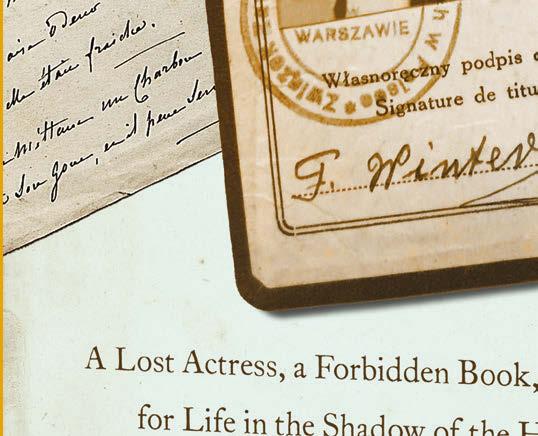
Even in places where the swastika never flew, we were victims of the war. In June 1941, a pogrom known as the Farhud victimized Iraqi Jews. For two days, my grandparents’ community was under attack, and many of their neighbors were murdered, raped and dispossessed. The atrocity was inspired and directed by Haj Amin al-Husseini, a Palestinian Arab nationalist and the grand mufti of Jerusalem in British-ruled Mandatory Palestine. He frequently traveled to Germany, rubbed elbows with Adolf Hitler and was as much an ally to the Nazis as was Benito Mussolini.

One reason why you may not have


heard much about these experiences, and Mizrahim in general, is that most stories told about Jewish history, the Holocaust and Israel don’t include us. We are the blind spot in every narrative about Israel, including stories that Israelis tell themselves. For decades, we were dismissed by the Ashkenazi elites as a primitive variation on the Arabs who have always been the country’s primary “other.”
We’re largely missing from the Zionist depictions of Israel in the Diaspora, too. These stories are always centered around the Israel of David Ben-Gurion, Golda Meir, Yitzhak Rabin and Shimon Peres, all Ashkenazi Jews with a Eurocentric view of the country. As a result, we’re often excluded from the talking




points about anti-Zionism, antisemitism and other rhetoric of the proIsrael community.

If you think Jews are a nefarious cabal of secular, leftist globalists going after your guns, religion and unborn children, it turns out that Mizrahim are actually fairly religious and right wing. If you think Israel is a European, white supremacist, colonial enterprise that appropriates Arab culture, consider the Mizrahim, who are neither European nor white and have for decades been the biggest force behind Israel’s shifting political and cultural landscape. Election studies in recent years show that Israeli towns with a majority of Mizrahi families have supported Benjamin Netanyahu’s Likud Party at a rate

“
Unearthed tells a great story of courage, faith, and survival.”
ABE FOXMAN, National Director Emeritus of the Anti-Defamation League
“Masterfully, [Frank] shows us the importance of connecting to others and of plunging into the shadows in order to forge our way out…. Riveting and deeply moving.
I couldn’t put it down.”
ARIANA NEUMANN, New York Times best-selling author of When Time Stopped
“A gripping and poignant reminder that history and our own legacies are more closely connected than we often acknowledge.”
SENATOR CORY BOOKER
as much as 30 percent higher than majority-Ashkenazi towns.
And if you think all Jews are the beneficiaries of white privilege, Mizrahi Jews aren’t any more white, physically or socially, than the other Middle Easterners who are among those who make this claim. We didn’t grow up with privilege.
We suffered both economic hardship as well as intense discrimination in our countries of origin, and still do today in Israel.
This is my story, the story of someone with a rich, selfconfident identity who, in many ways, has been made to feel invisible in the global conversation about Israel. Yes, I’m also gay,
nationalist, proud, progressive and, of course, Jewish. But the thing about me that really upsets people—which took me years to understand—is that by simply being Mizrahi, I am a
Refresh your holiday table with unique Seder plates, matzah covers, cups, Haggadahs, and more from the Jewish Museum Shop.

living, breathing challenge to everybody’s pet narrative about Israel. Perhaps if I were the only Mizrahi who feels this way, the book I wrote would just be a memoir. But it’s not just me.
Mizrahim don’t need a history book. We don’t need a memoir. We need a manifesto.
Without Mizrahim, the Jewish story is incomplete. It’s more than just our history, cuisine and culture that needs to be understood and recognized.

My story dives deep into the real contradictions of our Mizrahi lives, grapples with the invisibility that taints our experiences and explores concrete ways we can achieve full equality and dignity. The Mizrahi
Explore Passover at Shop.TheJewishMuseum.org
Every purchase supports the Jewish Museum
5th Ave at 92nd St, NYC 212.423.3333
Under the auspices of the Jewish Theological Seminary
Shown: Seder Plate with Illustrated Dishes by Ann Marie Murray, Armenian Seder Plate, Blue Stoneware Star of David Seder Plate by Morgan Levine Ceramics, Light Blue Speckled Stoneware Seder Plate by Rachaelpots, Seder Plate by Isabel Halley‘I EXPERIENCE PREJUDICE FOR BEING JEWISH, FROM JEWS AND NON-JEWS.’
experience cannot be boiled down to a simple assortment of artifacts under plexiglass at a museum. It is a power ful force that we must take out of its case and touch, and maybe even leave a few fingerprints.
While we are not asking for much, some Mizrahim will feel uncomfort
able reading this. They may say that my advocacy for our recognition and respect is bad for the Jewish com munity, or even claim that we should focus on what unites us as Jews even if it results in the exclusion of Miz rahi heritage.
The truth is that Ashkenazi and
Mizrahi are not racial identities. Blackness and Ashkenazi heritage are not opposites. The same goes for Miz‑ rahi—although all of us originated from the Middle East diaspora, we are a multitude of races.

The Jews of Kaifeng, China, origi nate from Iran, so they are Asian and Mizrahi. Sephardi communities cross racial lines as well; while many Sep hardi Jews are from Latin America or North Africa, many others are white skinned with origins in Spain and Portugal.
I’ve argued that Mizrahim share a heritage and identity, but I also be‑ lieve the same goes for me and other Jews of color. We all experience rac ism in addition to antisemitism and have shared experiences within and outside the Jewish community. None of us will see our faces as the “default Jew” on a Jewish holiday card out side of Israel and Jews like us rarely appear in movies or on television.
Jerusalem iconic King David and Tel Aviv’s first luxury hotel, The Dan Tel Aviv - Israel’s members of the “Leading Hotels of the World” a prestigious collection of exclusive hotels that offer unsurpassed splendour .


It is in the best interest of Mizra him to identify as Jews of color and to deliberately join forces with those communities. However, we must overcome major obstacles to get there. The first is colorism. While some Mizrahim are very dark skinned, others have lighter complex ions. The hatred of us is often rooted in orientalism, which is the study of the East, particularly the Middle East, by Western scholars with an out sider, often prejudiced and colonial perspective. This bias is expressed in how other Jews talk down our food as basic and too spicy while eating plates of it and appropriating it, along with our language and traditions.
The second issue is that there is a political schism between Mizrahi Jews and many other Jews of color. Mizrahim, particularly those in Israel, have largely adopted a very right wing political outlook, while many
other Jews of color primarily lean left. It’s important to understand that this is an outcome of our specific traumas.






Since most Jews of the Middle East come from families that have been brutalized and exiled from Arab countries, they tend to be hawkish in their approach toward Hamas, the Palestinian Authority, Iran and those Arab states that support terror against Israel. Young Mizrahim are at war with the very people who murdered and expelled our grandparents. The animosity is deep. I’ve found that this sentiment stretches far beyond Israel and includes my Mizrahi friends in Los Angeles and Great Neck, N.Y.
To get to where we need to be, we Mizrahim must follow the lead of our ancestors, from as far back as the Exodus to the modern-day departure of Jews from Arab lands. In ancient times, they walked across the desert with tattered shoes and huddled in tents without basic necessities because they knew that they deserved nothing less than full equality. More recent generations leaving their birthplaces showed they were willing to do anything necessary to achieve liberation. Today, I’m calling on everyone to follow in the honorable footsteps of our ancestors.
It’s time that the Mizrahi story is told fully and that the rest of world Jewry listens. I call on all to love Mizrahi Jews as much as you love the food that we cook, the music that we compose, the history that we’ve lived, the country that we’ve helped build and the soul we gave to her. If you do this, your love will be reciprocated.
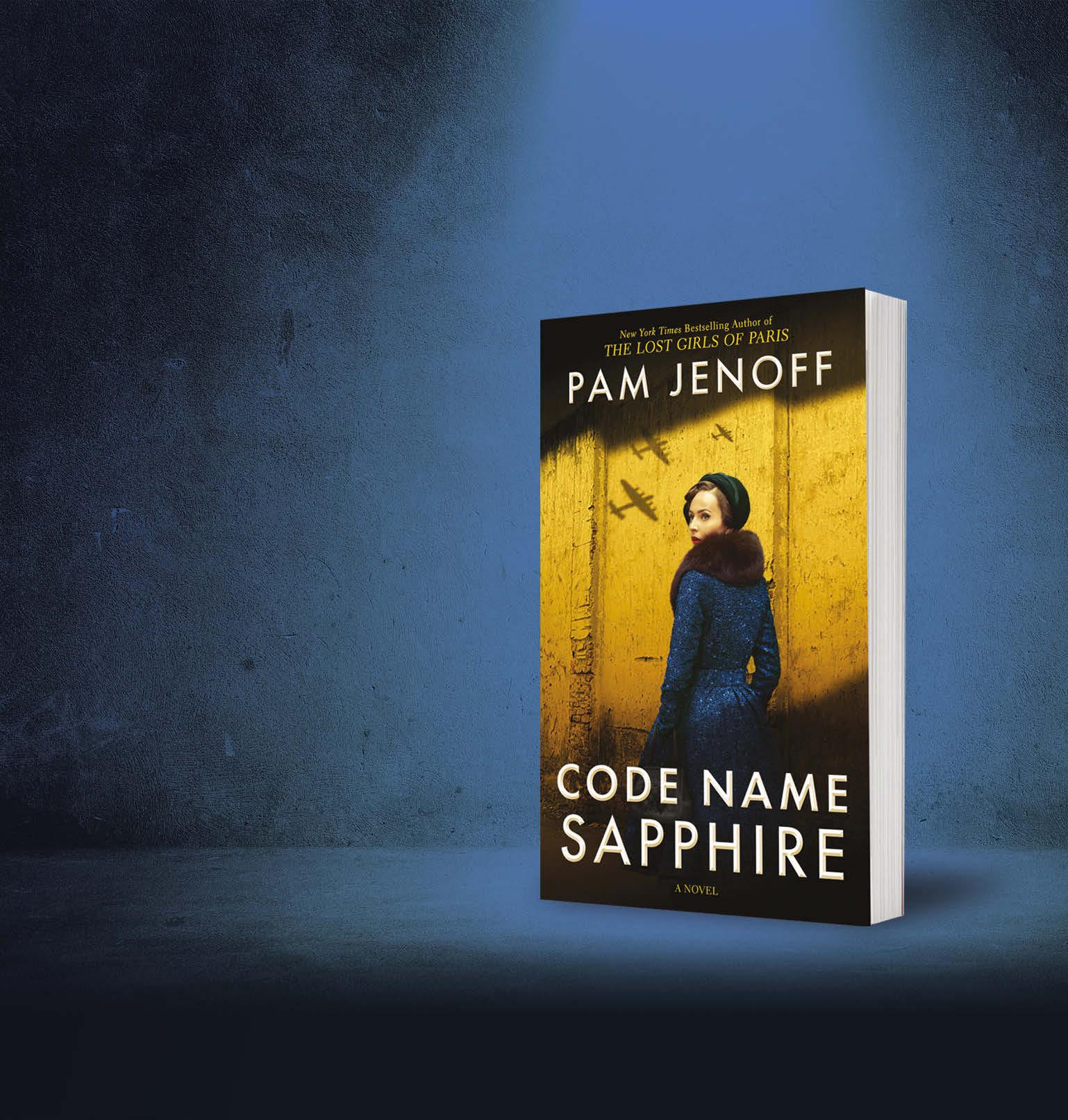
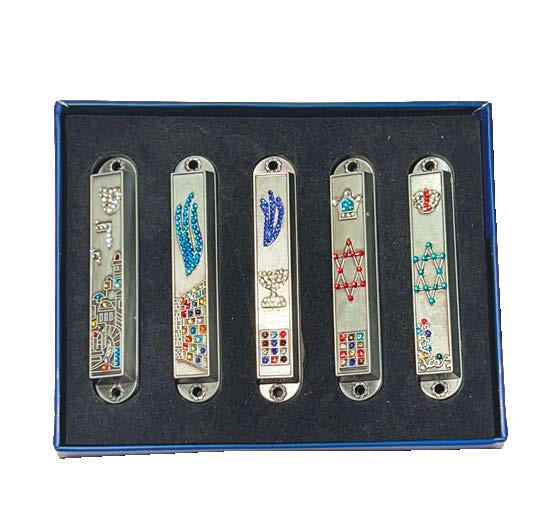


Hen Mazzig is an Israeli writer and the co-founder of the Tel Aviv Institute, which combats antisemitism online. His first book, The Wrong Kind of Jew: A Mizrahi Manifesto, from which this excerpt was adapted, was published in October by Wicked Son Press.
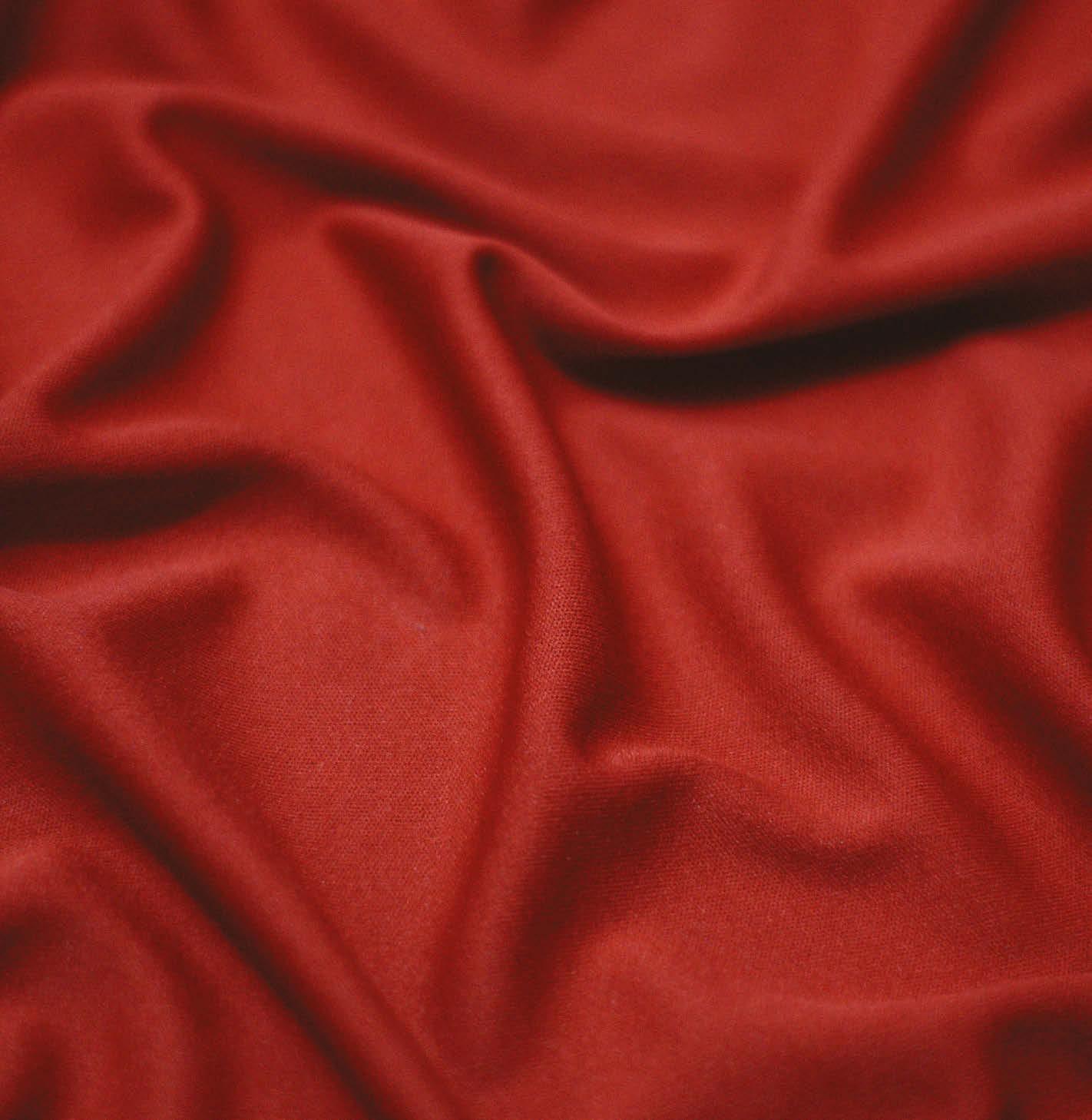
Lauren makler first came across the process of traditional egg donation at the age of 28. She had been diagnosed with a rare disease, multicystic peritoneal meso‑ thelioma, which caused non cancer ous masses to grow in her abdomen. Multiple surgeries were required to remove them.
Since her medical team couldn’t guarantee that her reproductive organs wouldn’t be affected by the surgeries, Makler, then dating her now husband, Jake, began research ing fertility options, including egg donation.
She found herself uncomfort able with the process of looking for donors through private clinics and hospitals. It was “icky,” she said, and paying an unknown woman for genetic material “felt transactional.” In addition, Makler, who is Jewish, wanted eggs from a Jewish donor, which can be hard to find.
By Amy KleinThat was five years ago. Today, through their one year old startup, Cofertility, Makler and co found ers Halle Tecco and Arielle Spiegel are reshaping both egg donation and freezing throughout the United States to help those who want to start a family right away as well as women looking to preserve their fertility.
Like other egg donation agen cies, Cofertility matches donors with potential parents. But what makes it distinct is its donate and freeze Split exchange program, which makes egg freezing accessible to more women and the donation process more open and less transactional. By using Split, women who qualify can harvest and store their eggs at Cofertility affil iated sites for up to 10 years—for free—if they donate half their eggs to potential parents enrolled in Cofertil ity’s Family by Co program.
Makler, who lives in Los Angeles, was fortunate. Her sister volunteered
her own eggs—“which gave me peace of mind” going into the surgeries, she said. Even luckier, she became preg nant without interventions and gave birth to a daughter. Nevertheless, the experience of looking for eggs stayed with her.
“Egg donation is an essential part of how LGBTQ families are built,” said Makler, Cofertility’s CEO. “And it’s a huge part of the process for other people as well,” including women whose fertility has been im‑ pacted by cancer treatments or who have diminished ovarian reserves due to age or health conditions.
Egg donation and freezing is an expanding business. It’s hard to estimate the number of babies born through egg donation since the technology was introduced in 1983, but nearly 9,500 babies were born from egg donors in the United States alone in 2019, the most recent year for which statistics are available, according to a report from the Society for Reproductive Tech nology. Most clinics charge over $40,000 for one cycle of donor eggs; donors receive a percentage of that fee, on average $10,000, depending on the clinic.
Over the past decade, egg freez ing—preserving oocytes to use at a later date—has become increasingly popular as “women are starting fam ilies later than ever,” Makler said. Indeed, a study on trends in elective oocyte freezing published in 2021 in the journal Fertility and Sterility showed a 39 percent increase in egg retrievals compared to prepandemic levels.
Leah, a Jewish medical student who did not want to share her last name, is a donor in Cofertility’s Split program. Focused on finishing her degree, the 31 year old said she is

currently more interested in helping others start their family than in hav ing children herself.
In Split, prospective parents pay for all the medical costs associated with egg retrieval and receive half the eggs retrieved from their matched donors; the other half are frozen to be used by the donor at a later time.
Split appeals to her, Leah ex‑ plained, in part because she does not like negotiating for money.
“The exchange feels more in the spirit of what I’m doing,” she said, while allowing her the time to wait until after her schooling to decide if she wants children. Cofertility “gives me the space to be comfortable with where my priorities are now.”
Split has 120 donors, with over 1,000 on the waiting list. “We’re excited about the traction we’ve had so far,” said Tecco. “We hope that Cofertility can lead the way for the entire industry to become more trans parent and ethical.” (In January, another American company, Oma Fertility, started a similar egg donor/ freezing exchange.)
It was Tecco who approached Makler over a year ago about cre ating an egg donation agency that would be, as Cofertility’s website calls it, “human centered.” Makler had recently left her job at Uber, where she helped to found Uber Health, a service that enables health care organizations to arrange rides to and from medical offices.
Tecco, an entrepreneur in digi tal and women’s health, and Makler teamed up with Arielle Spiegel, who had originally founded Cofertility as a fertility educational and sup port platform and community. (Both Tecco and Spiegel have experienced fertility problems.) The three then re launched Cofertility and debuted the Split program. The Los Angeles
based company also offers fee based egg freezing through its Keep program.
Unlike most other donor data bases, Split is not anonymous. The program features options that it calls a “disclosed relationship,” where a matched donor and future parents exchange contact information and communicate directly, as well as an “undisclosed relationship,” where they communicate using the Cofertil ity platform.
Split also opens egg freezing to those who find the cost of freezing prohibitive. The average age for egg freezing in the United States is 37, though studies suggest that women who freeze their eggs before 35 have a better chance of a successful later pregnancy.
“The best time is usually when you can least afford it,” Makler said. A single cycle—the process of stimulating and monitoring egg pro duction, removal and freezing—can cost $10,000 and up. Women who are in school or at the start of their careers may find that unaffordable.
Compared to most donor data bases, Cofertility’s donors “are more accomplished, more mature in terms of how they view being an egg donor,” said Stephanie Levich, founder of Family Match Consult ing, a leading donor and surrogate consulting company with access to 100 databases. About 61 percent of Cofertility donors are pursuing a graduate degree. They are also typi cally a little older than those in other databases, which usually accept eggs only from women 29 and younger.
“They’re not doing it to earn com pensation for school,” Levich said, “but to generally help a family and preserve their own future family.”
While Cofertility doesn’t specif ically target a Jewish demographic,
20 percent of its donors are Jewish. This is another distinction as “finding Jewish donors”—indeed, any minori ty—“is definitely challenging,” said Dr. Meir Olcha, an obstetrician and gynecologist who heads the Sama Fertility Clinic and is affiliated with Morgan Fertility and Reproductive Medicine, both in New Jersey.
The uniqueness of its donor database was part of what drew Sammy Kanter and Zvi Zobin to Cofertility. The couple mar ried last May and were interested in starting a family right away. They searched other databases before going to Cofertility, which they heard about through their Jewish congrega tion, Ikar, in Los Angeles.
The couple recently matched with a Jewish donor on the platform (who declined to be interviewed). “Zvi and I are both very passionate about our Judaism—I’m going to be a rabbi in May,” said Kanter, 36, who is the rabbinical intern at Ikar. Zobin is Ikar’s director of membership and community giving. “We both come from Ashkenazi Jewish families, and we were interested in an egg donor that looked like she could be in our family, would have that similar Jew ish vibe.”
He said that they were also drawn to the idea of a less transactional pro cess of matching with an egg donor, one that “was more of a partnership.”
The donors at Cofertility, said Kanter, “were thoughtful about why they wanted to go through the pro cess and what it meant to give their eggs to someone.”
And, he added, “we both found that moving.”
 By Wendy Elliman
By Wendy Elliman
Elisheva milo is a 73-yearold retired industrial designer from Haifa. Descended from a family that has lived in the Land of Israel continuously for over 2,000 years, she is a devoted aunt and great aunt.

Uri Lahav, 49, is an occupational therapist from Jerusalem. Husband to Karni and father to three children ages 15 to 20, he is the son of parents who immigrated to Israel from the United States about 50 years ago.
Despite their very different backgrounds, Milo and Lahav share something critical: This past year, both ran out of options in their battles against multiple myeloma, a cancer that relentlessly destroys bone marrow. For years—13 for Milo, seven for Lahav—they moved from one therapy to the next, until there was nothing left to try. Both are among the first group of 57 seriously ill Israeli patients who readily agreed to take part in the trial of an experimental made-in-Israel immunotherapy treatment.
The outcome of three years’ work by physicians and scientists at the Hadassah Medical Organization and
Bar-Ilan University, the trial’s interim results are “outstanding,” said Dr. Polina Stepensky, head of HMO’s bone marrow transplantation and cancer immunotherapy department. Ninety percent of myeloma patients in the trial have seen improvement so far, and over half—57 percent—have gone into remission. Patients in the trial were between the ages of 44 and 84, and there has been no evidence that age affected successful outcomes.
“With Israel the startup nation, it had been clear to me that we should and could find an answer for the growing numbers of people with incurable multiple myeloma,” said Dr. Stepensky. A hematologist-oncologist, pediatrician and stem cell transplantation expert, she is co-inventor of this new Israeli immuno-
therapy—a treatment that uses the immune system to battle disease— for multiple myeloma. Incidence of the illness, the second most common blood cancer, is steadily growing for apparently unexplained reasons. This year, an estimated 176,000 people worldwide—550 of them in Israel, 35,730 in the United States— will be diagnosed with this disease, which causes blood cells manufactured in the spongy bone marrow to be crowded out by fast-proliferating cancer cells.

“When I graduated from Hadassah Medical School in 1998, median survival for multiple myeloma patients was less than three years,” said Dr. Stepensky. “With new medications and bone marrow transplantation, we’ve stretched this to over a decade. But in the end, all existing therapies lose effectiveness. We needed another approach.”
That other approach, called chimeric antigen receptor (CAR) T-cell therapy, circumvents the slashand-burn of conventional cancer treatments—surgery, chemotherapy and radiotherapy and their brutal side effects—and weaponizes the
Hadassah On Call, Hadassah’s premier podcast, helps decode today’s top developments in medicine, from new treatments to tips for staying healthy. In each episode, American Israeli journalist Maayan Hoffman, a third-generation Hadassah member, interviews one of the Hadassah Medical Organization’s top doctors, nurses or researchers. In upcoming months, she will talk to a specialist on eating disorders and interview medical professionals for a special episode commemorating the 75th anniversary of Israel.
Look for past episodes on topics from women’s mental health to heart health and how environmental toxins have impacted men’s fertility over the past decade. Subscribe and share your comments at hadassah.org/hadassahoncall or wherever you listen to podcasts.
patient’s own immune system. After seeing the work of immunologist and genetic engineer Dr. Michel Sadelain at the Memorial Sloan Kettering Cancer Center in New York in 2017, Dr. Stepensky convinced Hadassah that Israel could manufacture and develop this treatment, too.
She brought on board a Bar-Ilan University team led by renowned French-born immunologist Cyrille J. Cohen, head of the university’s Laboratory of Tumor Immunology and Immunotherapy. Their role was to create a synthetic cellular molecule that instructs the patient’s immune system T-cells which cancer cells to target.

“It took many different designs until we identified the optimum molecule, but we got there,” said Cohen.
The Israeli CAR T-cells are formally classified as HBI0101—the HBI referencing its creators, Hadas-
sah and Bar-Ilan—and use the same general approach as CAR T-cells engineered in the United States and China, which lead the world in CAR T-cell therapy trials and applications. In America, where researchers have focused on molecules and vectors different from the Israeli team’s research, CAR T-cell therapy was approved by the Food and Drug Administration six years ago, though it is still considered experimental.
The treatment is also expensive, costing hundreds of thousands of dollars. In China, its cost is lower, but regulatory standards there differ radically from the West. As Dr. Stepensky noted, the potentially far more modest Hadassah price tag makes Israel’s CAR T-cell therapy accessible to the estimated 120 Israelis needing it at any one time as well as to patients from outside Israel. She expects it to be in mainstream use within five years.
Proof of concept and preclinical studies of the CAR T-cells were the task of Hadassah, which “raised millions of donor dollars to take this technology through its crucial initial stages,” said Dr. Yoram Weiss, HMO’s director general. Those steps included “building Good Manufacturing Practice-graded master cell banks and manufacturing facilities, ones that use globally recognized production guidelines.”
In 2020, within a record-breaking three years, Israel’s Health Ministry approved clinical trials of the Hadassah-Bar-Ilan CAR T-cell therapy.
It was in october of last year, after Uri Lahav learned he had reached the end of the conventional treatment road, that doctors proposed the new treatment.
“I’d heard of it as something promising but not yet available in
Israel,” recalled Lahav, whose mother, Elisheva, volunteers at Hadassah Hospital Mount Scopus. “When Hadassah suggested it, I thought: ‘Wow! It’s here in Israel!’ And leapt at it.”
For Lahav, Milo and other participants, the trial, which took place in Hadassah’s bone marrow transplantation and cancer immunotherapy department, began with collecting the patient’s T-cells. A catheter in one arm drew out blood and passed it through a gently pinging plasmapheresis machine, which extracts plasma and the immune system cells it contains and then returns the remainder of the blood. Next came three days of light chemotherapy to ease introduction of the enhanced cells.
Meanwhile, in Hadassah’s specially built lab, researchers isolated the T-cells, enhanced them with the
artificial molecules developed by the Bar-Ilan team and replicated them. To the delight of all, when the enhanced T-cells were infused back into the patient, the cells did exactly as programmed. They hunted down and
When Suzanne (Suzie) Patt Benvenisti became executive director of the Israel offices of Hadassah, the Women’s Zionist Organization of America, she felt she was “coming full circle,” given her multiple and longtime connections to the organization.
Born in Houston to Israeli parents—her mother was born at Hadassah Hospital Mount Scopus—the 44-year-old has helped develop public policy for a number of health care organizations in the United States and been involved in child welfare and youth programs as well as in nonprofit management. Patt Benvenisti is a former director of public policy for Aetna, an American health insurance company, and has consulted on strategic and operations planning for Community Partnership for Protecting Children in Portland, Maine.
In 2010, she went with her husband, Ido, to volunteer at the Agahozo-Shalom Youth Village in Rwanda, which is modeled on Israel’s youth villages, two of which are sponsored by Hadassah. The couple spent their year in Rwanda mentoring youngsters orphaned by the 1994 Rwandan genocide and its aftermath, teaching

destroyed the multiple myeloma cells.
“It’s only a short time since the treatment, so too early for results,” said Lahav, “but my energy is returning. I feel good and I’m very hopeful.”
For Milo, too, joining the trial was “an easy decision because I had nowhere else to go. It wasn’t too hard a treatment, easier than my two bone marrow transplants,” she said.
“I spent two weeks in hospital in iso-
piano and singing—both of them are musical—and helping the village develop fundraising and economic plans.
The following year, she and Ido moved to Israel, where she was appointed managing director of Jerusalem’s Taub Center for Social Policy Studies, later becoming CEO of the independent research institute. The two live in Jerusalem with their three children—Ariel, 11; Noa, 9; and Aya, 5.
“Hadassah has been a household name as long as I can remember,” said Patt Benvenisti, who started her new position in January, succeeding longtime executive director Audrey Shimron, who stepped down to become executive director emeritus. This interview has been edited for brevity and clarity.
What attracted you to directing Hadassah’s Israel offices?
I saw it as an exciting, multifaceted position that merges
many aspects of my personal and professional backgrounds. And all this at Hadassah, an organization at the forefront of Israeli health care innovation, and a place with which I have strong personal connections.
Can you share more about your Hadassah connections?
Both my mother and father graduated Hadassah’s medical school. I grew up in Hadassah’s Young Judaea youth movement—as camper, regional president, national board member and finally staffer at YJ camps. I met my husband when we both worked at Young Judaea’s teen leadership camp, Tel Yehudah.
What do you see as your main priorities in the role of executive director?
Foremost is serving as HWZOA’s representative on the ground here in Israel—as the daily connector between the organization in the United States and its Israel projects. Allied to this is representing Hadassah’s interests to the Israeli government and Knesset.
Another key aim is strength -
ening and enhancing the image and name of HWZOA in Israel and worldwide—reminding a new generation of Hadassah’s historic role in building the state’s health care infrastructure and Youth Aliyah. Beyond that, I’ll be identifying opportunities to reinforce our Israel role in both traditional areas and new, developing relationships with Israel’s civil society and government, and building and strengthening partnerships with other Jewish organizations in Israel. I’m working on a strategic plan to meet these goals.
Why did you make aliyah?
I always felt connected to both Israel and the United States, where I grew up. I spent 1997 in Israel on Year Course and made aliyah (for the first time) in 2004, returning to the United States to complete a postgraduate degree at Harvard. It was only a matter of time till I went back to Israel, especially after meeting Ido, who is a Jerusalemite.
Did your Rwanda experience impact your career path?
Definitely! Our year in the village reinforced for me the importance of infusing my professional life with meaning and remembering to use my skills and experience to make a difference. —Wendy Elliman
lation, then came back regularly for several weeks for follow-up. Ten months later, I’m still in remission and feel good.”
By january 2023, the results of Hadassah’s clinical trial were making medical headlines. The Los Angeles-based Immix BioPharma proposed a collaboration. Under the research and licensing agreement signed between Immix and the technology transfer companies of Hadassah and Bar-Ilan— Hadasit and BIRAD—next-generation Israeli CAR T-cell therapy will be developed and commercialized, and its production extended to the United States.

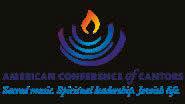
greater automation and optimization of our cell production and continuation of our clinical studies,” said Dr. Stepensky. “We’re also waiting for Israeli Health Ministry authorization for frozen cell production as well as fresh, which will allow us to take more people into our trial. At the moment, we can handle only one new patient a week, and our waiting list is six months long.”

The therapy, she pointed out, is still in its early stages. While Hadassah’s CAR T-cell therapy puts multiple myeloma patients into remission of unknown duration, it does not cure them. Dr. Stepensky anticipates, however, that repeated CAR T-cell therapy treatment will convert the cancer from a fatal to a
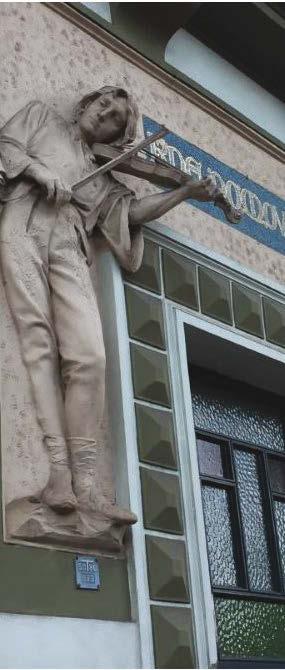
chronic disease. And she looks to the world of patients beyond those with multiple myeloma.


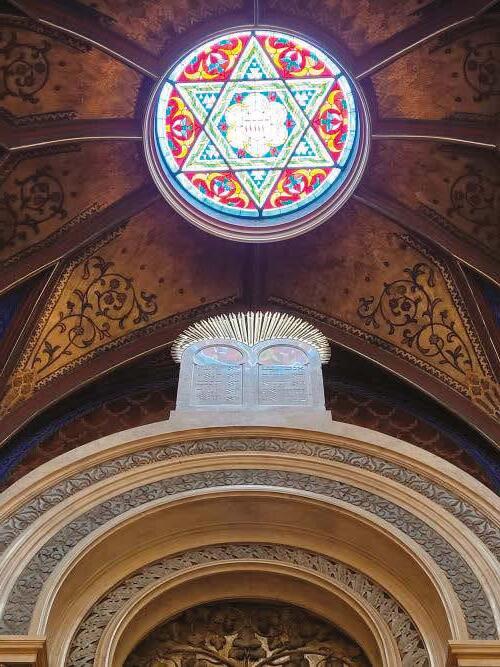
“We’ll be evaluating new targets and technologies,” she said. “Other blood cancers, such as leukemia and lymphoma, are an obvious first step, perhaps followed by solid tumors.
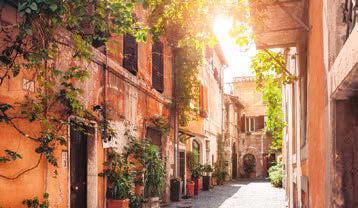






“I believe that this type of personalized cell therapy is the future,” added Dr. Stepensky. “I dream of a facility here at Hadassah that develops individualized cellular treatments for children and adults, for different cancers and for all other diseases where gene engineering can play a critical role.”

One of my favorite moments during my family’s Pesach seders is when we all sing Nurit Hirsch and Ehud Manor’s famous rendition of “Bashana Haba’ah” after we finish retelling the story of Exodus. It is a joy ous moment, shared by many Jews throughout the world, acknowledg ing that the forming of the modern, Jewish and democratic State of Israel is to be celebrated at the same time as we remember our ancestors’ jour ney. In my family, this often leads to recounting our many travels and interactions with Israel before and after it became a new nation.
This year, Hadassah will be cel ebrating Israel’s 75th anniversary throughout every state in America
and in many countries around the world. As an unabashed Zionist, I am extremely proud of Hadassah’s long and unique history in advancing Zionism, Jewish values and the infra structure of our beloved Israel. Yet I am deeply respectful of those who struggle with how to support Israel and who find Zionism itself to be a difficult topic.
At Hadassah, we’re striving to be both a bold and a safe place, one that is inclusive and fosters open con versations—even when they aren’t

Hadassah finds itself in esteemed company among the Jewish activists and nongovernmental organizations who were collectively awarded the 2023 Genesis Prize—sometimes referred to as the “Jewish Nobel”—for their humanitarian relief work in Ukraine after the Russian invasion began in February 2022. In partnership with Hadassah and Hadassah International, the Hadassah Medical Organization sent 15 medical delegations to Poland, set up and ran medical clinics on the Ukrainian-Polish border and, with the World Health Organization and other partners, treated over 31,000 Ukrainian refugees. In Israel, more than 50 Ukrainian teens were given a new home at Meir Shfeyah Youth Aliyah Village and Hadassah Neurim.
easy—across generations, political outlooks and idealism about what Israel can and should be today. This makes Hadassah truly unique and relevant in 2023.
Hadassah’s organizational design of inclusivity and respect for every person’s opinion traces back to what we learned from our founder, Henri etta Szold. Decades before Israel’s independence, she defined Zionism as “Jewish hope, aspiration, dream, prayer made practical.”
Today’s scientific breakthroughs at the Hadassah Medical Organi‑ zation are directly connected to hundreds of successful events held in support of its work. The long list of advocacy successes to com bat antisemitism, promote women’s health equity and support Israel could not have occurred without members, associates and donors throughout our country. In addition, thousands of young Israelis have been given a new lease on life in Hadas sah’s youth villages. And 2023 marks the 100th anniversary of the Hadas sah supported Meir Shfeyah Youth Aliyah Village.
This year, as you welcome rel atives, friends and, perhaps, the stranger to your seder table, I am asking you to be an ambassador for Hadas sah. Invite your guests to become members and to join us in signi fying Israel’s 75th anniversary by placing an additional piece of matzah on your table, a “Matzah of Cele bration.” As you explain its presence, take a moment to share your per sonal Hadassah story, the inspiring

Our long and unique history in advancing Zionism
impact of supporting this work and the importance of others adding their time, talent and treasure to make sure it continues.
Here is the Hadassah membership QR Code.
Please take a picture of it with your phone and invite others to join us in the next chapter of our collective story.
Wishing you a joyous Passover season.
The Yishuv, or prestate Israel, began exporting Jaffa oranges in the 1920s. How has Israeli farming changed since then?
How did Israel reclaim the desert to allow farming?
Israel developed drip-irrigation technology; increased supply of underground well water; diverted and utilized scarce water resources; and planted shrubs, trees and crops that improve the soil.

What main ingredients appear in the typical “Israeli salad”?

Also called Jerusalem salad or Arab salad, the primary ingredients are tomatoes, cucumbers, red onions, fresh parsley, lemon juice and extra virgin olive oil.
What is the country’s newest farming frontier?
Space! Twenty-eight chickpeas were sent to the International Space Station in 2022 as part of an Israeli-led experiment into the
viability of growing the legume in space.
What are some of the nation’s top exports, derived from Israeli-grown crops?
Olive oil, date syrup (silan), za’atar spice blend, tahini and halva.
What are some of the flowers most commonly grown for commercial export? Roses, carnations, irises, gladiolas and lilies.
What is the state of the dairy industry? Israel’s 135,000 Holstein cows produce more milk per cow than in any other country.
What non-food crop thrives in the Negev? Jojoba shrubs, whose oil is used in cosmetics. Israel claims to produce 50 percent of the jojoba sold on the global market.
What is Israel’s national fruit?
The prickly pear, aka the sabra.
NOW YOU’VE HAD… A TASTE OF ISRAELI FARMING
The rebirth of the Judean date palm tree is among the most inspirational, feel-good stories out of Israel in the last 20 years, and it is almost entirely thanks to the ingenuity of two Hadassah-affiliated scientists—Dr. Sarah Sallon, director of the Louis L. Borick Natural Medicine Research Center at Hadassah Hospital Ein Kerem, and Elaine Solowey, researcher emerita at the Arava Institute for Environmental Studies at Kibbutz Ketura.
Now, illustrator and writer Martin Lemelman recounts the tree’s extinction after the fall of Masada almost 2,000 years ago and its incredible 20th century reawakening in a new graphic novel, The Miracle Seed . Lemelman’s richly detailed and vivid drawings, coupled with his streamlined text that moves from Roman destruction to Dr. Sallon and Solowey sampling dates harvested from a tree they named “Hannah,” make for a rewarding read for children ages 8 to 14.


 By Libby Barnea
By Libby Barnea
Istanbul is a feast for the senses. Izmir enchants with its sparkling Aegean coastline and jewel-box synagogues. But just a few years ago, I’m unsure what my reaction would have been to an invitation to visit such illustrious Turkish cities.
Without a doubt, I would have wanted to experience Istanbul—the fabled and literal spot where East meets West along the Bosporus, the 25-mile-long channel that connects the Black and Marmara Seas. I would have wanted to explore ancient Constantinople’s 21st-century manifestation, with its unparalleled sweep of towering minarets and domes surrounded by water.
But that pull to go would have been tempered by concern over the Turkish government’s moves regarding Israel. Turkey had downgraded relations with Israel in 2011, in response to the May 2010 flotilla incident in which nine Turkish activists aboard the Mavi Marmara were killed by Israeli forces as they tried to break the barricade of Gaza. What followed was close to 10 years of strained relations and public denunciations of Israel. Indeed, since Turkey became the first Muslim nation to recognize the Jewish state, in 1949, relations between the two neighbors had been a case of two steps forward, one step back.
The situation shifted again last year, when rapprochement between the nations culminated in the restoration of full diplomatic ties in August 2022. Turkey’s motives for reconciliation, most observers agree, were a two-part political calculation. First, Turkey sought to burnish its image in Washington’s political corridors and among influential Jewish groups that might lobby the United States government on its behalf. Normalizing relations with Israel might help accomplish that aim, the theory goes. At the same time, the country sought increased economic engagement with Israel and began to look to international tourism, which took a major hit during two years of Covid lockdowns, as a means to bolster its sluggish economy.
The Turkish republic’s charm offensive may be one explanation for the Jewish media trip I joined last fall. The nation’s newfound openness is welcome news for passport-holders eager to explore cosmopolitan Istanbul as well as Turkey’s third-largest city, Izmir, home to the nation’s second-largest Jewish community.
Whether you’re exploring the European or Asian side of Istanbul— Turks refer to each as “the other side,” or “karsi taraf,” depending
on where they are standing—the bustling crowds and splendor of Byzantine- and Ottoman-era architecture fronting the Bosporus and the Golden Horn are magical. The city’s urbane nature coupled with its millennia of recorded history means that Istanbul regularly appears atop lists of most-visited international metropolises. All those tourists translate to a cacophony of languages overheard when strolling the teeming streets of Istanbul, which, with 15.8 million residents, is Europe’s largest city.
One language you’re not likely to hear is Ladino. Istanbul’s approximately 17,500 Jews, who are almost all Sephardi, for the most part grew up with parents or grandparents who spoke the language, also known as Judeo-Spanish. But although linguists estimate that 8,000 Ladino speakers remain in Turkey, few among the younger generations speak it.
“The language is in the category of other dying languages,” confirmed Nisya Isman Allovi, the 43-year-old director and curator of the Quincentennial Foundation Museum of Turkish Jews in Istanbul. “I don’t speak it, but I understand it. It is a nostalgic language for me, and of course I would like to hear more Ladino. But it just isn’t a priority.”
Allovi and other prominent Jews, however, are committed to preserving Ladino texts. As director of Turkey’s largest Jewish museum, Allovi oversees a rich collection that includes 18th-century volumes of the Me’am Lo’ez, a commentary on the Torah written in Ladino. Me’am Lo’ez

While Jews no longer reside in the central Galata district— best known as the site of the 13th-century Galata Tower , whose 170-foot-high observation deck offers stunning 360-degree views of Istanbul—the largest synagogue in all of Turkey, Neve Shalom , remains there, open for Shabbat, holidays and special occasions.
Built by Jews who came to the area along the northwestern banks of the Golden Horn in the early and mid-20th century, Neve Shalom features a lofty sanctuary graced with over a dozen stained-glass windows. It also houses a towering wooden ark atop a red-carpeted stage; a women’s gallery encircling the space from above; and a massive brass chandelier featuring a Magen David within its diameter. Despite the promise of peace in its name, Neve Shalom has witnessed three terror attacks, beginning with a devastating shooting spree on the Shabbat morning of September 6, 1986, when a pair of Arab assailants murdered 22 Jews.


That fateful morning is a
glaringly violent footnote to a 530-year heritage that is celebrated in the Quincentennial Foundation Museum of Turkish Jews , located directly adjacent to Neve Shalom. Over several floors, the community’s origins are recounted through sophisticated multimedia displays as well as ritual artifacts such as Torah crowns, yads , menorahs and textiles from rabbinic robes to wedding costumes.
The origins of Istanbul’s Jewish community lie in the Balat neighborhood, a maze of bohemian-chic side streets along the southeastern coast of the Golden Horn. It was here, in the 1430s, that Romaniote Jews hailing from Ottoman-controlled Ahry, Macedonia, founded the Ahrida Synagogue , the oldest still functioning Jewish site of worship in Turkey. The synagogue was rebuilt in the 16th century after a severe fire and later underwent many bouts of restoration, most recently in 1992. The domed ceiling, painted a deep red with golden line segments, tops a white-columned sanctuary whose pride of place is a highly varnished wooden tevah shaped like the prow of a ship and said to symbol -
ize both Noah’s Ark and the vessels that brought Jews from Spain to Turkey.
Around the corner, the Yanbol Synagogue owes its founding in the late 15th century to the arrival of Jews from Yanbol, Bulgaria. The small sanctuary that welcomes modern-day visitors dates to the 18th century, when the ceiling of intricate floral motifs in hues of green, blue and yellow was painted. Both the Ahrida and Yanbol synagogues are open primarily for tourists and on High Holidays and special occasions.
Istanbul’s historical peninsula, where the Golden Horn meets the Bosporus just north of the Sea of Marmara, contains several mustsee sights and indulgent experiences like the Cagaloglu Hamam
No superlative does justice to the architectural significance and resplendence of the Hagia Sophia (“Holy Wisdom”), whose pendentive dome, erected in 537 during the reign of Byzantine Emperor Justinian, capped what remained the largest basilica in Christendom for almost 1,000 years. Lavishly ornamented with marble and gold mosaics of Christian scenes such as the virgin and child—now largely obscured in keeping with the site’s designation as a mosque—it is the sanctuary’s soaring 180-foot height that most evokes spiritual grandeur.
Built along the Bosporus in 1453 by Mehmet the Conqueror, the nearby Topkapi Palace features a succession of four court -

yards. Among the priceless jewels and weapons in the palace’s treasury are the Spoonmaker’s Diamond, the golden and emerald-studded Topkapi Dagger and the ceremonial armor of Sultan Mustafa III, who ruled in the 18th century. Of Jewish interest is a nondescript whitewashed building labeled “Room of the Chief Physician,” where the sultan’s doctors—who, for centuries, were Jews—lived and prepared their treatments.
Squeezed into more than 60 covered alleys, the 4,000-plus shops in the Grand Bazaar sell everything from handwoven rugs and Turkish cotton towels to knockoff designer goods, jewelry and cheap souvenirs. Epicureans hungry for Turkish delight and other local treats should venture to the more manageable Spice Bazaar , about a 10-minute walk north in the direction of the Golden Horn.
roughly translates to “The Tribe That Speaks a Foreign Language” and was an initiative first championed by Rabbi Yaakov Culi in Constantinople in 1730, when few Jews in the Ottoman Empire could read Hebrew.
Also housed at the museum are issues of the community paper Salom, which was published in Ladino from its founding in 1947 through 1984, when it switched to Turkish. Today, there are 6,000 subscribers to El Amaneser (the dawn), a monthly sister publication to Salom that is believed to be the only Ladino newspaper in the world.
Ladino’s slow decline is the result of two forces, one from within and one from outside the Jewish community. With the arrival in Turkey of Alliance Israélite Universelle schools in the late 19th century, French became the preferred language of the Jewish cultural elite. After Turkey’s independence in 1923, the patriotic fervor that the father of the republic, Mustafa Kemal Ataturk, ignited, led to secularizing reforms including the “Citizen,
As monolithic as Sephardi
Judaism has been in Turkey since Ottoman rule, the Jewish presence actually extends back to the late Roman era, if not earlier. Archaeologists have excavated the largest known synagogue from the ancient world at Sardis in western Turkey, about an hour’s drive from Izmir. The synagogue dates to the late third century CE and is noted for its colonnaded forecourt and main hall that archaeologists believe could have accommodated almost 1,000 worshipers.
Izmir’s First Jewish Quarter , which dates to the 16th century,
Speak Turkish” campaign. As the 20th century progressed, fewer Jews felt comfortable speaking Ladino.
Further draining the country of Ladino-speakers, between 1948 and 1954, nearly 35,000 predominantly lower-class Jews made aliyah—40 percent of the population—largely for economic reasons. Today, fewer than 20,000 Jews live in Turkey, most of them well-educated, economically successful and somewhat insular.
Just as Ladino traveled with Sephardi Jews from the Iberian Peninsula to the Ottoman Empire, so, too, did the design of their houses of worship. Configured in what’s called a central plan, most Turkish synagogues feature a tevah (bimah) in the middle of the sanctuary, facing the hechal (ark), with benches wrapping around the main floor and balcony seating for women. Close to 20 Sephardi synagogues bearing this layout are scattered throughout Istanbul, the majority on the European side. Beyond Istanbul, similar synagogues can be found in, among other cities,
surrounds Kemeralti market via a maze of alleyways whose main thoroughfare is Havra (synagogue) Street. Begin your tour of the quarter’s jewel-box-like synagogues at the largest— Bikur Holim , located along the major artery of Ikicesmelik Street.
The synagogue was originally a large courtyard house, known as a cortijo , before it was gifted to the community in 1724 by Salomon de Ciaves, a Portuguese Dutch Jew. Today, Bikur Holim’s impressive sanctuary features a raised central tevah encircled by marble columns and an elaborately painted ceiling with floral and geometric designs of reds, yellows and green.
Next, venture into the heart of
Izmir, Ankara, Bursa and, in the south, Antakya, which suffered massive casualties after the devastating Kahramanmaras earthquake in February that claimed tens of thousands of victims in Turkey and neighboring Syria.
Hop a short flight from Istanbul Airport or embark on a scenic five-hour road trip southwest to reach Izmir. During Greek, Roman and Ottoman rule, the area was known as Smyrna; its most impressive sight from antiquity is the Agora of Smyrna, originally erected in the fourth century BCE. Curved picturesquely around the bay of the Gulf of Izmir, the city welcomes throngs of cruise passengers who disembark for day trips to the archaeological
the old quarter. A onetime home of the influential Palachi family, Bet Hillel is a tiny showcase devoted to Rabbi Hayim Palachi (1788-1869) and his son Rabbi Abraham Palachi (1809-1899).
The classically ornamented Sephardi sanctuaries of Etz Hayim , Shalom , Algaze and Sinyora synagogues evoke the spiritual significance of Izmir’s golden age, though some of their central plan designs have been altered.

In the mid-19th century, successful Jews looking to escape the crowded Kemeralti quarter decamped for the southern bay of Izmir, to what is now the Karatas neighborhood. Here, Jews built Bet Israel Synagogue , Izmir’s
largest and most ornate, in an Italian style notable for its towering mahogany columns rising up to the women’s balcony, which also houses an exhibit on the history of Izmir’s Jewish community.
The 1907 construction of The Historical Elevator , a few blocks inland from Bet Israel, was funded by Jewish businessman Nesim Levi to connect clifftop neighborhoods with Karatas’s coastal streets. Ascend to the top to take in sweeping views of Izmir’s bay. Down at sea level, explore Asansor Street, a charming alley lined with shops and cafes that was the childhood haunt of legendary Jewish singer and guitarist Dario Moreno, born David Arugete in 1921.
wonders of Ephesus, Pergamon and Sardis.
But fascinating Jewish history exists closer to port, in the city cen ter. There, Izmir’s labyrinthine First Jewish Quarter winds around a sec‑ tion of the Kemeralti bazaar crowded with fish peddlers, produce merchants and bakeries. It is the restoration and promotion of the quarter’s sights that energizes native son Nesim Bencoya. As the driving force behind the Izmir Jewish Heritage Project, Bencoya, the former director of the Haifa Cinema theque who returned to Izmir in 2010 after 40 years in Israel, helps to pro mote interest in Izmir’s Jewish past.
Bencoya hustled our group of writers through atmospheric stone alleys and a series of exquisitely re‑ stored synagogues that mostly date from Izmir’s Jewish golden age in the 17th century. The enthusiasm for his work was palpable as he passionate‑ ly recounted colorful tales about the Jews who once walked these lanes, in‑ cluding the infamous Sabbatai Zevi, whose life story Benacoya shared:
Born in the city in 1626, as a teen, Sabbatai had been more interested in Jewish mysticism than Torah. In 1648, he declared himself the mes siah, a move that prompted the rabbis to banish Sabbatai from the city. What followed were years of journeying through Ottoman lands including Salonika, Alexandria and Jerusalem, among other Jewish cen ters, where the charismatic Sabbatai attracted legions of followers taken
by his notions of ascetic belief, fasts and focus on redemption. In 1665, Sab batai returned to Izmir en force, wrested control of the Portugal Synagogue and called both women and men to the Torah.
His movement, however, was short lived. In Constantinople in 1666, Sabbatai was arrested and sentenced to either conversion to Islam or death. He chose the former, and until his death in 1676, practiced some form of Judaism in secret.
Fascinating historical tales and synagogue treasures notwithstanding, Bencoya told me that the motiva tion for his tireless work derives from something far more crucial to the well being of the city’s Jews, who now number around 1,000.

“Antisemitism expresses itself in many forms,” he said. “But the com‑ mon reason for it is a lack of knowl edge about Judaism, Jewish people and Jewish traditions. The Izmir Jew ish Heritage Project, by exposing our culture to non Jews, is filling this gap of ignorance with true knowledge.”
One way that Bencoya is filling those gaps is through the five year old Izmir Sephardic Culture Festival, held annually during Hanukkah in the quarter’s synagogues. The pop ular festival attracts close to 5,000 mostly non Jewish attendees to a series of concerts, food tastings, art shows and Ladino performances.
“This language is rapidly disap pearing, and not only the vocabulary, but a whole culture is in real danger,” he said. “Something had to be done.”
With his characteristic determi nation, he recruited two groups to perform in Ladino—one of which,
Start your planning at Turkey’s official tourism portal, GoTurkiye.com . For Jewish resources such as kosher food and services, consult the chief rabbinate’s office in Istanbul (turkyahudileri.com) or Chabad, which is led by Rabbi Mendy Chitrik (mendy@rabbimendy.com)
Salut de Smyrne, features non Jewish musicians who had never heard the language.
“Two years ago, I met a band spe cializing in ethnic music,” he said of Salut de Smyrne. “I asked if they would be interested in playing Ladino songs. Obviously, they did not know what I was talking about. But, after they listened to a few songs, they accepted my proposal. Not being Jewish, we worked on pronunciation, meaning of the lyrics and Sephardi culture.
“Salut de Smyrne today performs Ladino music everywhere and en‑ riches its repertoire continuously,” Bencoya said. “This is not exactly teaching Ladino as a language, but it is a good way to make Ladino rele vant in the hope that Izmir Jews will be excited to follow this example, to be proud of their language and adopt it in various ways.”
After all, there are 530 plus years of remarkable heritage for the Jewish communities of Izmir and Istanbul to take pride in—and for keen travelers to engage with when they visit this captivating land.
 Libby Barnea, deputy editor of Hadassah Magazine, visited Turkey last year as a guest of the Turkish Ministry of Culture and Tourism.
Libby Barnea, deputy editor of Hadassah Magazine, visited Turkey last year as a guest of the Turkish Ministry of Culture and Tourism.
Passover is a time for renew‑ al and rebirth, a springtime Jewish new year that allows for a fresh start as the winter cold melts away. That’s certainly the case for Chanie Apfelbaum, the creative force behind the Busy in Brooklyn blog and its nearly 100,000 Instagram fol lowers who look to her for inspired, trend influenced (and trendsetting) recipes.
This year, the newly single mother of five will be celebrating Passover alongside the release of her second cookbook, Totally Kosher: Tradition With a Twist! 150+ Recipes for the Holidays and Every Day. It’s the fol low up to her wildly successful first cookbook, Millennial Kosher, which came out in 2018. With recipes like Ramen Shakshuka and Spanakopita Quinoa Patties, the book cemented her status as a superstar of the kosher blogosphere.



Though her life as seen on social media—packed with trips to exotic destinations like Morocco and Hun gary and many gourmet kosher restaurant meals, some of which she receives in exchange for promo tion—seems glamorous, at heart she
considers herself a home cook who acutely understands the fatigue that often accompanies food preparation.
“I want to bring love back in the kitchen be‑ cause as Jewish women, we spend so much time there,” the 42 year old said. “Cooking for holi days, Shabbat, weeknight dinners, for our families, can feel like a chore—but it doesn’t have to.”
To that end, her new book is filled with doable yet excit ing weeknight recipes like Skirt Steak Tacos with Roasted Pineap ple Salsa and Chimichurri as well as Passover friendly fare like a clever Passover Panzanella Salad with Matzo Brei Croutons (see accompa nying recipe).
“I’m always looking to expand the idea of what kosher can be and see it as a happy thing rather than just a challenge,” said Apfelbaum, who snapped all the recipe photographs herself for the 320 page volume.
Written and photographed in the era of Covid, Totally Kosher pre sented Apfelbaum with
a whole set of challenges she hadn’t anticipated.
“I got Covid early on and lost my sense of taste and smell for three months,” she said of the temporary setback in the book’s production. She was also going through a divorce from her husband of more than 15 years, a journey she shared with discretion on Instagram.
“I wear my heart on my sleeve,” she said, “but I also feel like there are so many things that are taboo in the Orthodox Jewish community that need to be spoken about, and I want to change that.
“There were definitely many times I wanted to give up” on the book, continued Apfelbaum, who lives with her children, ages 5 to 16, in the same Crown Heights section of Brooklyn where she was raised as part of the Chabad Lubavitch movement.
“For me, this book ended up being the goal that kept me going.”
Born into a prominent Chabad family, Apfelbaum and her four siblings had close ties to the Lubavitcher Rebbe, the late Menachem Mendel Schneerson, in whose home her father had been a caretaker. Her younger brother, Ari Halberstam, was considered a

Serves 6 to 8
1 e xtra large egg white, beaten
protégé of the rebbe before his murder in 1994.
Halberstam had been one of 15 Chabad students traveling in a van back to Brooklyn after a visit to the ailing Schneerson in a Manhattan hospital. At an entrance ramp to the Brooklyn Bridge, a Muslim ter-
2 tablespoons e xtra virgin oliv e oil
1 t easpoon kosher salt
1/4 t easpoon dried oregano
1/4 t easpoon garlic powder
1/4 t easpoon freshly ground black pepper
3 squar es unsalted matzos or 2 r ound matzos
rorist opened fire on the van, hitting four of the teenagers, including Halberstam, who ultimately died from his wounds. Apfelbaum has said that much of what she does professionally is dedicated to her brother’s memory—and perhaps explains her fearless approach.
1 pound L ondon broil (pr eferably the shoulder blade c ut)
2 tablespoons grapeseed oil
K osher salt and coarse
gr ound black pepper,
t o taste
2 heads r omaine lettuce,

r oughly chopped
2 Persian cucumbers, thinly slic ed on the diagonal
1 c arrot, peeled into ribbons
4 radishes , thinly sliced
1 a vocado, sliced
1/2 small r ed onion, thinly sliced
1/2 c up mayonnaise
3 tablespoons gra ted
horseradish
1 tablespoon fr eshly
squee zed lemon juice
1 garlic clo ve, minced
K osher salt and freshly
gr ound black pepper
t o taste
1. To prepare the croutons: Preheat the oven to 400° and line a baking sheet with parchment paper. In a medium bowl, whisk the egg white with the olive oil, salt, oregano, garlic powder and
pepper. Break the matzo into small pieces, about 1/2 inch, and add them to the bowl. Gently toss the mixture with a spoon until the matzo is fully coated, then spread it out on the baking sheet. Bake for 10 to 15 minutes, until the matzo crisps up into clusters. Remove from the oven and set aside to cool completely.
2. To prepare the steak: Rub the London broil with the grapeseed oil and season liberally with salt and pepper. (I like to use a lot of pepper so that it’s pepper crusted.) Grill over high heat or broil on a sheet pan with the oven rack in the highest position for 6 to 8 minutes per side, until the steak is charred on the outside and cooked to medium rare. Transfer the steak to a cutting board and set aside to rest for 10 minutes. Thinly slice crosswise and against the grain.
3. To make the dressing: In a small bowl, whisk together the mayonnaise, horseradish, lemon juice, garlic, salt and pepper until creamy. If a thinner consistency is desired, add water to thin.
4. To make the salad: In a large bowl, combine the romaine, cucumbers, carrot, radishes, avocado and onion. Toss with the horseradish dressing. Top with the meat and the croutons and serve.
That fearlessness includes an eagerness to be photographed with her children for Totally Kosher, something that is unusual in the Orthodox food world she inhabits. For more than a decade, it has been standard for many Orthodox publishers to decline showing women’s faces in any printed work, not only cookbooks—something that she struggles to comprehend.
“Judaism has always celebrated women,” said Apfelbaum, who, as a child along with her mother and sister, was featured in a full-page Chabad advertisement in The New York Times promoting candelighting on Shabbat. “This idea of not printing women’s faces is a new-age concept within certain insular communities that distorts


Serves 12
3 c ups superfine blanched almond flour
3/4 c up sugar
1/2 c up walnut or grapeseed oil
1 e xtra large egg
1 1/2 t easpoons kosher salt, divided
1 ripe pear or Grann y S mith apple, peeled, c ored and roughly chopped
14 plump medjool da tes, pitt ed (about 10 ounces)
1/4 c up dry red wine
1/8 t easpoon cinnamon
1/2 c up chopped walnuts (about 2 ounc es)
Apfelbaum, with her daughters, challenges the erasure of women’s faces in some Orthodox publications: ‘Judaism has always celebrated women.’
Torah values. It didn’t exist years ago. Having women featured in print should be the same as having men in print—a non-issue.”
1. Preheat the oven to 350°. Line an 8- by 8-inch pan with parchment paper.
2. In a medium bowl, stir together the almond flour, sugar, oil, egg and 1 teaspoon of the salt until combined into a smooth dough. Remove 1 cup of the dough and set aside.
3. Using your hands, press the remaining dough into the bottom of the prepared pan in an even layer. Bake for 12 minutes, until lightly puffed. Cool for 5 minutes.
4. In the bowl of a food processor, pulse together the pear, dates, wine, cinnamon and remaining 1/2 teaspoon salt until pasty, scraping down the sides of the bowl with a rubber spatula as
Shoshana Keats Jaskoll, co-founder of Chochmat Nashim (woman’s wisdom), a group that, among other initiatives, is trying to reverse the trend of erasing women’s faces, agrees.
“Judaism has never cut women out of the picture, not literally or figuratively,” said Keats Jaskoll. “There’s nothing holy about it. That Chanie is showing her face and showing other women and girls that they can be seen is nothing short of heroic.”
Rather than releasing another cookbook with her original publisher, ArtScroll, which does not print women’s faces, Apfelbaum said she chose to branch out to Clarkson Potter, a culinary imprint of Penguin Random House.
“I’m always looking for authors
needed (it should resemble mortar, just like the story of the Exodus!).
5. Add the walnuts to the reserved 1 cup of dough and mix with your fingers to combine. Spread the charoset filling over the cooled baked dough and crumble the walnut mixture over top. Bake for 18 minutes, until browned around the edges. Cut the bars into squares and store in an airtight container (use parchment paper if layering). Store at room temperature for up to 2 days or refrigerate for up to a week.
6. To freeze, wrap squares individually in plastic wrap, transfer to a zip-top bag and freeze for up to 2 months.

with a distinct point of view—a unique culinary perspective that is so singular, it is almost like a trade mark,” said Raquel Pelzel, editorial director of Clarkson Potter. “Chanie has it all—the point of view, the devoted audience, the ingenuity and, of course, talent to spare.”
It was a talent that was developed over time, and one driven by her interest in design as much as in cook ing. Apfelbaum has a degree in web design and worked in the field before she began her blog in 2011.
“I got really interested in cooking as an artistic medium,” she said. “The beauty, the shapes—that’s why I fell in love with the process.”
In her childhood home, she recall‑ ed, her mom served a deeply tradi
tional diet of heimishe Ashkenazi classics like kugel, chicken soup and gefilte fish.
“Those are comfort foods for me and a great way to connect to my childhood when I want to,” she said. “But why would I make a kugel where I shred, mash or overcook the vegetables when I could literally roast them with olive oil and have them come out delicious?”
That simple but elevated approach to seemingly humble foods appears throughout Totally Kosher, many of whose recipes rely on ingredients sourced from a global kitchen.
“I’ve taken a bigger interest in worldwide cuisine and different cul tures and figured out how I can in‑ corporate that into the kosher world,”
said Apfelbaum. “I’m all about having fun and making it Jewish.” (Almost 10 years ago, her Drunken Hasselback Salami went viral for its playful kosher take on thinly sliced Hasselback potatoes.)
For Passover, which begins with the first seder on April 5, Totally Kosher offers a range of inspira tion, from a gefilte fish recipe handed down from the rebbe’s wife, the late Rebbetzin Chaya Mushkah Schneer son, to gluten free chocolate chip scones and charoset packed bars per fect for breakfast or dessert.
Adeena Sussman is the author of Sababa: Fresh, Sunny Flavors from My Israeli Kitchen and the upcoming Shabbat: Recipes and Rituals from My Kitchen To Yours, set to be released on September 5. She lives in Tel Aviv.


As Israel marks 75 years of statehood, celebrate Hadassah & Israel — Together at 75 on this memorable journey to the Jewish state. Experience the impact of your Annual Gifts as we celebrate 100 years at Meir Shfeyah Youth Aliyah Village. Explore sights like the Western Wall Tunnels, Bauhaus architecture in Tel Aviv and the historic Old City of Jaffa. Enjoy chocolate, wine and sufganiyot, plus galleries, fashion and museums. On this Festival of Lights, visit Hadassah Hospital Ein Kerem and see your name illuminated on our Keepers of the Gate digital display.
Land Package: $4,980. Early Bird Discount of $600 expires June 10, 2023.*
Bonus Discount: Join as a new Keeper or step up to the next level of Keepers of the Gate and receive an additional $250 off your land package!** *Land package only. Airfare additional. **Please inquire. Limited spots available for this promotion.
Visit events.hadassah.org/keepertrip, call 1-800-237-1517 or contact lblock@hadassah.org or rkantor@hadassah.org for more information.
 Hadassah, The Women’s Zionist Organization of America, Inc.
Hadassah, The Women’s Zionist Organization of America, Inc.
The sassoon men cut quite a figure. Their vast wealth, first as opium traders and merchants and later as art patrons and collectors, stretched from Baghdad to Bombay, today called Mumbai, to the royal corridors of Great Britain.
There was patriarch David Sassoon, often pictured in flowing robes with a long silver beard and intricate headdress, every inch a mid-19th-century Iraqi Jew of means. His business empire moved effortlessly between East and West.

There was his son Sassoon David Sassoon, who established the family’s beachhead in London. Another of his eight sons, Reuben Sassoon, pictured in formal white tie and tailcoat in a Vanity Fair caricature, became ensnared in 1890 in what was known as The Royal Baccarat Scandal, a gambling dispute eventually brought to trial that involved none other
than the playboy Prince of Wales, the future King Edward VII.
As for the Sassoon women, well, in most accounts of a sweeping family saga that spans from 1830 to the end of World War II, they are largely absent.
A new show about the family at The Jewish Museum in New York City, “The Sassoons,” which runs through August 13, aims in part to fill in those absences, shedding light on overlooked Sassoon women. Among them are businesswoman Flora Sassoon, David’s great-granddaughter, who at age 14 married one of David’s sons; and art collector and patron of poets Mozelle (Gubbay) Sassoon, another of David’s great-granddaughters.
“There is a plaque in the Magen David Synagogue in Mumbai”— built by David in 1864—“with an inscription that offers blessings to all
eight of his sons,” Claudia Nahson, the show’s co-curator, said. “Where are the women? The women who gave birth to them and raised them? They are just completely absent.
“And these were really forward-thinking women and pioneers in their own way,” she added. Without them, the family’s story “may have been very different.”
Several generations of Sassoon women are given new life in the exhibit, which charts the female family members’ accomplishments, aesthetic tastes and the friendships they struck up with the personalities of their generations. These include, for example, American expatriate artist John Singer Sargent, who captured the Sassoon family in striking Edwardian-era portraits.
The show opens on the heels of Natalie Livingstone’s recently published history The Women of Rothschild, itself a reassessment of the powerful role played by the women in that dynastic Jewish banking family. (In fact, the “houses” of Sassoon and Rothschild merged in 1887 with the marriage of Aline de

The Sassoon women are revived as commissioners of exquisite Jewish ritual objects, discerning collectors of sublime 19th-century landscape paintings and expert restorers of grand English manor houses. And they, like their male relatives, cut quite a figure.
In the exhibit, Flora is seen in a photograph from 1900 in Victorian finery. She took the reins of the Mumbai branch of the family business after the death of her husband, Solomon Sassoon—the only Sassoon woman to oversee any part of the company.
It was also Flora who commissioned the wood, silver gilt and enamel round Torah cases, or tikim, that were crafted in China, used in Mumbai and ultimately taken to England. The cases have a prominent place in the show and speak to the continent-spanning reach of the Sassoons.
Another prominent woman in the family was Rachel (Sassoon) Beer, Sassoon David’s daughter. A crusading editor of two British newspapers, she reported extensively on the Dreyfus Affair. She also extended the family’s collecting beyond Judaica and into the realm of fine art. Rachel is seen in the show in Henry Jones Thaddeus’s 1887 portrait, captured in a soft, gauzy light, wearing a delicate silk dress.
And there are cousins representing a generation of Sassoons who came of age in the late 19th and early 20th century. Hannah Gubbay, a Sassoon on both sides, was a sharp-eyed collector of 18th-century porcelain and furniture. According to the exhibition’s catalog, she often roamed country house sales with Queen Mary in tow. Hannah’s cosmopolitan cousin Mozelle was born in 1872
in Mumbai and moved from India to France to England. (Mozelle as well as Flora are frequently used names among the Sassoons.) Her country house in Berkshire had been the home of the celebrated 18th-century English poet Alexander Pope.
As visitors step into the first gallery, they see the portrait of patriarch David Sassoon, painted in tea-colored Baghdadi robes trimmed in scarlet with Mumbai’s Back Bay appearing behind him.
In a nearby gallery hangs a portrait of David’s great-granddaughter Sybil Sassoon. More commonly known as Sybil Cholmondeley, the Marchioness of Cholmondeley, Sargent captured her in a moody charcoal drawing in 1910, pain etched in her young face as she mourned the death of her mother, Aline de Rothschild.

The two portraits, David and
Sybil’s, represent an arc of four generations, and they open a window onto a sprawling family journey that hits on many of the central issues that continue to animate the world: global trade, immigration, acculturation, assimilation and antisemitism. David sat for his portrait in India because the family was driven out of Baghdad
In ‘Echad (One),’ artist Alan Falk imagines Americans united by a desire for peace and justice (left); artist Miriam Stern’s ‘Pekelakh’ (bundles) is a reference to the Exodus and the baggage of oppression that Jews and others carried in their wanderings. Both paintings are on display through July, part of the “One Nation” exhibit at Hebrew Union College-Jewish Institute of Religion’s Heller Museum in New York City.


in 1830 by a campaign of persecution.
“Seeing a story through the lens of a family makes it more personal, more accessible,” Nahson said. “It’s a timely show because of all the subjects it dwells upon, and it’s a timeless story, a story of survival, acculturation, preserving your identity yet adapting.”
Indeed, the show hinges on the idea that collecting casts a bright light on identity, in all its complex hues. Each graceful Torah finial, lyri-

cal Yuan dynasty handscroll and vibrantly colored illuminated Hebrew manuscript is freighted with emotion, each a kind of way station on the century-long journey of a family lugging its Jewish identity across a fast-changing world.
The things the Sassoon men and women collected, it turns out, were both burden and blessing, pulling
Afew words you might not expect to hear at synagogue: The rabbi’s wife is away on national tour.
That is until you are told that the woman on tour is Michelle Azar, an award-winning singer and actress. Azar is currently headlining an acclaimed national run of All Things Equal: The Life and Trials of Ruth Bader Ginsburg . Back home in Los Angeles, her husband, Jonathan Aaron, is the senior rabbi at Temple Emanuel, a Reform synagogue in Beverly Hills.
All Things Equal is the latest from composer, author and Tony Award-winning playwright Rupert Holmes, whose works include a musical based on The Mystery of Edwin Drood and the play Say Goodnight, Gracie —though he may be best known for the hit 1979 single “Escape (The Piña Colada Song).”
The one-woman show completed runs in Florida and on Long Island, N.Y., last year. All Things Equal began a national tour in February that will end in November in Harrisonburg, Va. (For dates, locations and ticket information, see michelleazar.com .)
The play’s conceit is that the late Supreme Court justice is telling her story to a visitor in her chambers, a young friend of her granddaughter. RBG ages in the show, which travels back and forth in time from her mid-30s to her 80s. While much of the legendary jurist’s

career is explored, at the play’s center lies the staggering prejudice she endured as a student, one of only nine women in her first-year class at Harvard Law School in 1956, and as a young female lawyer unable to get a clerkship or find a job with a law firm, even though she graduated from Columbia Law School at the top of her class.
“It is the greatest, most heartbreaking gift to be playing such a person,” said Azar. “The audiences’ audible responses keep me constantly in the moment as I want to be mindful about people’s various views but steadfast to the work RBG was committed to. When there is anything that we see as uncaring, unfair or unequal, any impediments to the equal rights for all people to find their voice and realize their potential, we must ‘dissent.’ Without rage or condemnation, but with simple and clear words.”
“Within seconds of the show starting, the audience believes she is Ruth Bader Ginsburg,” Holmes said about Azar’s portrayal of the late justice. “Her performance earns her a standing ovation every night.”
them back toward the long gone world of Jewish Baghdad and hurtling them forward into British high society. It was a bittersweet ride— something gained, something lost.
Each city where the family lived “is a passage into something,” Nahson said. “They start as Baghdadi Jews, then they move to India yet still very much with a Baghdadi identity. Then they go to England, and they shut off some of that. As the generations advance, the spiritual and geographical distances are larger, so they integrate what they brought with them.
That applause might be because Azar intuitively understands how to embody complex women. Her father was born in Iraq, and he immigrated with his family to Israel when he was a young child. After completing his Israel Defense Forces service, he came to the United States, married an Ashkenazi woman and settled in Brooklyn. Azar has called herself the “product of intermarriage” of two Jews. She explored the intricacies of that rich family heritage as well as the prejudices experienced by Jews from Arab countries in her 2017 one-woman play, From Baghdad to Brooklyn.
“I always knew we were Jewish,” she said of her traditional Sephardi upbringing. “But Jewish differently.”
“But sadly,” Nahson concluded about the wealth and objects collected by the Sassoons, “some of it is gone,” sold at auction and victim to the extended family’s shifting fortunes in the late 20th and early 21st centuries.
But not all of it. In a diary entry from 1910, Mozelle Sassoon, Flora’s daughter, writes tenderly of the Torah scroll used during Rosh Hashanah services at the Great Synagogue of Baghdad. It was one of two scrolls encased in ornate tikim, commissioned by her mother, that the family held onto.
After earning an undergraduate degree in drama from New York University, Azar landed the role of Janis Joplin in the Off-Broadway musical Beehive . Exhausted from the all-encompassing focus that live theater required, when the show closed, Azar “escaped,” as she described it, to Israel.
“My father always said he could see that I was torn between worlds—that of theater and that of Israel and Judaism,” she noted. It was in Israel where she met Aaron, who was in rabbinical school at the time.


“He was the first person I met who was studying to be a rabbi,” Azar said of her hus band, with whom she has two daughters, ages 17 and 21.
Aaron comes from a line of spiritual lead ers. His grandfather, Hugo Chaim Adler, was chief cantor at the Haupt Synagogue in Mannheim, Germany, from 1921 to 1938. After immigrating to the United States, he became chief cantor for Temple Emanuel in Worcester, Mass. Aaron’s uncle, Samuel Adler, is a world-renowned composer and conductor, and his cousin, Naomi Adler, is CEO of Hadassah.
As for her role at Temple Emanuel, even though she divides her time between stage and synagogue. “I’m very involved,” said Azar. “I read Torah. I help organize this or that event. In that sense I’m a traditional rebbetzin.” —Curt Schleier
“It is contained in a beautiful, chased silver case much tarnished with age,” Mozelle writes.
A century on, those intricately embellished silver cases are on view
in “The Sassoons,” perhaps as much a part of the family’s identity as any Sargent portrait.
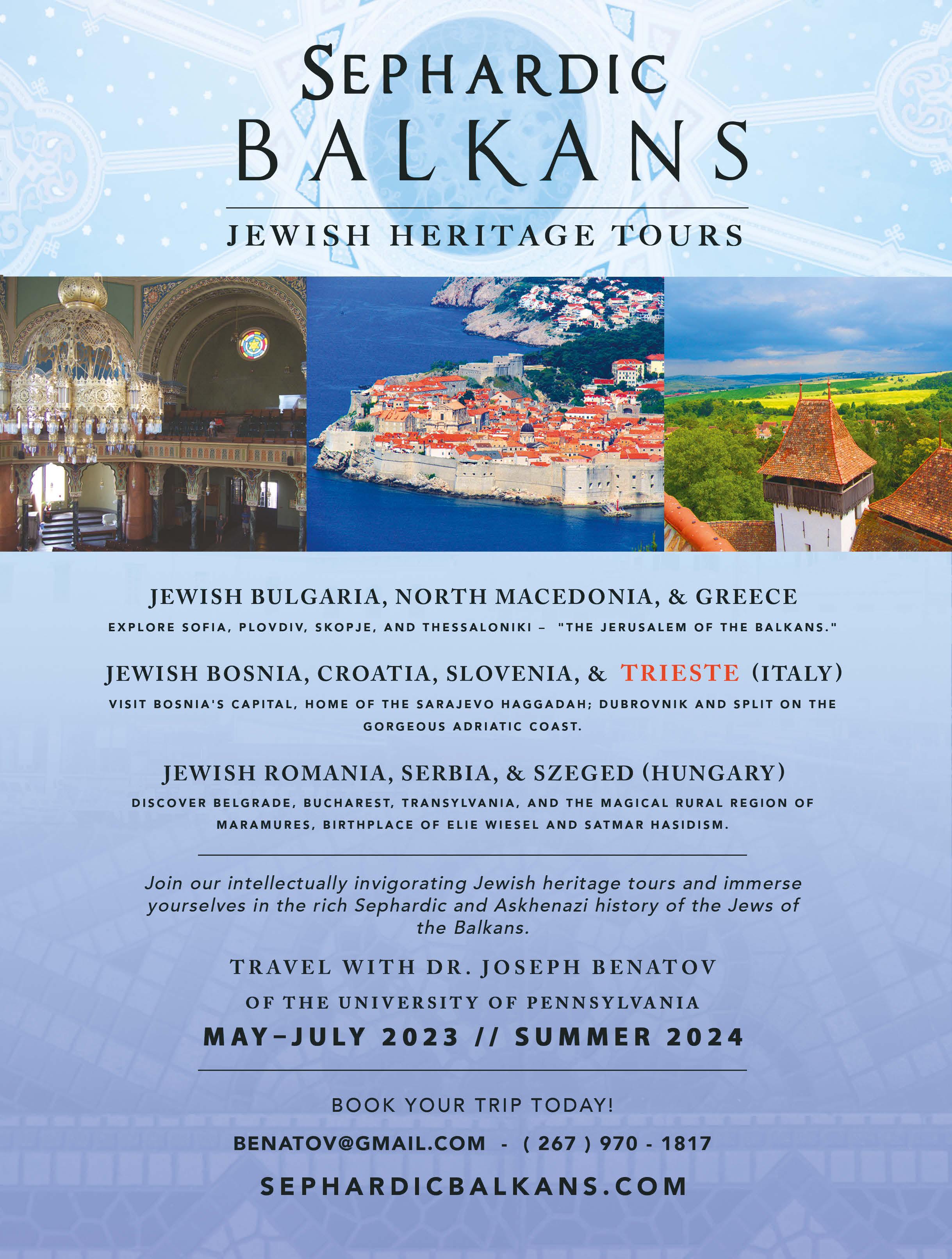





 By Diane Cole
By Diane Cole
Aprayer shawl of many colors enfolds today’s Jewish community, a population that, like America as a whole, is increasingly diverse. The Pew Research Center study “Jewish Americans in 2020” reported that 15 percent of those aged 18 to 29 also identified as Black, Hispanic, Asian, multiracial or other ethnicity. The study additionally found that among American Jews 30 and under, 29 percent are members of households that include one or more individuals who identify as Black, Hispanic, Asian, multiracial or other ethnicity.
Given these numbers, it is hardly surprising that Jewry’s multicultural
mix has brought forth a plethora of books that describe that diversity. Recent offerings include memoirs such as Marra B. Gad’s The Color of Love and Nhi Aronheim’s Soles of a Survivor and histories like Once We Were Slaves by Reed College professor Laura Arnold Leibman. There are Speaking of Race, a how-to guide from journalist Celeste Headlee, and an essay collection titled The Racism of People Who Love You from Samira K. Mehta, a professor of women and gender studies as well as director of the Jewish Studies program at the University of Colorado Boulder. Taken together, these volumes provide a welcome entrée into



Engaging Narratives Books offer entryways into tough conversations and reveal the past through multiracial Jews like Sarah Brandon Moses and Isaac Lopez Brandon (in painted miniatures, top and middle row) and the present, in works from Marra B. Gad (top row, left), Celeste Headlee, Nhi Aronheim (top row, right) and Samira K. Mehta (bottom row).
engaging in tough conversations around the differences as well as the similarities among Jews today.
But is the composition of today’s American Jewish population that different from past generations? Far less than you might imagine, according to Leibman. In Once We Were Slaves: The Extraordinary Journey of a Multi‑ racial Jewish Family (Oxford University Press), she traces the roots of wealthy New Yorker Blanche Moses, a descendant of one of the oldest and most prominent Jewish families in the United States, to the 18th century Black and Jewish communities on the Caribbean islands of Barbados and Suriname.
Starting with objects passed down through the generations—two painted ivory miniatures of Moses’s ancestors, Sarah Brandon Moses (1798-1829) and her brother Isaac Lopez Brandon (1793-1855)—Leibman unravels the family’s stories. Both Sarah and Isaac were born “poor, Christian and enslaved,” Leibman writes. Although their father, Abraham Rodrigues Brandon, was one of the wealthiest and most influential Jews in the Sephardi community in Barbados, their mother—Abraham’s common-law wife, Sarah Esther Lopez-Gill—was of both white and African ancestry and was born enslaved to a Christian household.
Moreover, Leibman notes in the book, “Sarah and Isaac were not the only people in this era who had both African and Jewish ancestry. The siblings’ story reveals the little-known history of other early multiracial Jews, which in some of the places the Brandons lived [in the Caribbean] may have been as much as 50 percent of early Jewish communities.”
What distinguishes the story of Sarah and Isaac, Leibman writes, is their father’s wealth and ambitions for his offspring that offset many of the challenges they faced because of their mixed heritage. His influence in the Caribbean Jewish community smoothed the children’s conversion to Judaism and their eventual acceptance in the local congregation, which he headed. He helped pay for their freedom and, just as important, brought them to England and guided their entrance as white Jews into the Jewish communities of Britain and the United States.
Sarah eventually met and married Joshua Moses and moved to New York City. When her brother applied for American citizenship, he similarly had no difficulty meeting the require-
ment that he be a free white man. Over the decades that followed, their origin story gradually faded into obscurity.
Alas, so did the stories of other Jews of mixed race ethnicity, resulting in the history of the Black Jewish experience becoming mostly invisible, writes Leibman. This absence feeds the mistaken assumption that a person whose skin color is not white is also not Jewish.

Leibman cites instances throughout the 19th century and later when Jews of color were confronted in American synagogues about who they were and why they were there.
“Prejudice is also part of the story of American Judaism,” Leibman writes in the prologue to Once We Were Slaves. “I hope by recognizing that past we will continue to move forward toward a more equitable and inclusive future.”
Bias in the jewish community is brought to the fore in Marra B. Gad’s powerful memoir, The Color of Love: A Story of a MixedRace Jewish Girl (Agate Bolden). Born to an unwed white Jewish mother and an unnamed Black father, Gad, an independent film and television producer in Los Angeles, was adopted by a Jewish family in Chicago as an infant.
“In the Jewish community, there has always been some level of confusion around the nature of my brown existence—especially around the notion that I was born a Jew and that I did not convert to become one,” she relates in her book. “To this day, I am routinely asked when I go to syna-
gogue if I am ‘in the right place.’ I am assumed to be ‘the help’—the kitchen help, someone’s nanny. Rarely am I simply welcomed with a smile like my Eastern European-looking family members.”
Enveloped by a loving and supportive family growing up, Gad writes about feeling nurtured by her family but confused when subjected to the racism of others because she is biracial. In The Color of Love, she recounts stories about Jews who couldn’t believe she was really Jewish and about members of the Black community who regarded her as not Black enough.
There were neighbors and strangers alike who puzzled over why she did not have the same skin color as her parents and “nice Jewish boys” who wouldn’t date her because, they told her, they wouldn’t know how to explain her to their parents.
The cumulative impact of this
Join us on Thursday, March 16 at 7 PM ET as Hadassah Magazine Executive Editor Lisa Hostein moderates a discussion that will explore issues of identity and belonging that have motivated a growing number of Jewish women of color to write about their experiences. The program will feature Celeste Headlee, a Black and Jewish award-winning journalist, radio host and author of Speaking of Race ; Samira K. Mehta, a professor of women and gender studies as well as Jewish studies at the University of Colorado Boulder and author of the recently published The Racism of People Who Love You ; and Emily Bowen Cohen, a Jewish Native-American artist and writer whose graphic novel for children, Two Tribes , will be published later this year.
This event is free and open to all. To register, go to hadassahmagazine.org
constant scrutiny of her appearance and the questioning of her belonging “warped the lens with which I viewed myself,” she writes.
What helped sustain her, how ever, was her belief “that we are all born as loving beings” and the deter mination that she could not respond to other people’s hatred with more hatred. “I stand with two feet solidly planted in love,” she writes. “Because I know what it is to be deemed un‑ worthy and hated because of my skin color and because of my religion. And because I will not be an instrument that puts more hate into the world.”
There are many multicultural paths to Judaism. Nhi Aronheim’s is, perhaps, among the most distinct. Today she lives in Denver, where she is a longtime member of Hadas sah and where she and her family are part of a Conservative Jewish com munity. She was born in the 1970s, however, in a very different world, in
Award-winning journalist, radio host and author Celeste Headlee is often approached to discuss bias, discrimination
what was then South Vietnam, and grew up in poverty in the slums of Ho Chi Minh City, as she relates in her memoir Soles of a Survivor (Skyhorse Publishing).
The book describes how, at the age of 12, without her family, she made a perilous escape that took her through the jungles of Cambodia to a refugee camp in Thailand. She lived there for two years until she qualified for refugee status and came to the United States, where she was adopted as a teenager by a Christian family in Louisville, Ky., and began to assim ilate into mainstream American culture.
She faced another kind of accul turation when, after she finished col‑ lege and began a successful career in telecommunications, she met her hus band to be, Jeff, who is Jewish. When he asked her to consider converting, together they visited a variety of syn agogues and chose one where, even

and how to communicate about potentially difficult subjects. Her TEDx talk “10 Ways to Have a Better Conversation” went viral and has been viewed over 34 million times. In her latest book, Speaking of Race , she draws on research on bias and communications to give practical advice on how to navigate the hard discussions that crop up around our racial divisions. Headlee, who lives in the Washington, D.C., area, offered via email a few suggestions, edited for brevity, for making Jews of color feel welcome in Jewish spaces.
What are some common issues that Jews of color experience in synagogue?
though she was the only Asian face in the sanctuary, she felt welcomed and accepted by the other members. The rabbi, however, treated her wish to convert with skepticism and encour aged the couple not to join.
After they were married, Aron heim and her husband returned for a second interview with the rabbi after which he agreed, still somewhat grudgingly, to oversee her conversion and affirm their synagogue mem bership. “The process of conversion was challenging,” she writes. “It’s difficult for most people, but it was particularly difficult for me, an Asian woman adopted into a Christian household.”
Despite those difficulties, like Gad, Aronheim chooses to focus on love.
“Now I relish being a Vietnamese Jew,” she writes, noting the impor tance of radiating “goodness to those we meet” regardless of their religion and background.
One is that people don’t look at you when you go into the synagogue. They’re avoiding eye contact. That’s partly because people are afraid to get into a conversation that might involve race. But it exacerbates the problem in that it makes that person of color feel othered and not welcomed.
Another is asking “What brings you here?” As though it’s odd that you’re in a synagogue, or that you don’t belong there. Any question that implies in any way that that person does not belong there or doesn’t know what they’re doing is probably a question that is not inclusive.
What’s the best way to apologize if one’s behavior or words are seen as insensitive?
This is a great question. One
of the reasons it’s so great is that you will make mistakes. There is no way that any of us can know everything there is to know about other cultures, so at some point we’re going to stick our toe over the wrong line.
The number one thing to do is make no excuses. Simply say, “I’m sorry,” without justification, without an explanation.
Even if all they do is give you a look, you can say, “By the look on your face it sounds like I said the wrong thing. I’m so sorry if that’s true.”
The next thing is to identify what it is that you said wrong, if you know what it is. Then ask for and welcome any feedback to help you understand how to avoid such errors in the future.
—Diane ColeTwo important new essay collections answer questions around how to navigate and talk about prejudice, both in the Jewish community as well as the larger society.
Award-winning journalist Celeste Headlee frequently addresses the topic both in her writing and as president and CEO of Headway DEI, a nonprofit that consults on diversity issues for journalists and the media.
Her background, she notes in her most recent book, Speaking of Race: Why Everybody Needs to Talk About Racism—and How to Do It (Harper Wave) gives her a unique perspective.
“Because I am a light-skinned Black Jew, sometimes called ‘racially ambiguous,’ I’ve been talking about race for as long as I can remember,” she writes. In thoughtful, careful detail, interspersed with anecdotes from her own life and the people she has met, she breaks down fraught racial issues. Emphasizing the importance of having conversations, “lots of short, low-stakes conversations,” she gives examples of strategies and techniques that will help foster calm, productive dialogue.
“The truth is that everyone is biased. Everyone. We all make assumptions about people based on superficial observations,” she writes in the forward. Her book is intended to help readers “recognize that you can disagree with someone strongly and yet have the conversation anyway. Debates have changed very few minds, but conversations have the power to change hearts.”
In an email interview, Headlee talked about some of the biases in the Jewish community and the importance of being more sensitive and welcoming to Jews of color. She counseled synagogue members to embrace Jews of color wholeheart-
edly. “Show them that you are happy to see them,” she said.
“That’s how you include that person in your service. Don’t instruct them or teach them how the service is going to go—which is really common—because it’s possible they’ve been going to synagogue their whole lives. It’s possible they had a bar mitzvah,” she said. “They may be as schooled in Judaism as anyone else there, so telling them how things go can be extremely condescending.” (See sidebar on page 50 for more tips from Headlee.)
Samira K. Mehta’s The Racism of People Who Love You: Essays on Mixed Race Belonging (Beacon Press) touches on similar issues. However, Mehta’s book is less of a how-to than a collection of meditative essays that range from the personal to the political. By book’s end, we have gotten to know her—and trust her insights. The author of a previous book, Beyond Chrismukkah: The Christian-Jewish Interfaith Family in the United States, Mehta also heads the “Jews of Color: Histories and Futures” project, an initiative that studies the experiences of Jews of color in the United States, at the University of Colorado Boulder, where she teaches.
In one of the book’s most engaging essays, “Where Are You Really From?: A Triptych,” she helps readers understand her frustration when people she has newly met ask her, a bit too insistently, just that question. The reason, she explains in the book, is because even after she answers, truthfully, that she was raised outside of New Haven, Conn., too often the follow-up question is, “But where are you really from?”
To Mehta, a Jew by choice who is the daughter of a white Protestant mother from the Midwest and
Join us on Thursday, April 20 at 7 PM ET as Hadassah Magazine Executive Editor Lisa Hostein interviews

best-selling author Pam Jenoff about her latest historical fiction book, Code Name Sapphire . Set during World War II and centered around three compelling women, the novel is inspired by true stories of resistance during World War II. The page-turner, filled with complex family relationships, secrets and betrayals, explores the sacrifices and bravery of women during perilous times.
This event is free and open to all. To register, go to hadassahmagazine.org .
an immigrant father from India, the query can sound nosy or, worse, insulting. Is the person she has just met insinuating that she does not really belong—that she is not really Jewish, or really white or really South Asian?
In a Zoom interview, Mehta added that slights like these may be thoughtlessly unintentional, but they sting nonetheless for their suggestion that she is an outsider. But you can— and should—try to mend the hurt by talking about it, she said.
“If your intent was not to make me feel bad, but just curiosity, then you must actively listen when I tell you how your comments made me feel,” Mehta said.
In her book, Mehta does not directly write about her conversion to Judaism. Rather, the meaning and joy she finds in Jewish tradition, ritual and culture—matzah ball soup is her
go-to comfort food—are made clear throughout. And she, too, brings up questions and problems that have arisen during Jewish religious services.
“At the synagogue, treat me like I am a member, a friend of a member or a prospective member,” she said in the Zoom call. During kiddush lunch, for instance, she suggests such conversation openers as asking about a favorite bagel place or the rabbi’s sermon.
The most difficult conversations, Mehta writes, are those with people (as her title suggests) whom she reciprocally loves and cares about—but who also have blind spots about some of their own biases. She acknowledges that such conversation can be challenging, regardless of an individual’s background.
Among the many tunes that bring us to a Passover state of mind—from “ Dayenu ” to the ditty about that one young goat— Debbie Friedman’s “Miriam’s Song” stands out. A catchy folk anthem that describes Miriam leading the women’s-only dance and singalong after the parting of the Red Sea, the song inspired generations of campers to sing about the Exodus.
The famed singer-songwriter’s joyous reimagining of Jewish texts befits every seder. And that is why two picture books about Friedman’s life and music top this selection of new children’s reads for the holiday, a list that reverberates with joy, magic and whimsy.
Both Debbie’s Song: The Debbie Friedman Story by Ellen Leventhal, illustrated by Natalia
In Jewish communities, however, the fact that we all feel vulnerable to antisemitism can make these talks particularly difficult. “Because Jews experience antisemitism, they can feel that they can’t possibly be doing anything or saying anything that is racist or can be misunderstood that way,” she said. “If you believe in tikkun olam, having someone say you said or did something racist can strike at your sense of self, at your core sense of being a good Jew.”
Rather than walk away hurt, talk through the issues, Mehta encouraged. “I’ve been in conversations where, after a discussion of a misunderstanding, I’ll say, ‘You know, I may have been overly sensitive, I was wrong to call you out.’ And that is fine,” she said, “because you will have
a better understanding of each other and cleared the air.”
That hope for better understanding of the experiences and history of our increasingly multicultural Jewish community is the thread that ties together this selection of books. They become a way to investigate assumptions and stereotypes about who and what Jews are and look like.
Mehta suggests in her book to “take it upon yourself to become more open.” Reading about the struggles of women of color with Jewish heritage may help all of us open up and welcome each other into a common fold.
Diane Cole is the author of a memoir, After Great Pain: A New Life Emerges, and writes for The Wall Street Journal, The Washington Post and other publications.
Meanwhile, holiday preparations take over a pirate’s ship in Pirate Passover by Judy Press, illustrated by Amanda Gulliver (Kar-Ben). In lilting rhymes, the diverse crew led by red-haired Captain Drew cleans and preps for seder night only to have a storm disrupt their plans. Chaos erupts, complete with “matzah balls rolling along the ship’s plank” and sinking into the ocean depths.

Grebtsova (Kar-Ben), and A Place to Belong: Debbie Friedman Sings Her Way Home by Deborah Lakritz, illustrated by Julia Castaño (Apples & Honey), focus on how Friedman, who passed away in 2011, brought foot-stomping joy and a passion for music into Jewish liturgy and texts. Debbie’s Song includes her time on a kibbutz in Israel and a helpful Hebrew glossary.
Joyful reinvention and silliness infuse books that showcase Passover on the high seas. In
Under-the-Sea Seder , written and illustrated by Ann D. Koffsky (Apples & Honey), Miri’s mother and father attempt to stop her boisterous activity during the seder in scenes likely familiar to many parents. Miri and her cat then slip beneath the table into an imaginary “seder submarine,” which carries them to a Passover celebration with colorful sea creatures. How is this night different from other nights? Because on this night, Miri says, “there are three sea monsters.”
Afikomen by Tziporah Cohen, illustrated by Yaara Eshet (Groundwood Books), is another magical adventure that starts under the seder table, where three siblings, looking to hide the afikomen, are brought back in time to ancient Egypt to help a young Miriam hide baby Moses on the Nile. Beautifully illustrated, the wordless picture book will allow children to weave their own voices and interpretations into the story as it develops from page to page.
—Leah FinkelshteynIt should come as no surprise that Pam Jenoff has produced another pageturner with her newest novel, Code Name Sapphire Weaving together littleknown stories of resistance during the Holocaust, the historical thriller illuminates the role of women in a secret network that rescued downed Allied airmen during World War II.
Jenoff, whose previous best sellers include The Lost Girls of Paris and The Woman With the Blue Star, is well-qualified to explore these events. She has a master’s in history as well as a law degree and has worked at the Pentagon and at the United States Consulate in Krakow, Poland, focusing on, among other issues, the restitution of property taken by the Nazis.
Code Name Sapphire introduces us to a trio of compelling women: German cartoonist and satirist Hannah Martel, whose tragic backstory includes a narrow escape from Nazi Germany; her wealthy cousin Lily Abel, who hides Hannah in her home in Nazi-occupied Brussels; and strong-willed, secretive Miche-

line, who, with her brother, Matteo, runs the Sapphire Line, a dangerous underground resistance network.
The fast-paced story alternates between the viewpoint of the three women, each trying to survive under an increasingly restrictive occupation. Desperate to leave Nazi territory for safety in the United States, Hannah is forced to help Micheline smuggle Allied pilots to safety through Brussels, Holland and France.
Lily, however, is determined to keep to her daily routines: “Stay silent, Lily thought…that was the lesson of the war and the only way to survive it.” She pretends that life will continue much as it had before the occupation, even as her husband, Nik, is deprived of his medical










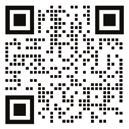
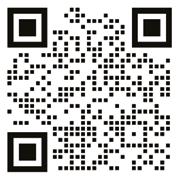
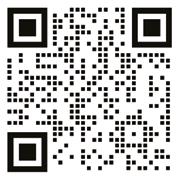


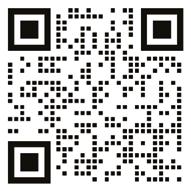
practice because he is Jewish.
Nevertheless, Hannah and Micheline’s clandestine activities draw Lily and her family into danger—and a heart-pounding conclusion—as the women must choose between family and freedom, safety and resistance.
Set against the backdrop of love, lost and found; complicated family relationships; and secrets and betrayals, Code Name Sapphire most of all explores the bravery of women under siege. As Hannah acknowledges to herself, “No one bestowed courage or freedom or self-determination—one simply decided to take it.”
An author’s note describes the true stories that inspired the novel, from an attempt to liberate prisoners on a train to Auschwitz by three men from the Jewish Defense Committee to the work of the Comet Line, a Belgian network that used 3,000 civilians to help 775 Allied airmen escape occupied Europe.
Through her new novel, Jenoff writes, she is highlighting the unsung heroines of the resistance movements, as “so many stories of women have been lost to a history that ignored them.”
Around 70 percent of the operatives in the Comet Line were women; not all of them survived the war. Code Name Sapphire is a testament to their bravery.
—Stewart KampelStewart Kampel was a longtime editor at The New York Times
Kantika By Elizabeth Graver (Metropolitan Books)Elizabeth Graver’s newest novel is a sprawling saga of a Sephardi Jewish family centered around one strongwilled woman, Rebecca Cohen. A
Over many best-selling novels, Schine has demonstrated her talent for creating unforgettable characters using empathy and humor. Here, a trio spends the early months of the pandemic locked down together: 93year-old Salomea, known as Mamie; her housekeeper/friend; and her 20-something grandson from New York City. Mamie is teaching her grandson “the ways of the world. A vanished world, but so be it” as she recounts for him family stories of Vienna—her family left in 1939—and their new lives in Los Angeles among a community of artists.
Novey is a poet and the author of two previous novels; her first, Ways to Disappear , won the Sami Rohr Prize for Jewish Literature in 2017. She has described herself as an Appalachian Jew, and this novel is set in the Allegheny Mountains where she grew up. The narrative unfolds through the alternating voices of two women—Leah, who fled her hometown, and Jean, her estranged stepmother. Upon Jean’s death, Leah returns and learns that her stepmother had become a sculptor, welding towers of metal from found materials. In vibrant yet spare prose, Novey tells a story of finding beauty in what had been cast aside.
The Best Minds: A Story of Friendship, Madness, and the Tragedy of Good Intentions by Jonathan Rosen (Penguin) Rosen’s childhood best friend and Yale classmate, Michael Laudor, grew up in a liberal, Jewish home in New Rochelle, N.Y. Laudor was known to be brilliant. Twenty-five years ago, however, he killed his pregnant girlfriend, a tragedy that still reverberates for Rosen. An accomplished author, Rosen
writes of their parallel coming of age and rigorously researches the web of Laudor’s life. This is an important work about schizophrenia and mental health policy—and about helping people who need help.
The Best Strangers in the World: Stories from a Life Spent Listening by Ari Shapiro (HarperOne)
Shapiro, a host of NPR’s All Things Consid‑ ered , begins his memoir-in-essays by recalling that he became a public speaker in first grade in Fargo, N.D., when he was charged, as one of few Jews, to explain Hanukkah to his school. That, and his later experience as an openly gay teen in Portland, Ore., sparked his passion for listening and making connections. A man of wide curiosity, he recounts the stories behind some of the stories he has reported, understanding that one of the best ways for a journalist to tell a big story is through a small one.
Unearthed: A Lost Actress, a Forbidden Book, and a Search for Life in the Shadow of the Holocaust by Meryl Frank (Hachette)
Frank, who was appointed by President Barack Obama to be ambassador to the United Nation Commission on the Status of Women, is not the child or grandchild of survivors. However, she grew up preoccupied with the past—with what had happened to her extended family before, during and after the Shoah. Through extensive research, she tracks down her family’s history, in particular the tragic story of a cousin who was a leading figure in Vilna’s Yiddish theater.
Sandee Brawarsky is a longtime columnist in the Jewish book world as well as an award-winning journalist, editor and author of several books, most recently 212 Views of Central Park: Experiencing New York City’s Jewel From Every Angle.
work of historical fiction, Graver explains in an author’s note that the story is loosely based on her maternal grandmother of the same name. Indeed, the author uses real names and actual family photographs throughout the book, even as she
takes liberties with facts and fictionalizes personal experiences. The result is a story of immigration, tenacity, family bonds and change that sits in a sort of liminal space between fact and fiction, making for fascinating reading.
CHARITABLE SOLICITATION DISCLOSURE STATEMENTS
HADASSAH, THE WOMEN’S ZIONIST ORGANIZATION OF AMERICA, INC.
40 Wall Street, 8th Floor – New York, NY 10005 – Telephone: (212) 355-7900
Contributions will be used for the support of Hadassah’s charitable projects and programs in the U.S. and/ or Israel including: medical relief, education and research; education and advocacy programs on issues of concern to women and that of the family; and support of programs for Jewish youth. Financial and other information about Hadassah may be obtained, without cost, by writing the Finance Department at Hadassah’s principal place of business at the address indicated above, or by calling the phone number indicated above. In addition, residents of the following states may obtain financial and/or licensing information from their states, as indicated. DC: The Certificate of Registration Number of Hadassah, The Women’s Zionist Organization of America, Inc. is #40003848, which is valid for the period 9/1/2021-8/31/2023. Registration does not imply endorsement of the solicitation by the District of Columbia, or by any officer or employee of the District. FL: A COPY OF THE OFFICIAL REGISTRATION AND FINANCIAL INFORMATION FOR HADASSAH, THE WOMEN’S ZIONIST ORGANIZATION OF AMERICA, INC. (#CH-1298) AND HADASSAH MEDICAL RELIEF ASSOCIATION, INC. (#CH-4603) MAY BE OBTAINED FROM THE DIVISION OF CONSUMER SERVICES BY CALLING TOLL-FREE 1-800-HELP-FLA, OR ONLINE AT www.FloridaConsumerHelp.com. KS: The official registration and annual financial report of Hadassah, The Women’s Zionist Organization of America, Inc. is filed with the Kansas Secretary of State. Kansas Registration #237-478-3. MD: A copy of the current financial statement of Hadassah, The Women’s Zionist Organization of America, Inc. is available by writing 40 Wall Street, 8th Floor, New York, New York 10005, Att: Finance Dept., or by calling (212) 355-7900. Documents and information submitted under the Maryland Charitable Solicitations Act are also available for the cost of postage and copies, from the Maryland Secretary of State, State House, Annapolis, MD 21401 (410) 974-5534 MI: Hadassah, The Women’s Zionist Organization of America, Inc. MICS #13005/Hadassah Medical Relief Association, Inc. MICS # 11986/ The Hadassah Foundation, Inc. MICS #22965. MS: The official registration and financial information of Hadassah, The Women’s Zionist Organization of America, Inc. may be obtained from the Mississippi Secretary of State’s office by calling 1(888) 236-6167. NJ: INFORMATION FILED BY HADASSAH, THE WOMEN’S ZIONIST ORGANIZATION OF AMERICA, INC. AND HADASSAH MEDICAL RELIEF ASSOCIATION, INC. WITH THE NEW JERSEY ATTORNEY GENERAL CONCERNING THIS CHARITABLE SOLICITATION AND THE PERCENTAGE OF CONTRIBUTIONS RECEIVED BY THE CHARITY DURING THE LAST REPORTING PERIOD THAT WERE DEDICATED TO THE CHARITABLE PURPOSE MAY BE OBTAINED FROM THE ATTORNEY GENERAL OF THE STATE OF NEW JERSEY BY CALLING (973) 504-6215 AND IS AVAILABLE ON THE INTERNET AT www.njconsumeraffairs.gov/charity/chardir.htm. NC: FINANCIAL INFORMATION ABOUT HADASSAH, THE WOMEN’S ZIONIST ORGANIZATION OF AMERICA, INC. AND A COPY OF ITS LICENSE ARE AVAILABLE FROM THE STATE SOLICITATION LICENSING BRANCH AT 919-8145400 OR FOR NORTH CAROLINA RESIDENTS AT 1-888-830-4989. PA: The official registration and financial information of Hadassah, The Women’s Zionist Organization of America, Inc., Hadassah Medical Relief Association, Inc., and The Hadassah Foundation, Inc. may be obtained from the Pennsylvania Department of State by calling toll free, within Pennsylvania, 1(800) 732-0999. VA: A financial statement of the organization is available from the State Division of Consumer Affairs in the Department of Agriculture & Consumer Services, P.O. Box 1163, Richmond, VA 23218, Phone #1 (804) 786-1343, upon request. WA: Hadassah, The Women’s Zionist Organization of America, Inc., Hadassah Medical Relief Association, Inc. and The Hadassah Foundation, Inc. are registered with the Washington Secretary of State. Financial disclosure information is available from the Secretary of State by calling 800-332-GIVE (800-332-4483) or visiting www.sos.wa.gov/charities. WV: West Virginia residents may obtain a summary of the registration and financial documents of Hadassah, The Women’s Zionist Organization of America, Inc. from the Secretary of State, State Capitol, Charleston, WV 25305. WI: A financial statement of Hadassah, The Women’s Zionist Organization of America, Inc. disclosing assets, liabilities, fund balances, revenue, and expenses for the preceding fiscal year will be provided to any person upon request. ALL STATES: A copy of Hadassah’s latest Financial Report is available by writing to the Hadassah Finance Dept., 40 Wall Street, 8th Floor, New York, New York 10005. REGISTRATION DOES NOT CONSTITUTE OR IMPLY ENDORSEMENT, APPROVAL, SANCTION OR RECOMMENDATION BY ANY STATE. Charitable deductions are allowed to the extent provided by law. Hadassah shall have full dominion, control and discretion over all gifts (and shall be under no legal obligation to transfer any portion of a gift to or for the use or benefit of any other entity or organization). All decisions regarding the use of funds for any purpose, or the transfer of funds to or for the benefit of any other entity or organization, shall be subject to the approval of the Board or other governing body of Hadassah. The Hadassah Foundation, Inc. is a supporting organization of Hadassah, The Women’s Zionist Organization of America, Inc. September 2022
The lyrical novel, whose title is the Ladino word for “song,” opens in 1907 in Constantinople. By 1925, the Cohen family has moved to Barcelona, having lost their money and social status in the Ottoman capital during World War I. Rebecca chafes against the cloistered role expected of a young Jewish woman in Spain. Tenacious in her desire to help her impoverished family, she pursues work as a dressmaker and sets up a successful shop, though she must hide her Jewishness. By the time she is 24, she is married and has two sons— discovering the joys of motherhood even as her marriage fails: “Her old determination has been strengthened to almost bullish proportions by the birth of her children and the pathetic behavior of their so-called father,” Graver writes.

Kantika takes readers from Spain to Havana and then to America, with an arranged second marriage along the way. Rebecca’s determination to ensure her family’s survival steers her through loss, displacement and the all-too-common antisemitism of the era. Indeed, Rebecca’s focus on survival is at the core of the book. Through hardships, through times of plenty, she “does” for her family. And that includes her stepdaughter, Luna, a young woman with a disability. Their well-drawn relationship is the most compelling in the book, and Rebecca’s advocacy helps Luna come into her own.
While most of the book is richly detailed and impeccably plotted, the final section feels condensed and
rushed, just as Rebecca finally gains a measure of happiness. Whether this is intentional or not is unclear, but it does make for an abrupt ending for a character who deserves better.
Contemporary Jewish fiction and immigrant sagas are for the most part overwhelmingly Ashkenazi, so this Sephardi story from a Sephardi author, threaded throughout with Ladino phrases and distinct cultural touchstones, is welcome.



 —Jaime Herndon
—Jaime Herndon
Jaime Herndon is a writer and avid reader. Her work can be found on Book Riot, Undark, Kveller, Motherly and other places.
Like the brides in a Chagall painting, the images described in Lilith magazine’s collection of short stories float above the earth, surreal visuals that are nevertheless tethered to reality. There is the mikveh in the California woods where Orthodox women cleanse themselves of their secrets and pray for their fervent desires; a white satin chuppah under which a bride dreams of another (non-Jewish) man; the eggplants, potatoes, tomatoes and peppers that an Ethiopian immigrant to Israel cooks into a savory stew to make her new country feel like home.
Together, the stories create a powerful portrait of Jewish women’s experiences. They span a broad multicultural, cross-denominational and feminist scope as they explore relationships in which readers will encounter the “comfortably familiar and dangerously illicit,” the editors note in the prelude.

PERPETUAL YAHRZEIT
Kaddish will be recited annually for your loved one in perpetuity in the Fannie and Maxwell Abbell Synagogue at Hadassah Medical Center beneath Marc Chagall’s iconic stained glass windows.
ENHANCED PERPETUAL YAHRZEIT

Kaddish will be recited for your loved one daily for 11 months after burial, after which Kaddish will be recited annually.


ADVANCE YAHRZEIT
A reservation to ensure Kaddish will be recited for you and your loved ones upon their death. Available in standard and Enhanced Perpetual Yahrzeit.
The 44 stories in the collection were selected from 200 originally published in the feminist Jewish magazine since its founding in 1976. Divided into six sections—Transi-
tions, Intimacies, Transgressions, War, Body and Soul, To Belong—the stories teem with women’s insights on life, from conception to Kaddish.

Yiddish author Esther Singer
Kreitman— Isaac Bashevis Singer’s sister— writes from the perspective of a newborn in “The New World,” translated from the Yiddish by Barbara Harshaw. The baby hears her mama say, “Of course I would’ve been happier if it had been a boy.”
“I listen to all of this,” the baby thinks, “and it is very sad for me to be alive. How come I was born if all the joy wasn’t because of me!” In her real life, Kreitman’s mother destroyed all her early writings for fear that they would make her unmarriageable.
In many of the stories, characters use their voices to demonstrate their independence as risk-takers and rule-breakers. The seemingly mundane activity of two Orthodox teens putting on makeup is tinged with sexual taboo in Elena Sigman’s “Face Me.” In “Flight,” Phyllis Carol Agins traces 80-year-old Hanina’s journey backward from the present—living with her son in Philadelphia—to her escape from her policeman husband’s restrictions in France when she was 37 then to her time spent wandering the Arab market and baking bread with her mother in Algeria at age 13.
These are stories that will stay with readers. They are alternately fraught with emotion and lightly lined with humor and tenderness; stained with antisemitism and filled with the ultimate human desire to belong.
 —Rahel Musleah
—Rahel Musleah
We provide vans for underprivileged special needs children , seniors , and those with debilitating illnesses .



This is indeed a “life-changer”, enabling a hassle-free way to doctor and therapy appointments, attending family events, socializing with friends... for many who live every day with loneliness.
$45,000 - used wheelchair van

$20,000- adapt a minivan
$5,000 - refurbish a donated van (contact us for naming opportunities)
Order these books directly through the Hadassah Magazine website! Just go to Hadassahmagazine.org and click on Guide to Jewish Literature.
Jennifer Rosner
From Jennifer Rosner, National Jewish Book Award finalist and author of The Yellow Bird Sings, comes a novel based on true stories of children displaced in the wake of World War II. What happens when the war ends and the children are wrenched from what they long considered their families? Or when the people who saved them refuse to let them go? Called “lush, transportive, and heartbreaking” by Kristin Harmel and heralded a “tour-de-force” by Kate Quinn, Once We Were Home raises wrenching questions of belonging and identity, good intentions and unforeseen consequences, and what it means to find home. Available at https://us.macmillan.com/ books/9781250855541/once-we-were-home.


Oscar Sladek with Corinne Joy Brown
“A masterpiece of love and survival” – James Carroll (Constantine’s Sword). “A gripping page-turner… as dramatic and powerful an account of the Holocaust era as a reader is likely to fi nd.” Chris LeppekIntermountain Jewish News. The Štaub family; Irene, Frici, and young son Oskar, citizens of Prešov, Slovakia, flee into the forbidding Tatra mountains in the winter of 1944. Young Osi finds the courage and resiliency to cope with physical and emotional challenges far beyond his years. EscapeToTheTatras.com and Amazon. Audiobook available on Audible.
Minou Soumekh
Michlin
“Deeply inspirational. A poignant account of growing up in Iran”— Jewish Book Council. From the labyrinth of narrow alleys in Tehran’s Grand Bazaar to a Jerusalem Hadassah Hospital ward, this unforgettable memoir portrays the complicated love among mothers and daughters and the hardships and tenacity of Jewish life in Iran and a newly independent Israel. A polio diagnosis in 1940’s Iran condemned Minou to a lonely fate as a spinster. She defies prejudice and charts her own path to freedom. Minou’s story will move anyone who has braved the unknown and kept on walking. Amazon and Barnes & Noble.
Jennifer Caplan
In this innovative and insightful book focused on the relationship between humor and American Jewish practice, Jennifer Caplan calls us to adopt a more expansive view of what it means to “do Jewish,” revealing that American Jews have turned to humor as a cultural touchstone. Jewish humor operates as a system of meaning-making for many. By mapping humor onto both the generational identity of those making it and the use of Judaism within it, new insights about the development of American Judaism emerge. Caplan’s includes the work of Joseph Heller, Larry David, Seinfeld, the Coen brothers films, Broad City, and others.


184 pages; paperback ($36.99) and hardcover ($94.99) editions available. Order at wsupress.wayne.edu or by calling 800-978-7323.

Once called “Manhattan’s Bedroom” famous comedians, actors, physicians, scientists and business leaders called this diverse neighborhood in the shadow of LaGuardia Airport, “home.” They played stickball in its streets and handball in its schoolyards. The roster of alumni includes comedians John Leguizamo and Don Rickles, NASA scientist Dr. Willey Ley, shock jock Howard Stern, actor Mercedes Ruehl, rock musician Gene Simmons of KISS – and me, Cary Silverstein! Join me as I share stories of my youth, my family, and why growing up in Jackson Heights had such a profound impact on my life and the lives of my friends. Available on Amazon.
Christian missionaries calling themselves messianic “Jews,” Jews ingratiating themselves to Evangelical Christians for their support of Israel, the overuse of the term “Judeo-Christian,” and the increasing use of Jewish rituals in Christian churches are among the factors that blur the lines between Judaism and Christianity. Judaism and Christianity: A Contrast explains, from a Jewish perspective, the irreconcilable di erences and mutually exclusive beliefs of the two faiths. Now available in Spanish, as Judaismo y Cristianismo: Un Contraste. Available at Amazon and Barnes and Noble in hardcover, paperback and in all e-book formats.


Rebecca
D’Harlingue
In 1661, Jacinta flees Madrid, vanishing with an awful secret. Three centuries later and a continent away, Rachel discovers old papers hidden away. As she reads, a tragic secret generations-old unfolds, revealing both the reason for the flight so long ago, and the meaning of her own mother’s enigmatic dying words. Winner or finalist for awards in the categories of Best New Fiction, Historical Fiction, and Literary Fiction.
Available on Amazon or wherever you buy books. Author would love to meet with your group or book club via Zoom. Contact the author and fi nd out more on her website.

Alice Reiter Laby
The year is 1937 in the fi rst pages of this intriguing World War II novel, an important year for Henry Rebbeno . He hopes to be hired as the new Cantor of Temple Beth Elohim in Charleston, South Carolina, and he meets the lovely southern Jewish belle Ada Tobias. As war comes to America’s shores, Cantor Henry must make decisions that will a ect him and his family. Does he make the right choices? Journey over the years with Henry through this beautifully written novel. Available on Amazon.
Saga of Generations is a family story of Jewish people, some who escaped the horrifi c murderous ways of Russia taking place in 1818, going through generations over four continents, including the World War 1. This book includes love, lust, and heartache. Read and you will feel that each of these characters are part of your family. Available from Barnes & Noble, Amazon & e-books.
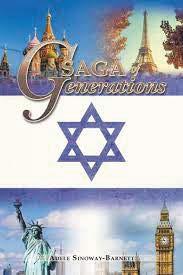

Richard and Liora Codor
A cartoon haggadah that follows the traditional steps of the seder. Written in a concise, contemporary style, it includes songs, games, recipes and prayers in English, Hebrew and transliterated Hebrew. It makes the seder fun and meaningful for family, guests and even for those “who don’t know how to ask.”

Softcover, 48 pages. Amazon.com, and Barnes & Noble, $11.95
J. Tamaren
Embark on a journey today through 18 timeless stories from the Book of Genesis. Enriched by colorful illustrations, the text also features key phrases in the Hebrew. Learn about the context of these ancient stories – their Mesopotamian, Egyptian, and Canaanite roots. Discover the connection across the millennia between these stories and the practices of Jews today. “I look forward to using this book in my Jewish Literacy courses, for both teens and adults.” – Rabbi Evette Lutman, Temple Beth-El, Las Cruces, New Mexico. The Book of Genesis is available at Amazon. See also its sequel, The Book of Exodus.

This art-filled book not only contains the entire traditional Hebrew text for use at a Passover seder, it has a new gender neutral translation, that is easy to read and to follow. With more than 80 collages to adorn and interpret the text, there are also useful commentaries to share. No teen need be bored at a seder again. Bringing someone unfamiliar to seder? Transliterations of basic prayers and Dayenu are included to help non-Hebrew readers participate. Ramaz graduate Marbach, who lives in England, has produced a stunning, fascinating and user-friendly seder companion.
www.collagehaggadah.com
Keeping kosher has never been more delicious. This exciting cookbook features 150 fun and flavorful kosher recipes inspired by dishes from around the world.
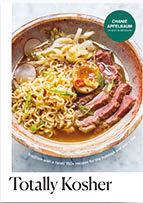
Homemade Chili Crisp, Miso Matzo Ball Soup, Kishke Corndogs, Tahdig Toast, Cauliflower Kasha Varnishkes, and Brownie Bar Hamantaschen, to name a few. From quick weekday meals to unfussy holiday fare, family and friends will always be coming back for more. Available wherever books are sold.

Mel Weiser
Days are bad in the Great Depression of the 1930s. But for little Willie Mittleman and the Mittleman clan in their Bronx, NY neighborhood, life is still good, proving that laughter and love will always be the lifesaving forces to rescue us from adversity and pain. A big-hearted gem. Funny, touching and insightful. For readers of all ages.
Available on Amazon.

A biography of Henny Fletcher Aronson who survived the German invasion of Lithuania, the Kovno Ghetto, the Stutthof concentration camp and a death march. Be with Henny as she lives through the German atrocities and see her loved ones destroyed by the Lithuanians as well as the Germans. Henny’s story is one of courage, hope and the will to live. Hopefully, her story will inspire those in dire conditions and remind us of what we as humans are capable of doing.
Available in h ard cover, soft cover, and audio at Amazon and Barnes and Noble.
To advertise here, please call Randi O’Connor at (212) 451-6221, or email roconnor@hadassah.org. Space is limited.
Over more than 74 years, ordinary men and women devoted their lives to help build a new Jewish state. Many of these pioneers are now aging, frail, impoverished and alone. They need our help.

With more than 7,000 volunteers and 120+ branches throughout Israel, Yad Sarah is dedicated to helping to provide for Israel’s less fortunate — especially those who have sacrificed so much, who have dedicated their lives to build a nation.
We provide home and health care support services that enable people in Israel to remain independent at home and in their own communities despite illness or frailty.
Return the favor of service to Israel's Builders by supporting Yad Sarah today.
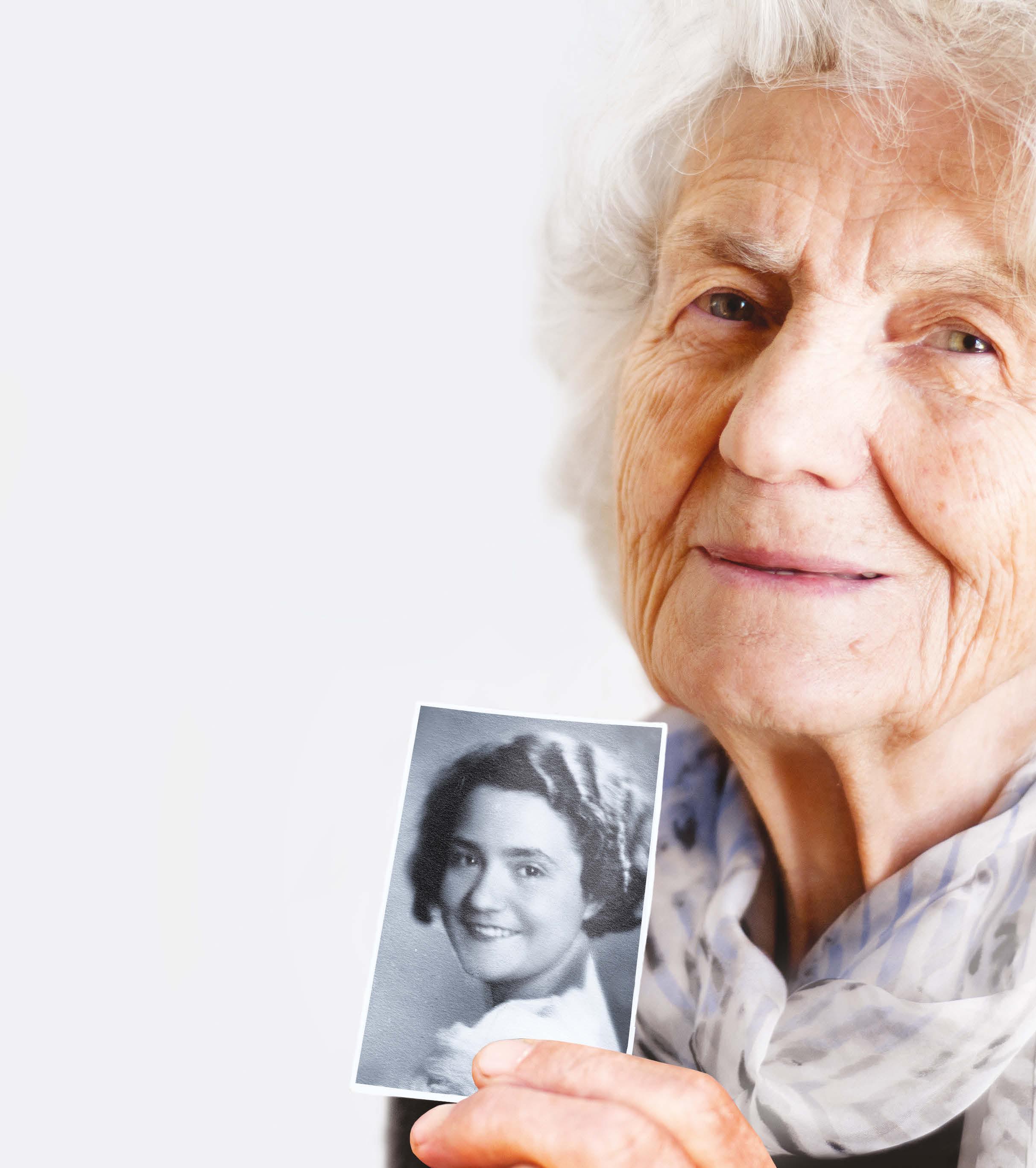
 By Joseph Lowin
By Joseph Lowin
How is the passover seder like, and unlike, the tenth commandment, “Thou shalt not covet”? In his 2011 book Beginnings, Israeli author Meir Shalev points out that the Bible does not prescribe a punishment for people who covet. Looking at two related roots for the word obligation—ב-י-ח (het-yod-vet) and ב-ו-ח (het-vav-vet)—a similar issue might exist in the Haggadah.
According to the Haggadah, “In every generation, םָדָא לָכּ בָיַּח (hayyav kol adam), everyone must imagine having participated in the Exodus from Egypt.” What is the punishment for not doing so? As with coveting, the text doesn’t say. However, the Haggadah does record an obligation using ב-ו-ח (het-vav-vet), a root that implies that the failure to act has consequences, even if the punishment is not mentioned explicitly. If a seder participant fails to pronounce three words—Pesah, matzah, maror—that person
(lo yatsa yedei hovato), “has not fulfilled the obligation” to tell the Passover story.
Each of these roots is found only once in Scripture. In the Book of Daniel, having been taken into captivity to prepare for military service in Nebuchadnezzar’s army, Daniel pleads with his guard to serve him only vegetarian food. The guard agrees after eliciting Daniel’s promise to maintain military vigor. If not, says the guard,
ְו (ve-hiyyavtem et roshi lamelekh), “As punishment, the king will have my head.” The prophet Ezekiel uses the root for business ethics, suggesting that Israelite lenders ביִשָׁי
(hov yashiv), return for the night a poor debtor’s only garment, rendered here as a בוֹח (hov), security.
A Talmudic case study uses one of our roots. A scholar immersed in learning while walking in a forest looks up to admire a tree. The Sages, fearing that this closeness to nature will lead to idolatry, decree that he וֹשְׁפַנְבּ
(mit-hayyev be-nafsho), “puts his soul in mortal danger.” This story inspired Cynthia Ozick’s award-winning 1971 novella, The Pagan Rabbi, about a rabbi whose deep connection to nature leads him to fall for a wood nymph.
There are many usages of both roots in Hebrew: While תוּביַּחְתִה (hithayyvut) and תוּבָיוּחְמ (me-huyavut) both mean commitment, the first often refers to a legal obligation and the second to being compulsively benevolent. In Israel, 5 is the age for הָבוֹח ןַגּ (gan hova), compulsory kindergarten, and 18 for הָבוֹח סוּיִּג (giyyus hova), compulsory military service. Today, the Israel Defense Forces’ formal positive response to an order, יִבוּיִּח (hiyyuvi), “Affirmative!,” has become Israeli slang for “Yes.”

But can this benevolence and positivity become antidotes to negativity implied in the eating of the seder’s bitter herbs? That’s the Fifth Question.
Joseph Lowin’s columns for Hadassah Magazine are collected in the books HebrewSpeak , Hebrew Talk and the recently published Hebrew Matters, available at gcrr.org/product-page/hebrew-matters
Our new website is just like Hadassah. Bold, powerful and action-oriented.

Ambassador deborah lipstadt has devoted her entire career to studying, teaching and decrying antisemitism and Holocaust denial. Now, as the Biden administration’s special envoy to monitor and combat antisemitism, she’s got a new platform from which to tackle what she describes as “one of the longest, oldest hatreds.”

Nearly a year into the job, the author of several books, including History on Trial: My Day in Court with a Holocaust Denier, about her legal battle against David Irving, and Antisemitism: Here and Now, has been traveling around the world to strategize how best to confront the alarming rise of Jew hatred. As part of that mission, the longtime Emory University professor accompanied Second Gentleman Douglas Emhoff, the husband of Vice President Kamala Harris, on a trip to Germany and Poland in January, which included a stop at Auschwitz.
In a Zoom interview with Hadassah National President Rhoda Smolow during Hadassah’s National Assembly meetings in January, Lipstadt spoke about her new role. That interview, excerpted here, has been edited for brevity and clarity.
What is fueling the current rise in antisemitism in the United States, globally and especially online?
There is no easy answer. Antisemitism has the dubious distinction of being one of the longest, oldest hatreds, dating from ancient times, yet the forms it takes keep evolving. So it’s hard to fight.
Second, antisemitism is ubiquitous. It comes from all places on the political spectrum, also from Christians, Muslims, atheists and it even comes from Jews. It comes from countries that have large Jewish populations and those with very small Jewish populations.
And today there is a delivery system of unbelievable speed and reach through social media. Ideas that once would only reach a limited number of people now can reach a large community in no time.
The final reason is that we’ve seen a rise of extremist ideology, white supremacy, racial and ethnic violent extremism, which at the moment is one of the—not the only—primary sources of antisemitism.
How can we fight antisemitism mas‑
querading as criticism of Zionism?
Criticism of the State of Israel’s policies or actions is not antisemitism. It’s very important to distinguish between when a person is expressing a view that you think is politically wrong or unjustified and when that person is engaging in antisemitism. Some who are very critical of Israel and oppose the existence of Israel, for example, are antisemites but recognize that if they couch their antisemitism in criticism of Israel, it is more acceptable.
How do the United States’ efforts to combat antisemitism compare to other nations?
There’s a very serious effort going on right now, with all relevant agencies meeting together to say: What can we do to fight this scourge? The government alone cannot solve the problem. It calls for a whole-of-society approach.
I am finding tremendous support within our administration, and one of the people who has taken the lead is Second Gentleman Doug Emhoff. He reached out to me and said, “I want to work with your office and
be vocal on this,” and of course his willingness to be vocal has greatly enhanced attention to the issue.
How can Hadassah members best contribute to fighting antisemitism in all its forms?
Speak up, speak out! Silence is not an option. You can’t fight hatred in silos. You can’t say I only care about antisemitism, but I don’t care about any other hatred. Haters don’t stop with one group. The killers in Buffalo, in Pittsburgh and Poway were all far-right extremists who hate Black people, but they blame the Jews for allowing them to advance. It’s interconnected and we’ve got to fight them all.
I’ve been really encouraged by the increased recognition that this is not a niche issue only for Jews. Antisemitism has broader implications in that it is also the canary in the coal mine for democracy. No society, no country has tolerated the existence of antisemitism and stayed a healthy democracy. That’s something to keep in mind—when you’re fighting for the welfare of Jews and Jewish communities, you’re also fighting for the future of democracy.
Westbury, New York
established several charitable gift annuities with Hadassah. It is a win-win gift. They will receive fixed monthly payments for their lifetimes and the remainder of their gifts will support the medical breakthroughs of tomorrow.

Check out our new, higher rates!
Charitable Gift Annuity Rates
Free
Supporting the innovative and life-sustaining work of Hadassah Medical Organization (HMO) in medical research and treatment is deeply important to Merry and Richard Slone, which is why they have 1.800.428.8884
The payments you will receive depend on your age and the amount of your gift. Contact us for a personalized example or to learn about ways to include Hadassah in your estate plan.
NEW OPTION! You may be eligible to fund your CGA using your IRA. This option comes with special rules, so contact us to see if you qualify.
*Rates as of Jan. 1, 2023. Rates are fixed when annuity is established. Rates are also available for two-life gift annuities. If you reside in New York, please contact us directly as your rates may vary slightly. Minimum age: 65 | Minimum contribution: $5,000
The information and content contained herein are intended for educational purposes only and are not intended to provide legal, tax or other professional advice or to be relied upon. For such advice, please consult an attorney, tax advisor or accountant. References to estate and income taxes include federal taxes only and are subject to change. State income/estate taxes and/or other state laws may impact your results.
The solicitation disclosure on page 56 is incorporated in this advertisement.
Charitable deductions are allowed to the extent provided by law. Hadassah shall have full dominion, control and discretion over your gifts (and shall be under no legal obligation to transfer any portion of a gift to or for the use or benefit of any other entity or organization). All decisions regarding the transfer of funds to or for the benefit of any other entity or organization shall be subject to the approval of the Board or other governing body of Hadassah.
California residents: Annuities are subject to regulation by the State of California. Payments under such agreements, however, are not protected or otherwise guaranteed by any government agency or the California Life and Health Insurance Guarantee Association. Oklahoma residents: A charitable gift annuity is not regulated by the Oklahoma Insurance Department and is not protected by a guaranty association affiliated with the Oklahoma Insurance Department. South Dakota residents: Charitable gift annuities are not regulated by and are not under the jurisdiction of the South Dakota Division of Insurance.
HADASSAH, THE WOMEN’S ZIONIST ORGANIZATION OF AMERICA, INC.
“Hadassah Medical Organization’s cutting-edge research brings hope to people with neurological and other diseases. The Slone Family is proud to support this wonderful endeavor.”
—Merry Slone, Old
Because of you, new discoveries are transforming lives.
Destination-inspired boutique ships | The most all-inclusive amenities | Exceptional quality | Highest service standards
Discover our collection of dedicated Jewish Heritage river cruises that enable you to explore Jewish history and culture. These in-depth itineraries dive into Central Europe’s enduring Jewish legacy with visits to museums, memorials, synagogues and more.
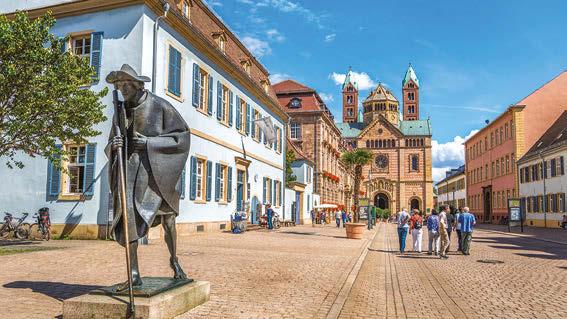
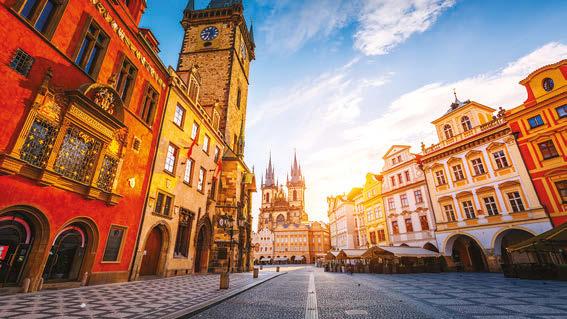

REMARKABLE RHINE & HISTORIC HOLLAND
11 Days | Amsterdam to Basel River Queen

DELIGHTFUL DANUBE & PRAGUE
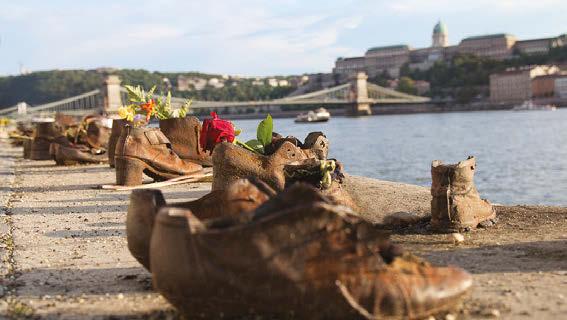
10 Days | Budapest to Prague S.S. Beatrice
DELIGHTFUL DANUBE


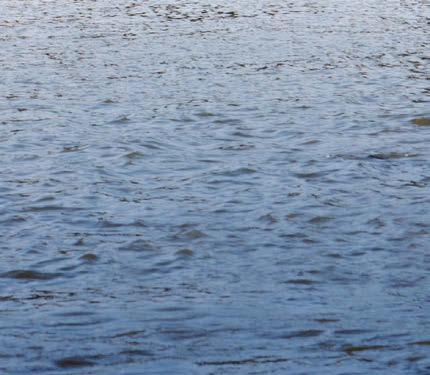

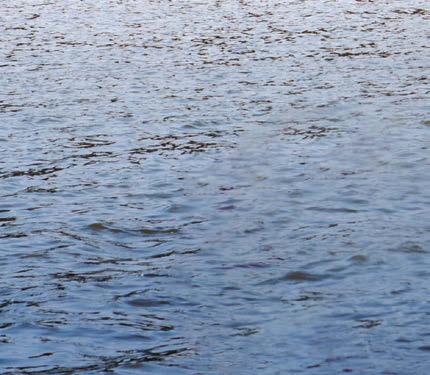
8 Days | Budapest to Nuremberg
S.S. Beatrice
SAVE UP TO $1,500 ON SELECT CRUISES FOR A LIMITED TIME
To learn more, contact your Travel Advisor, call 800-246-0295 or visit Uniworld.com/Jewish-Heritage.